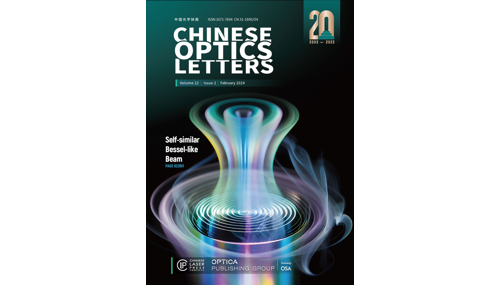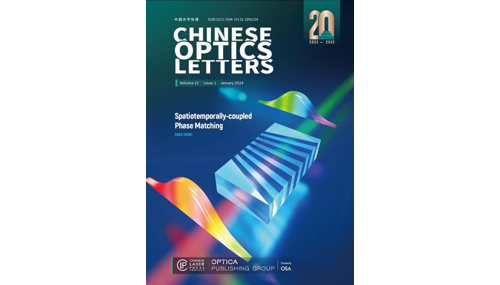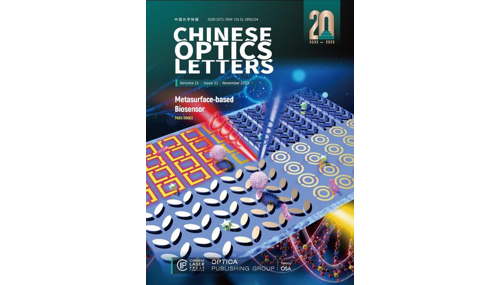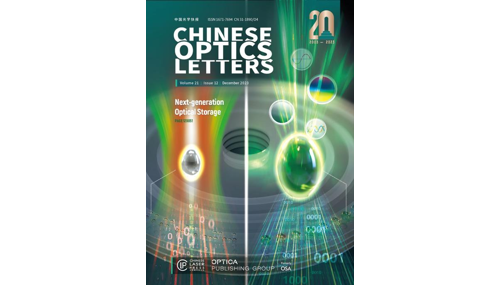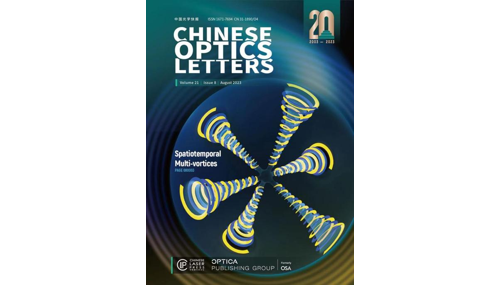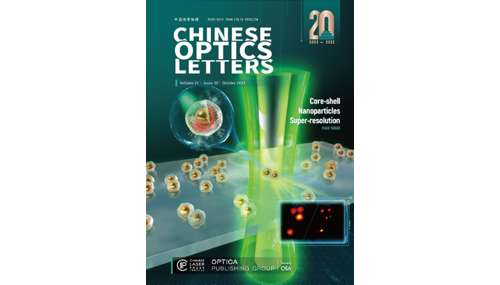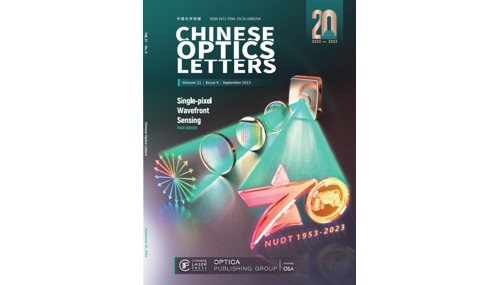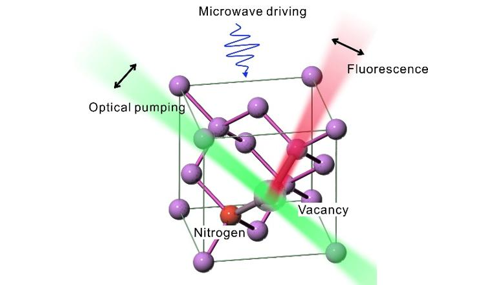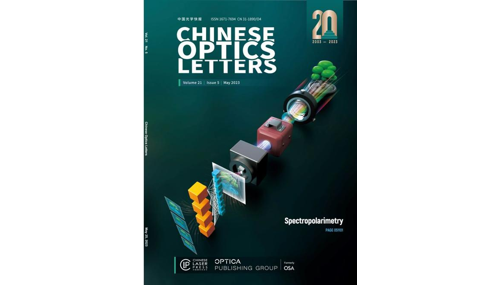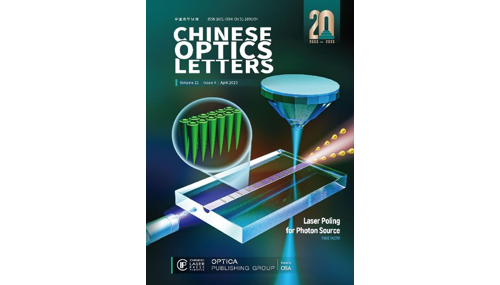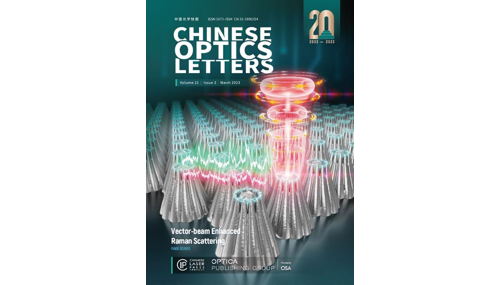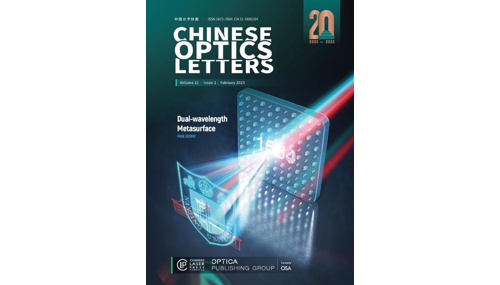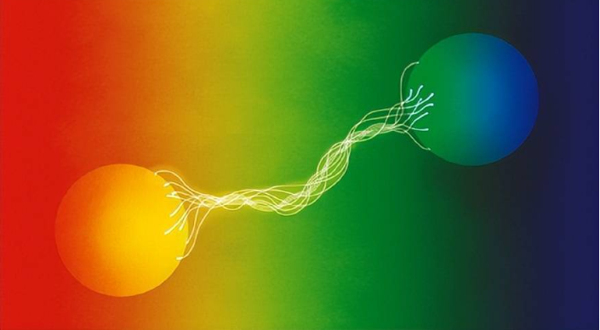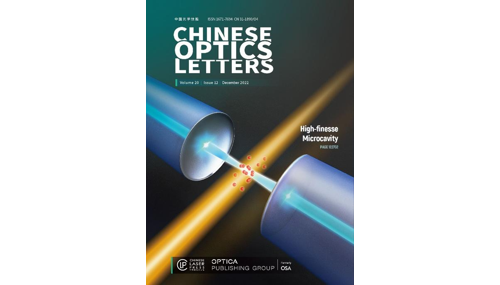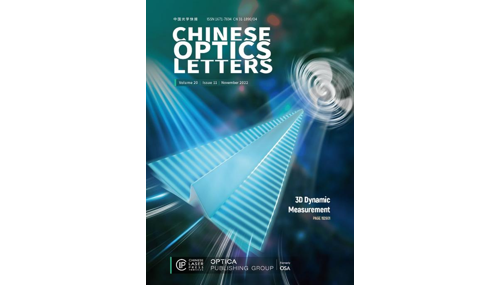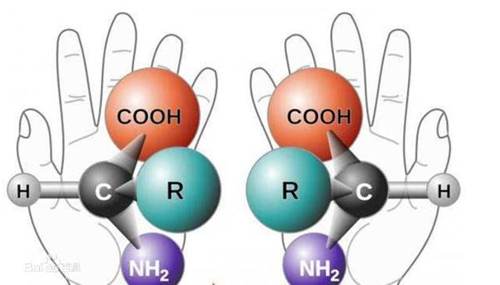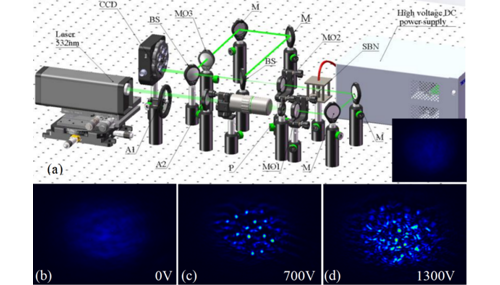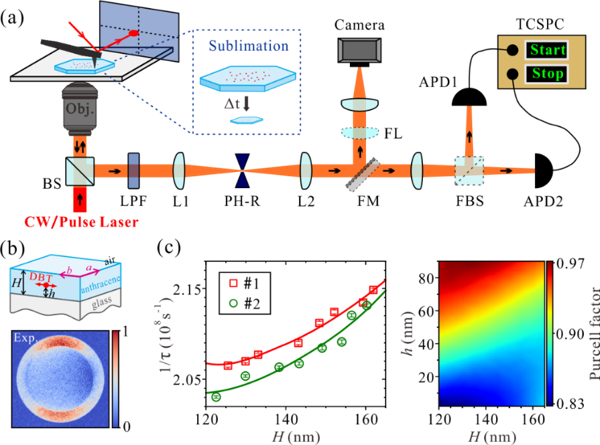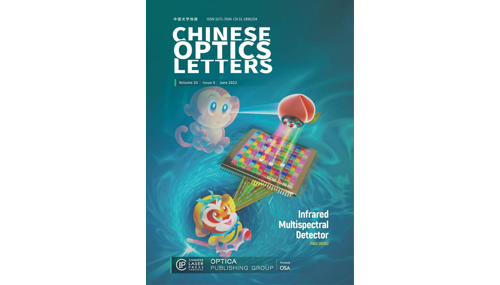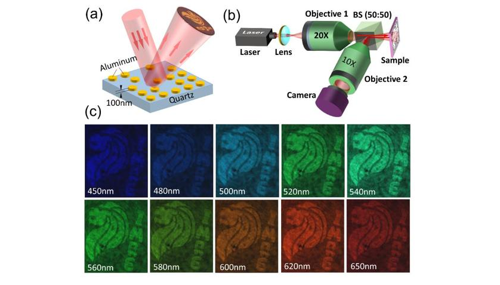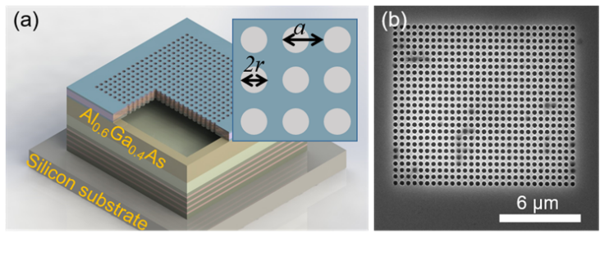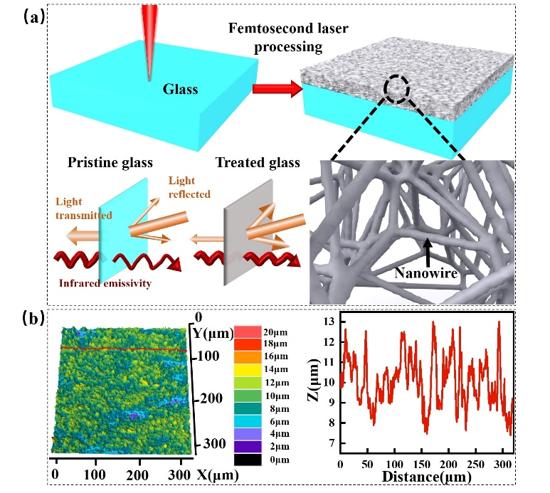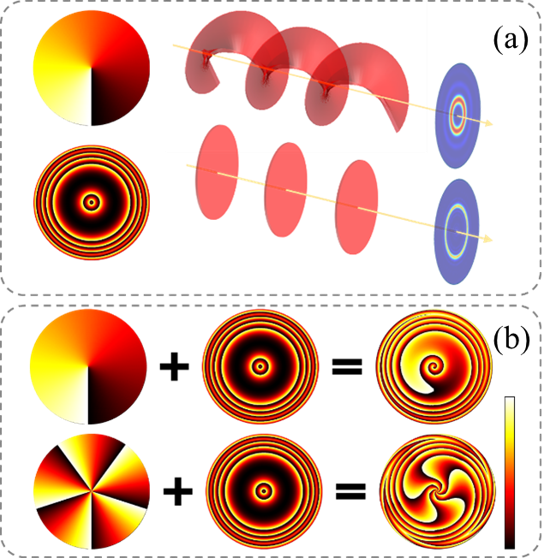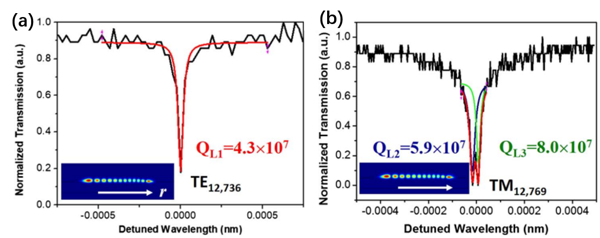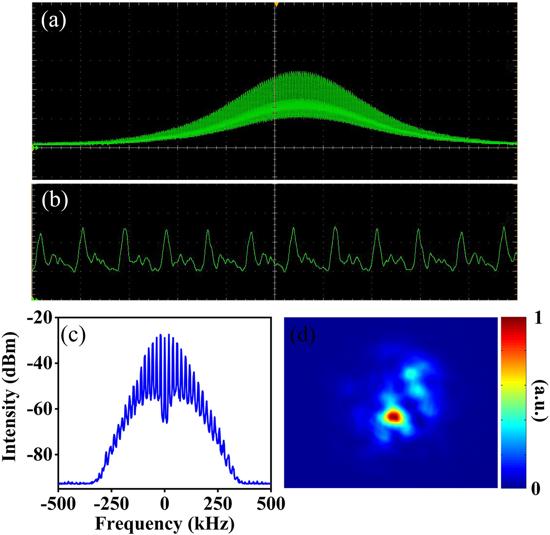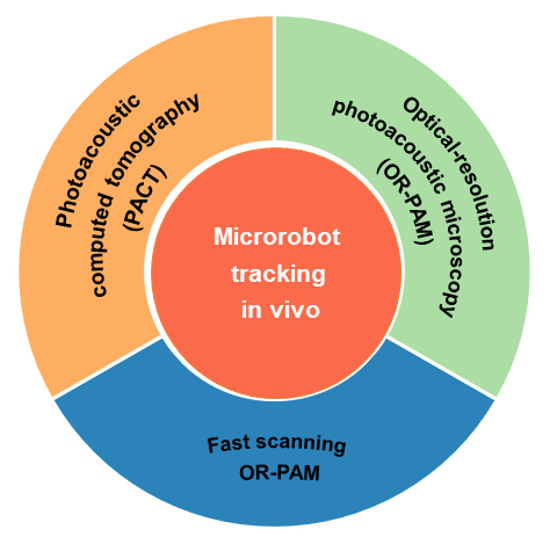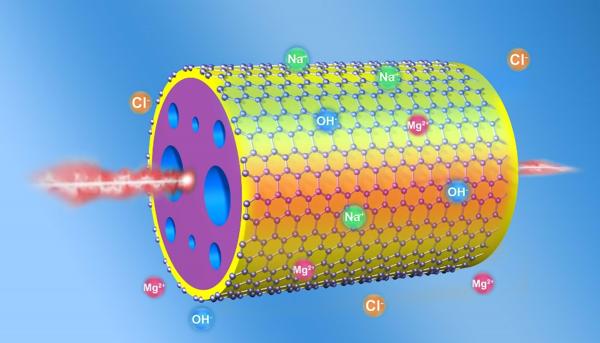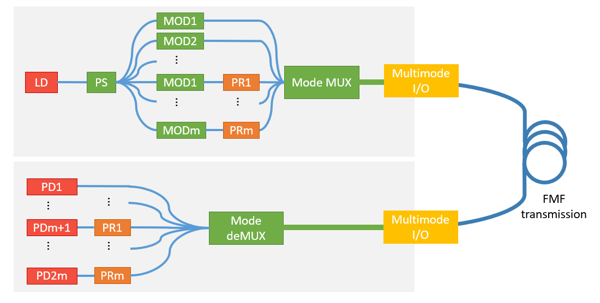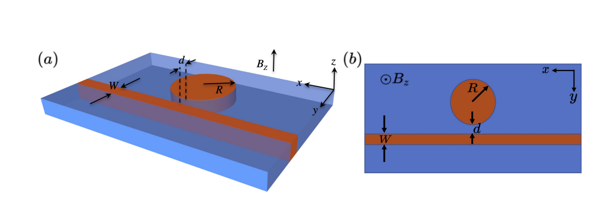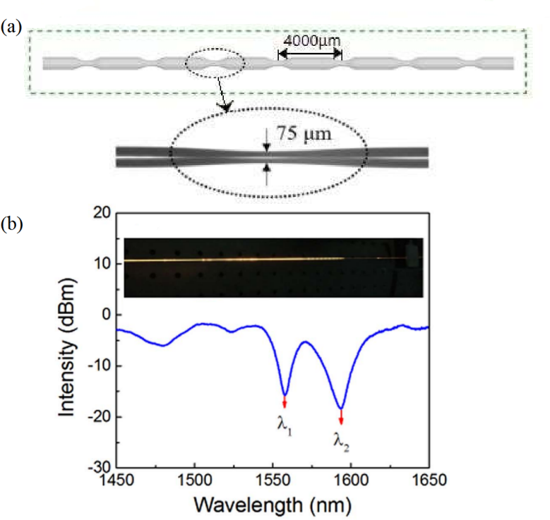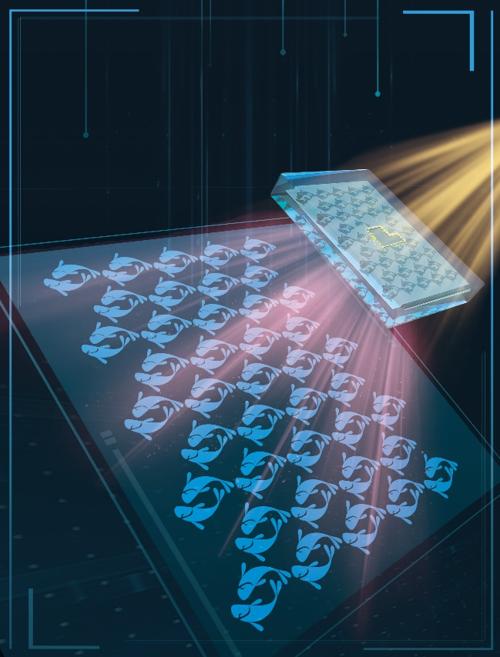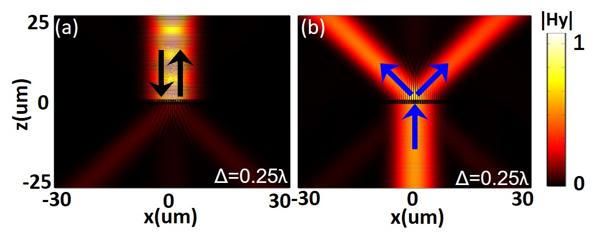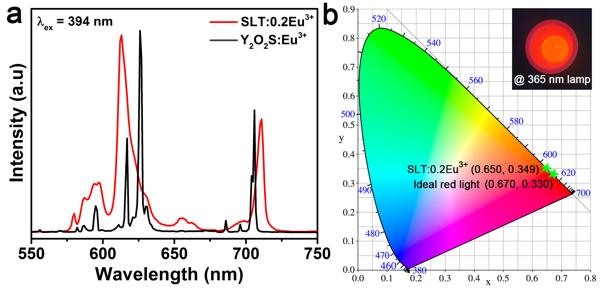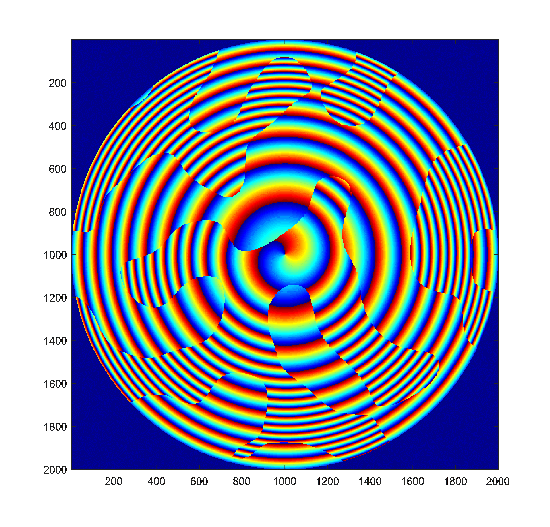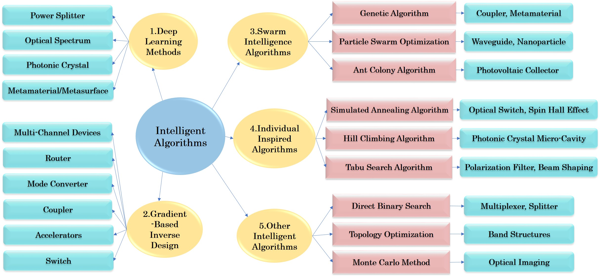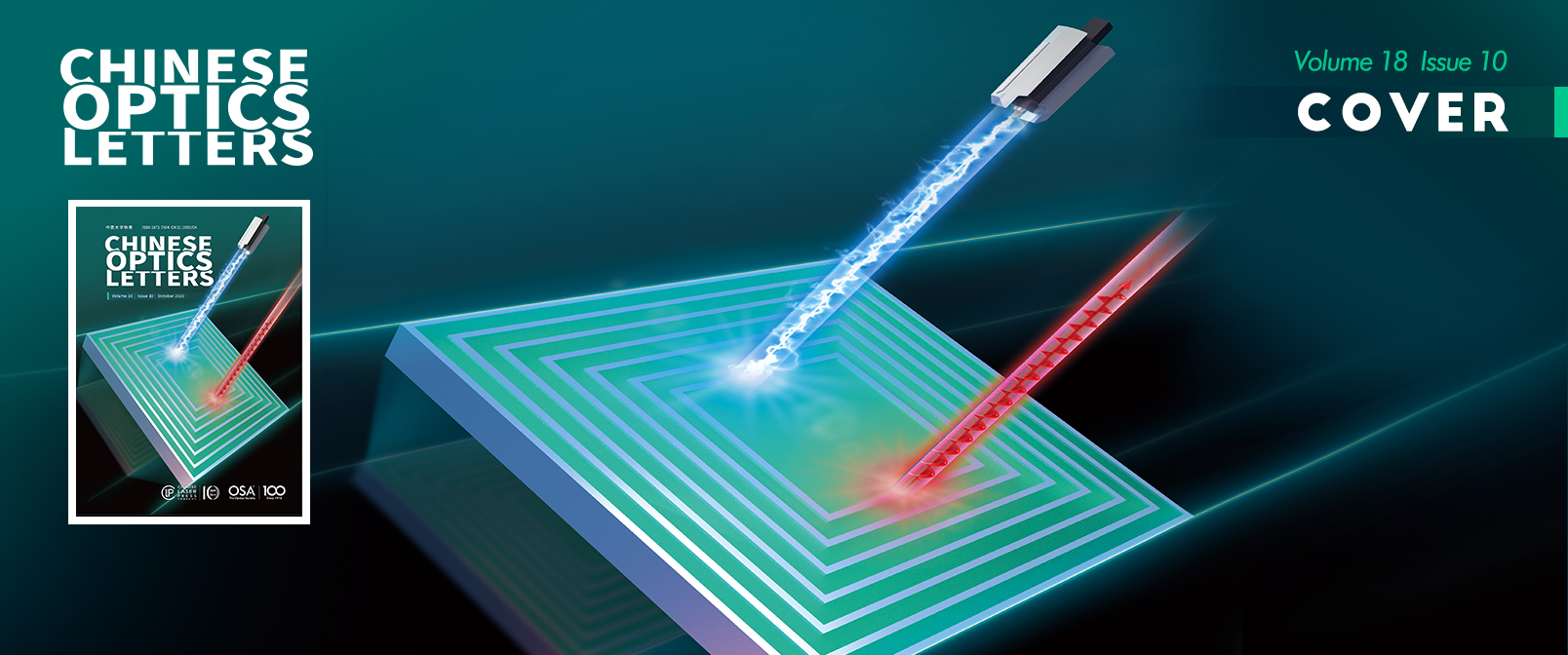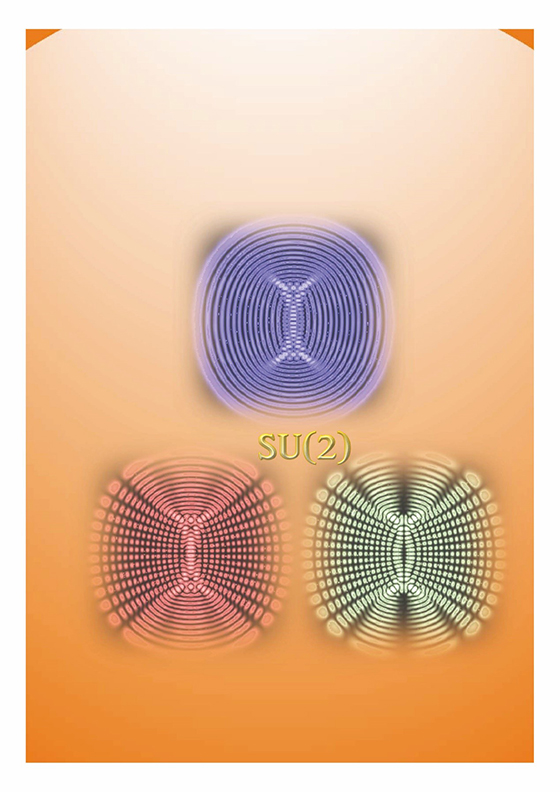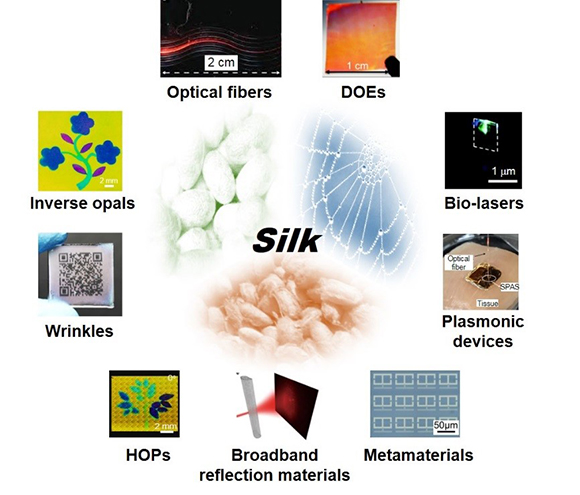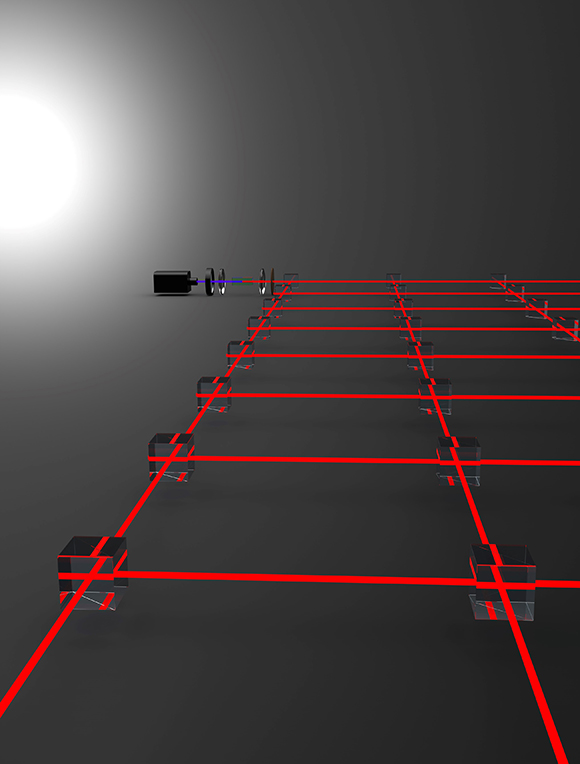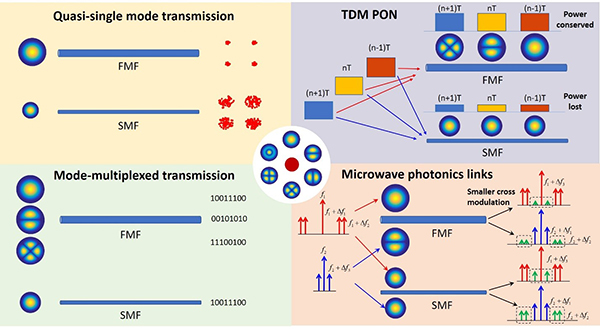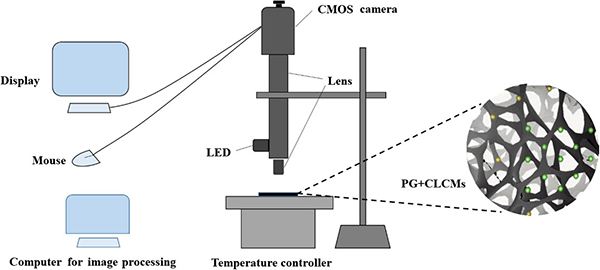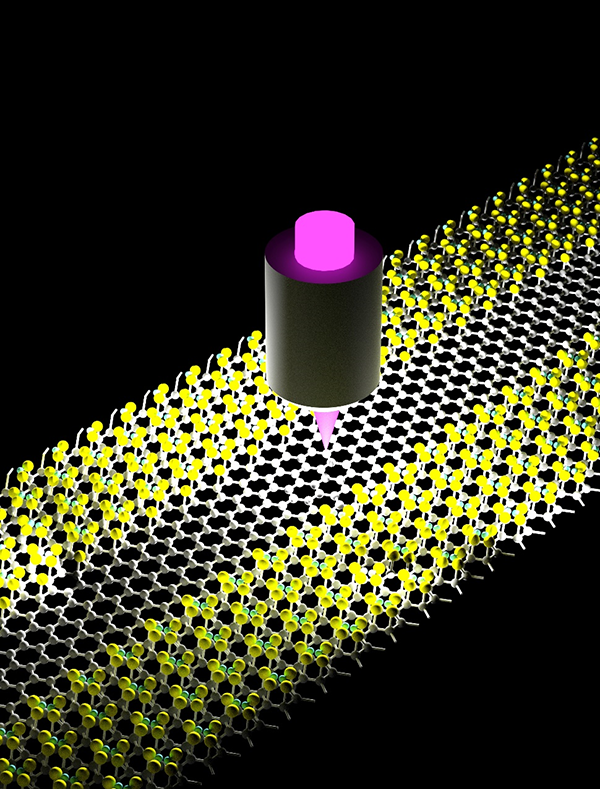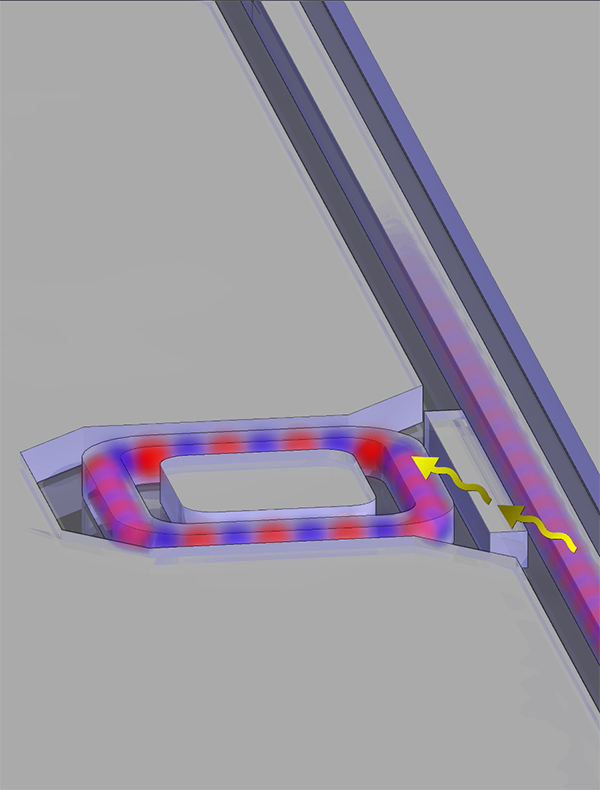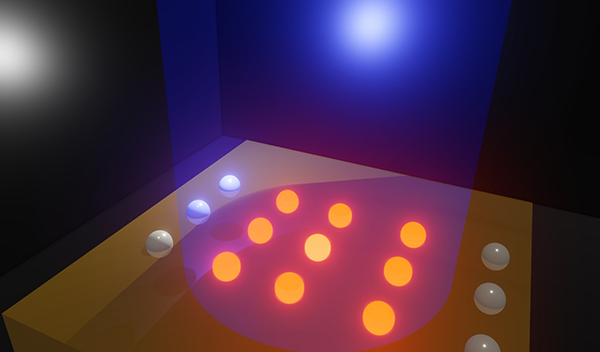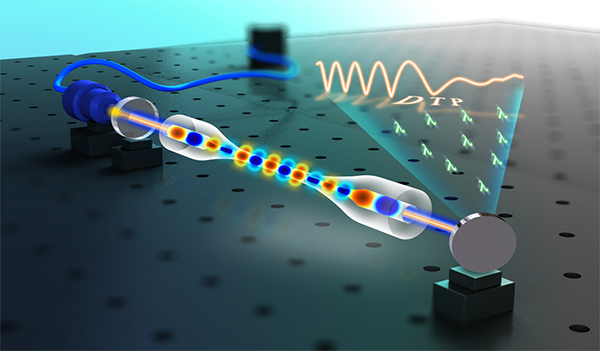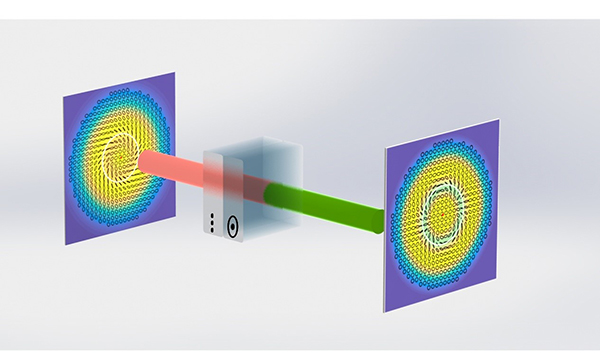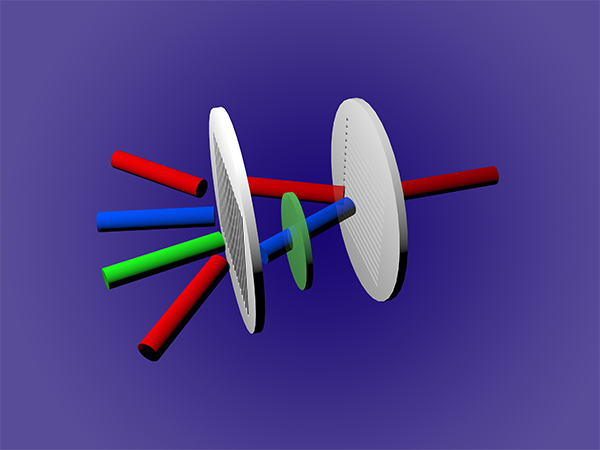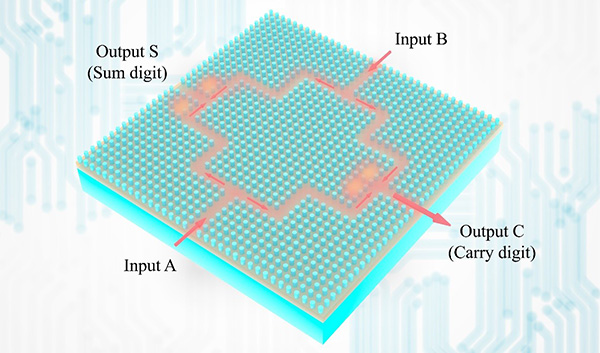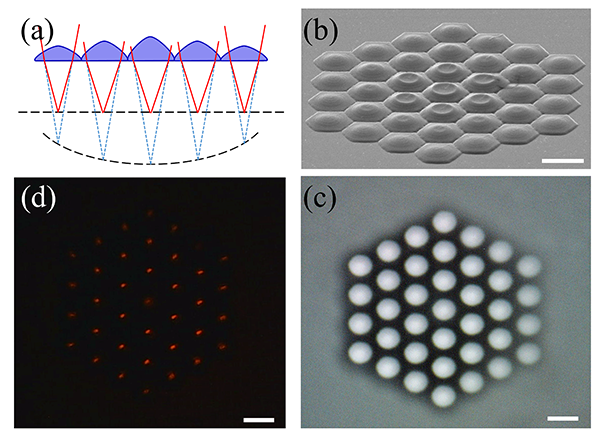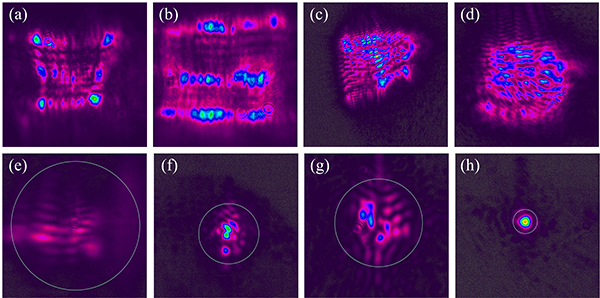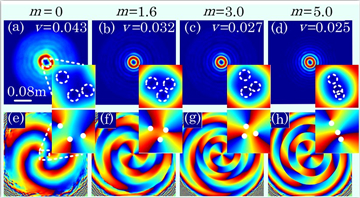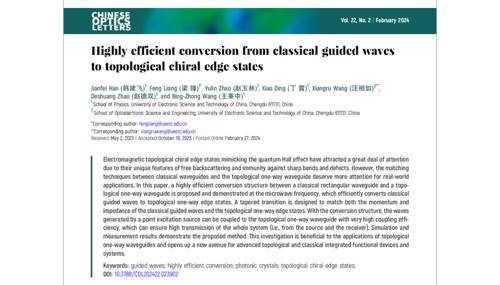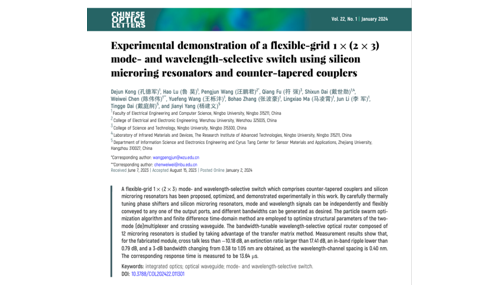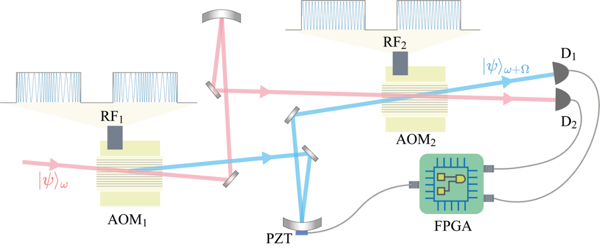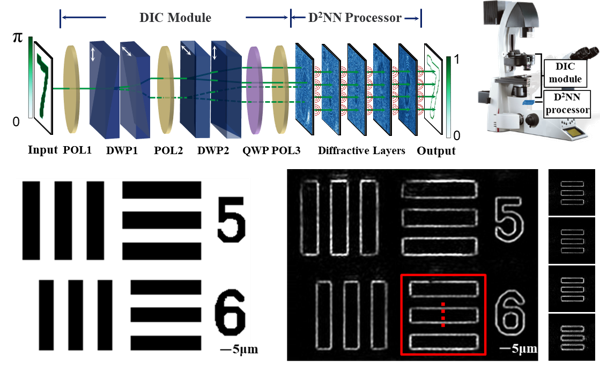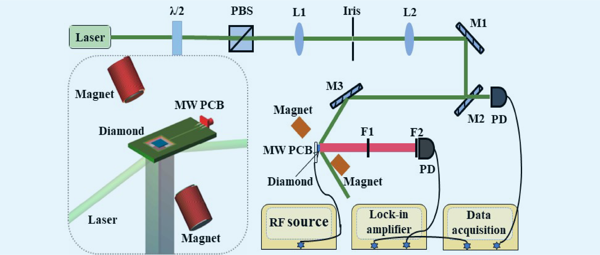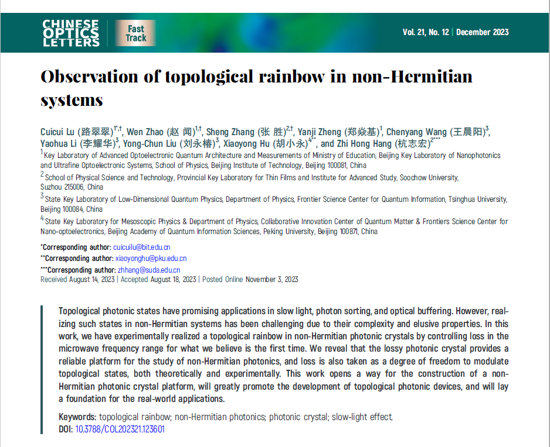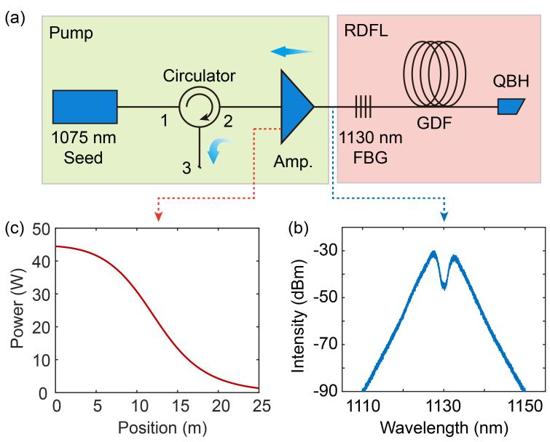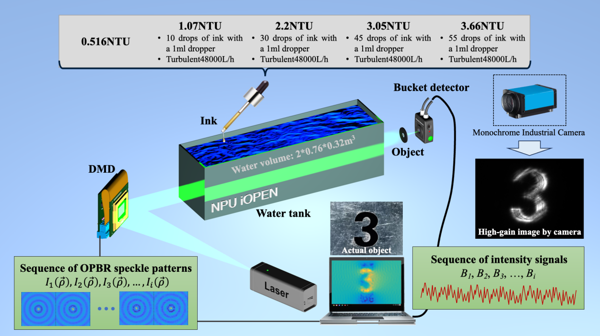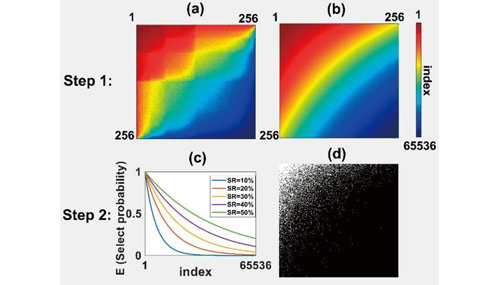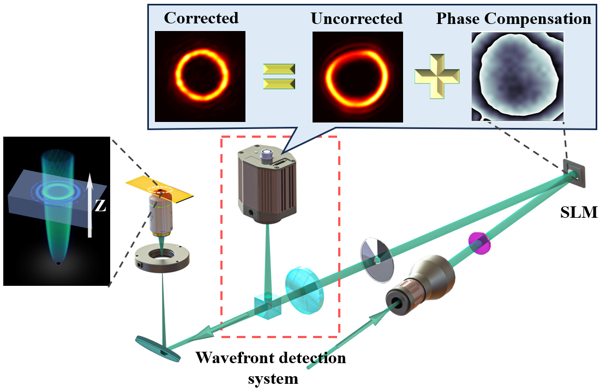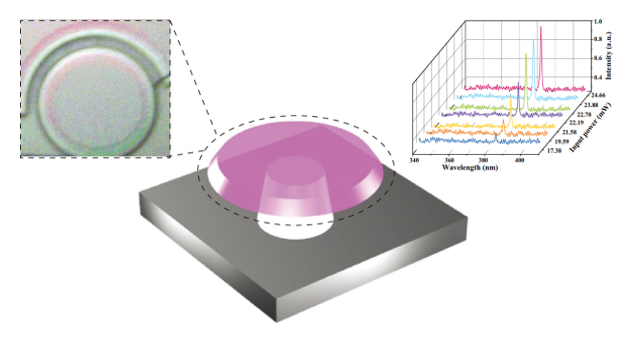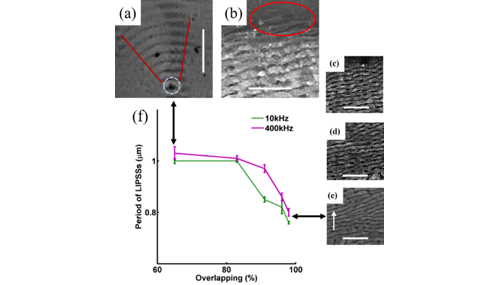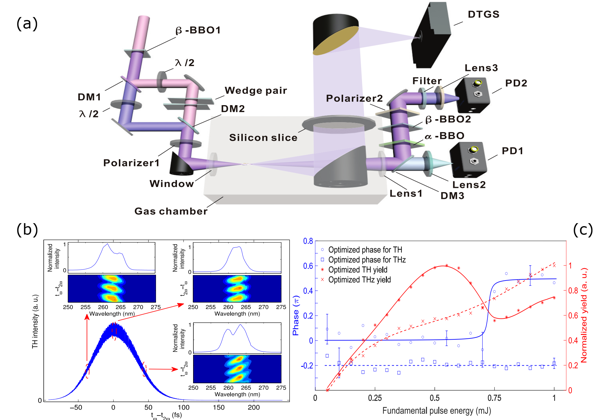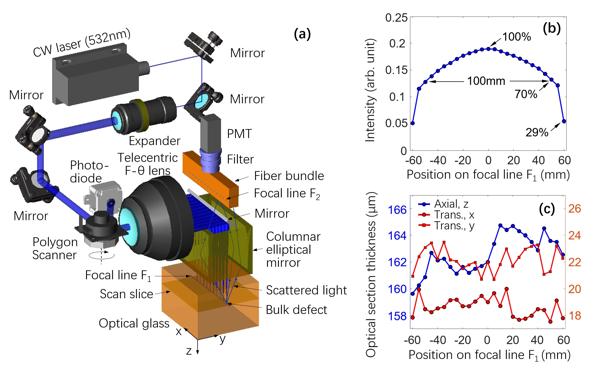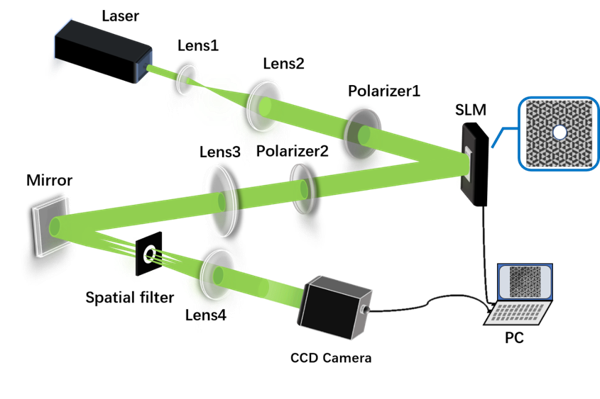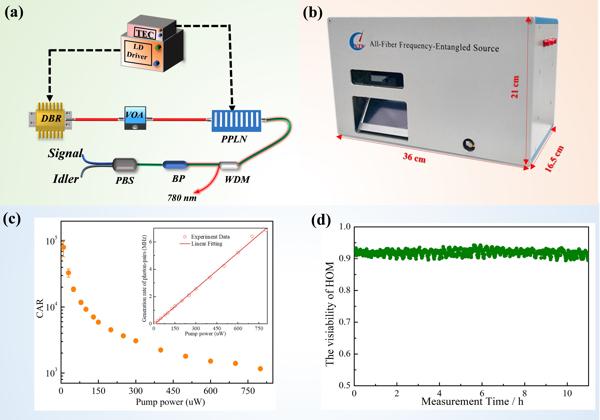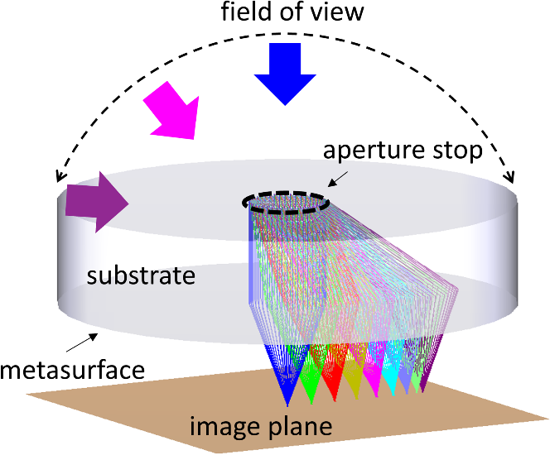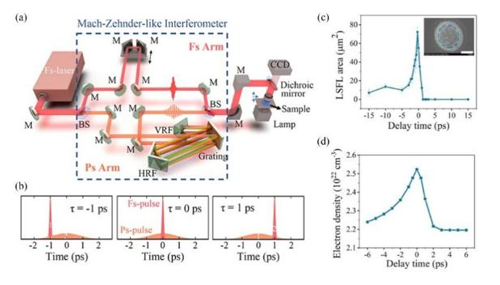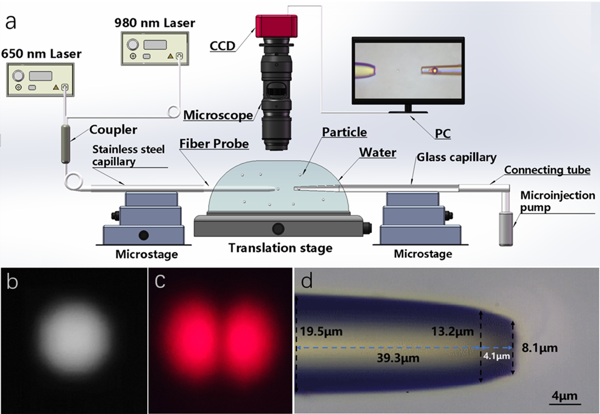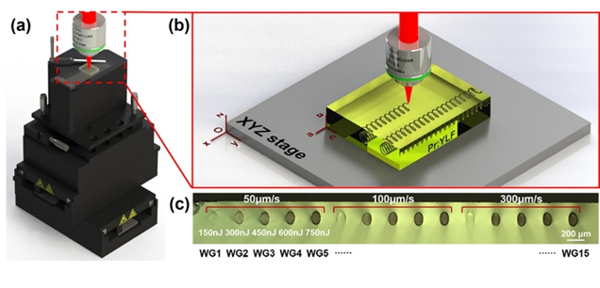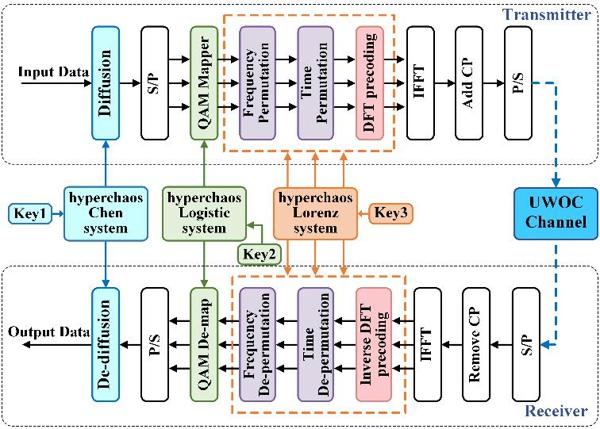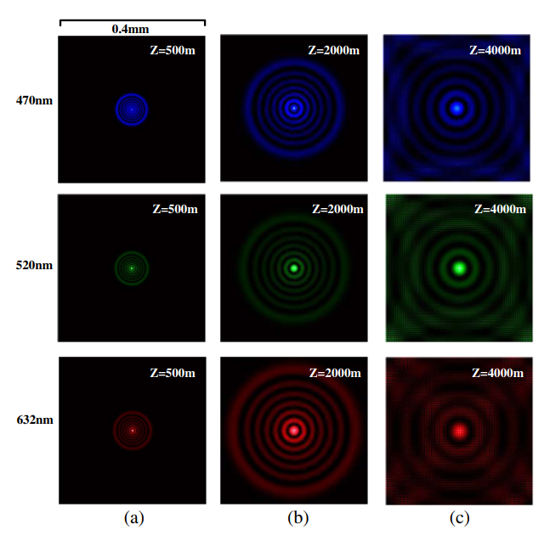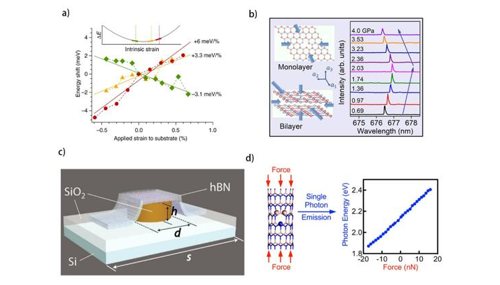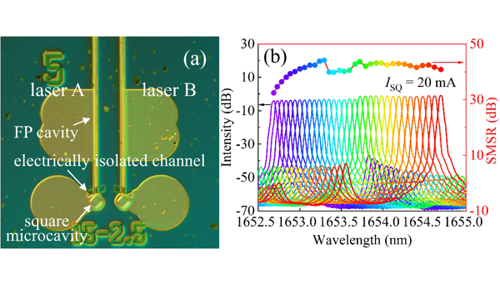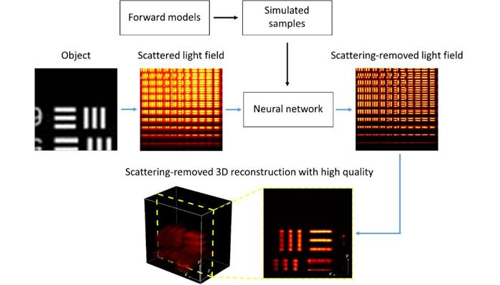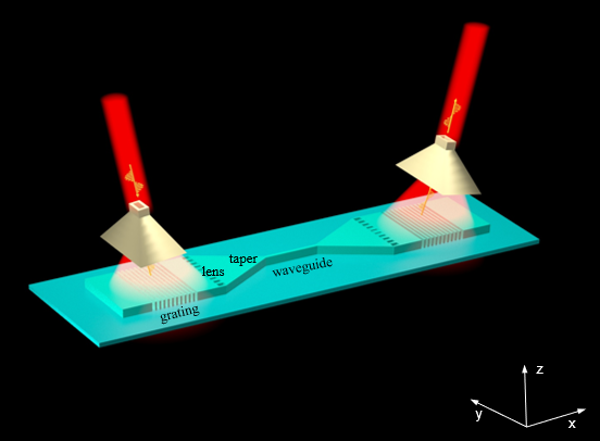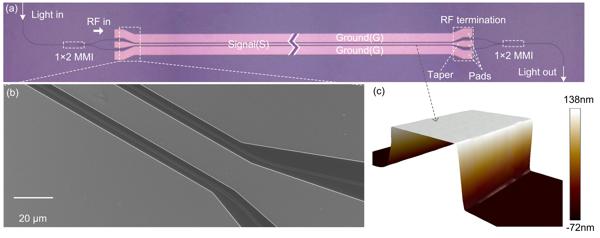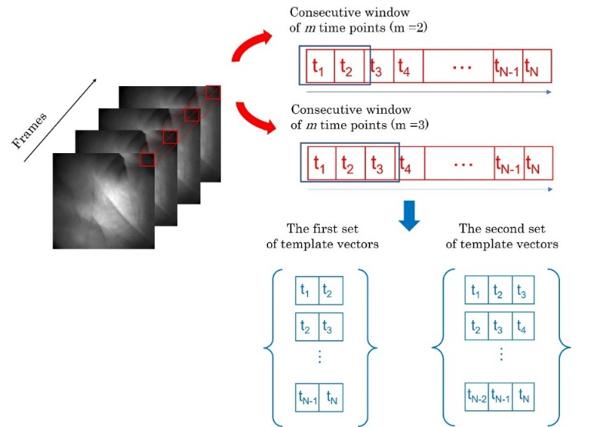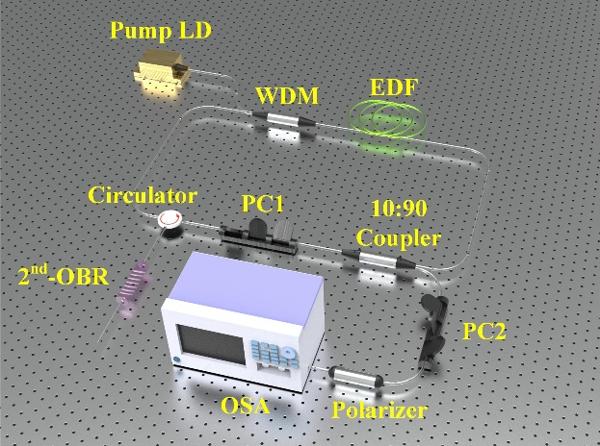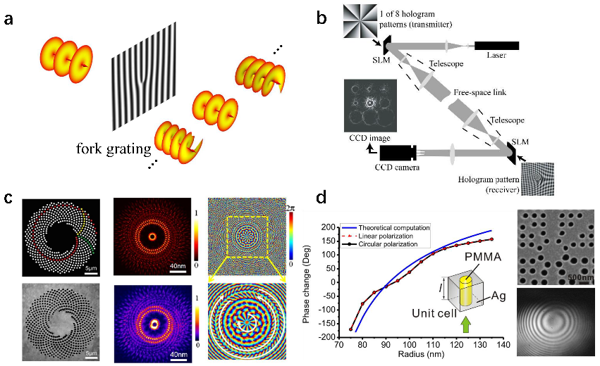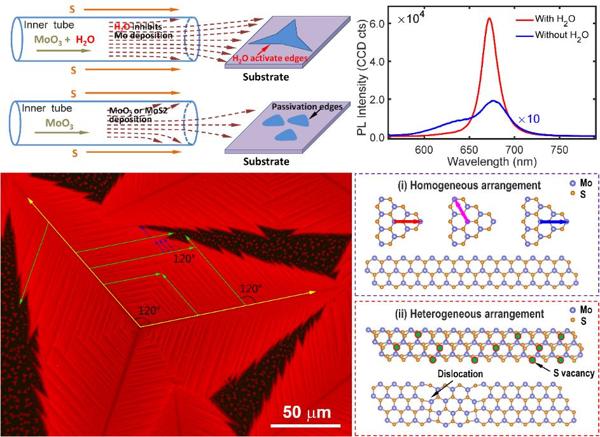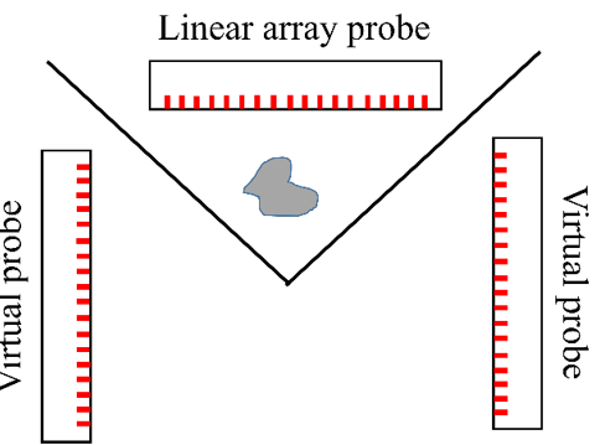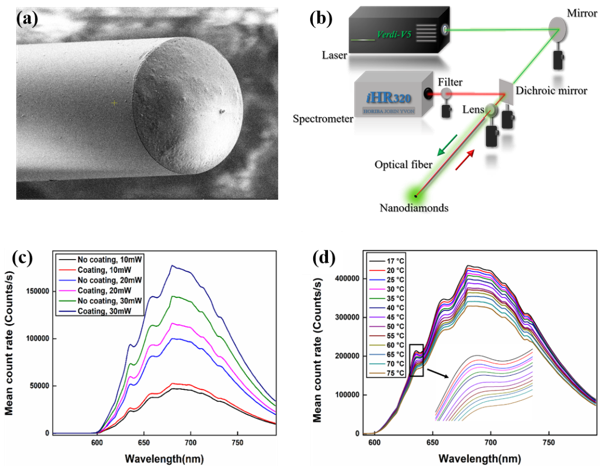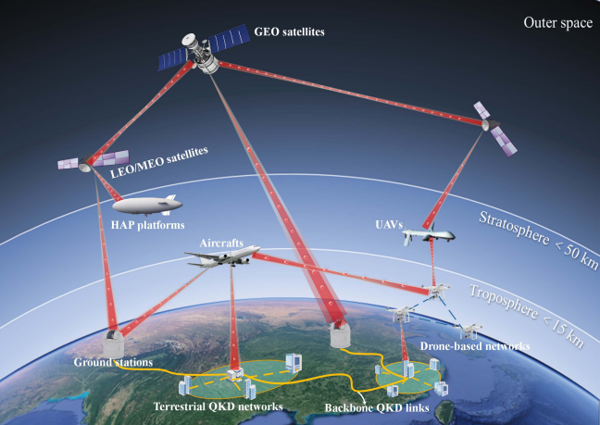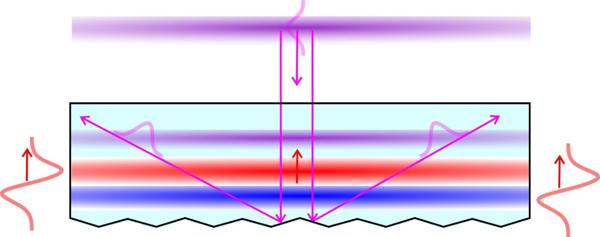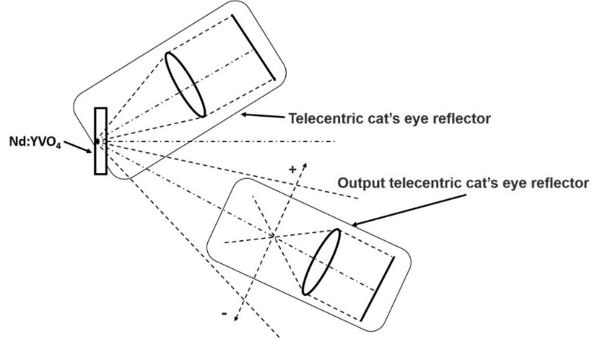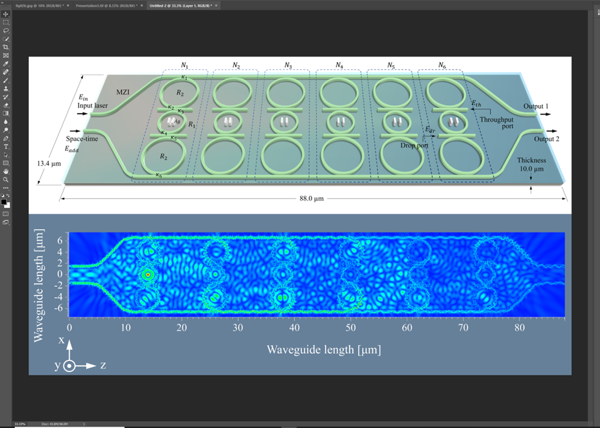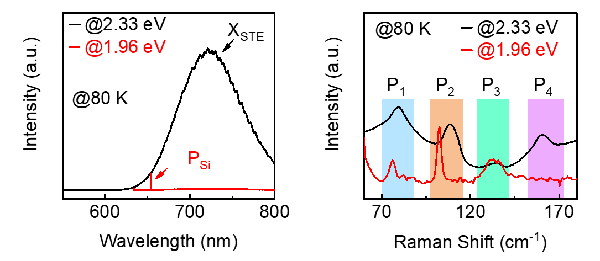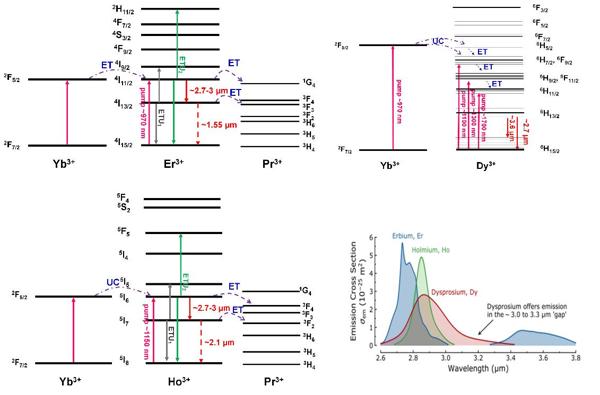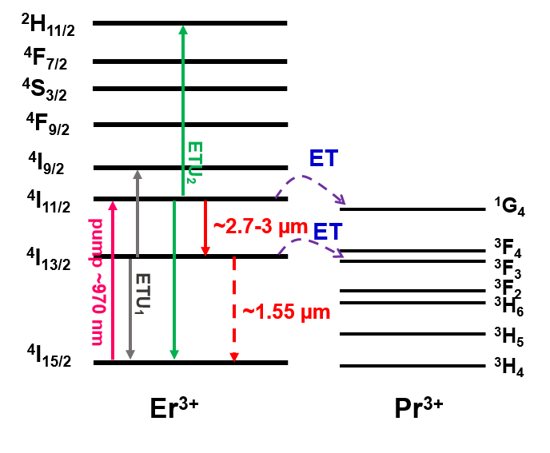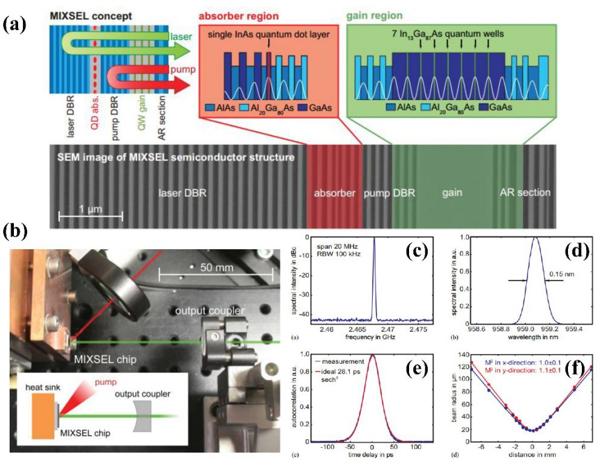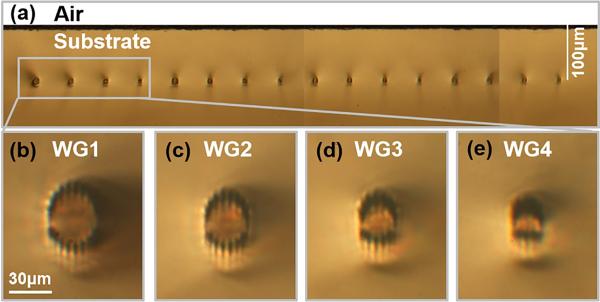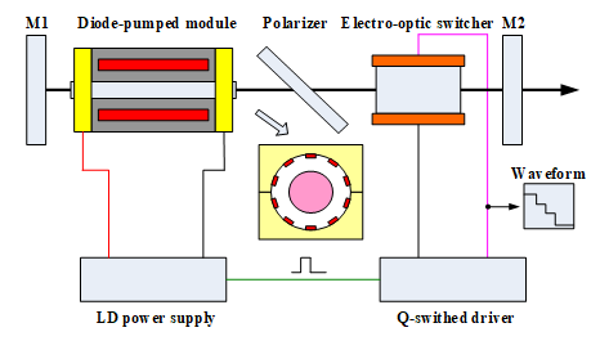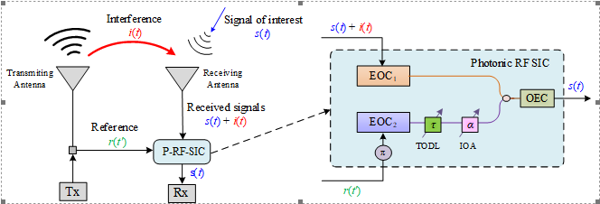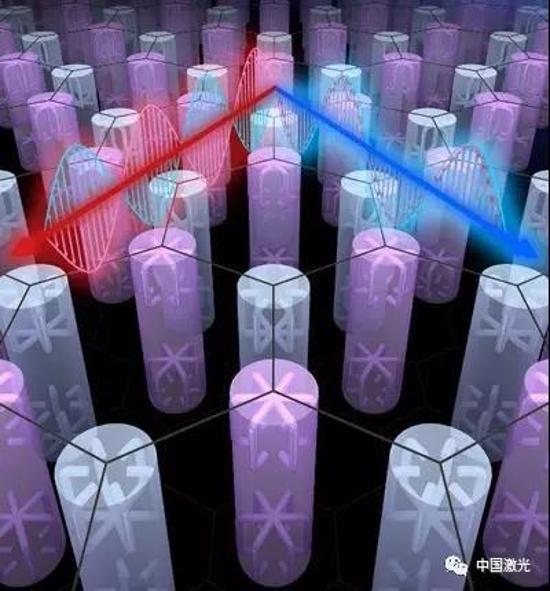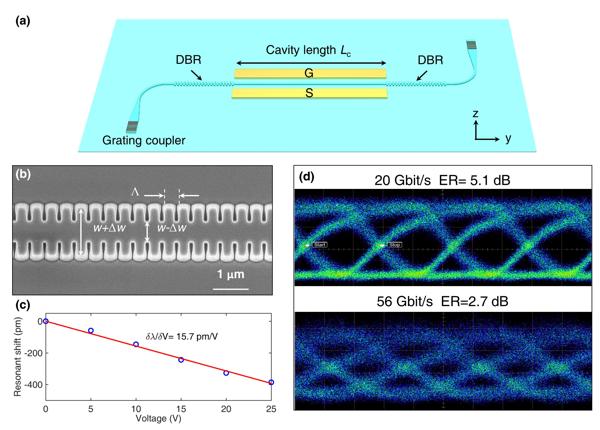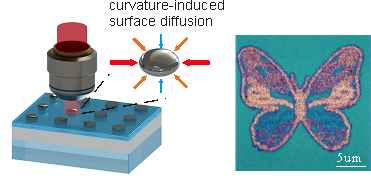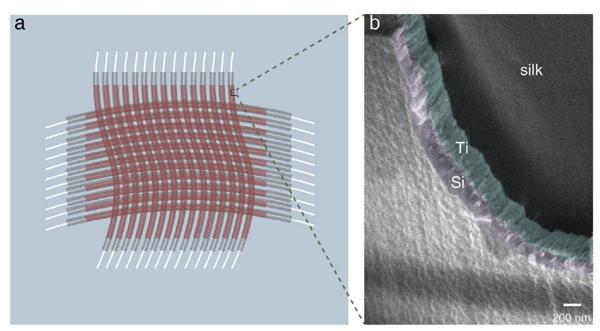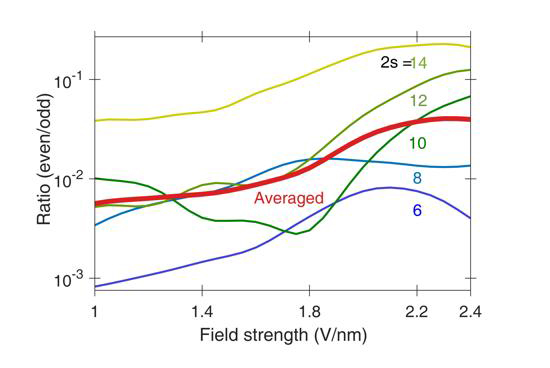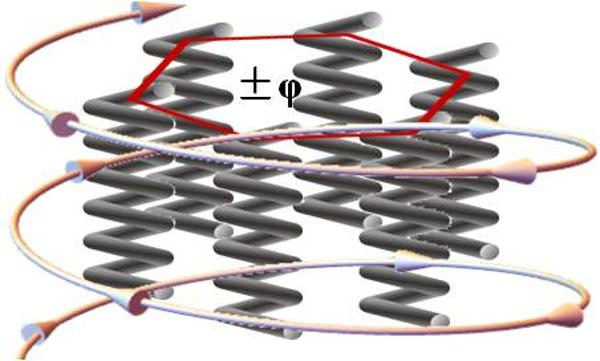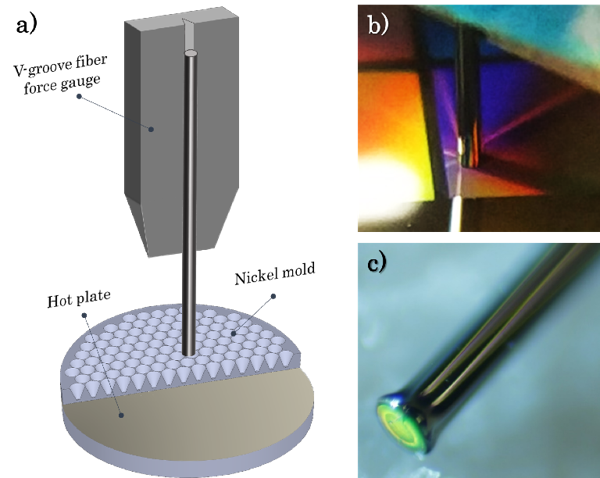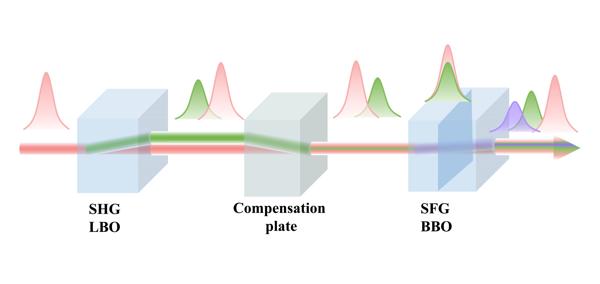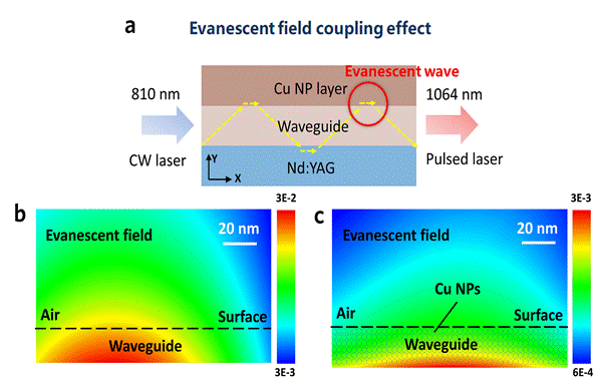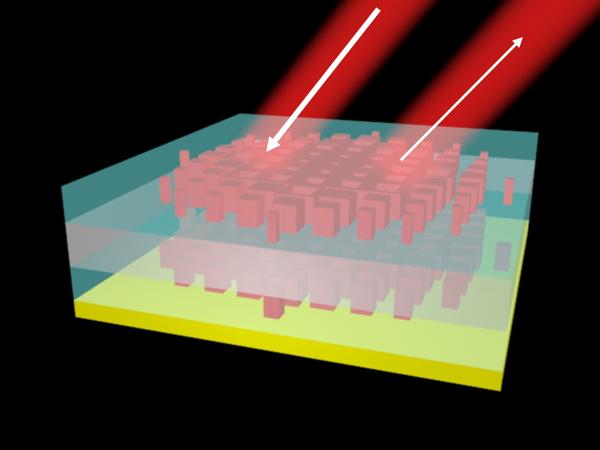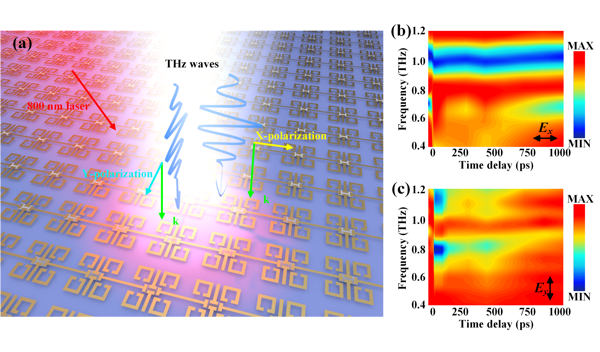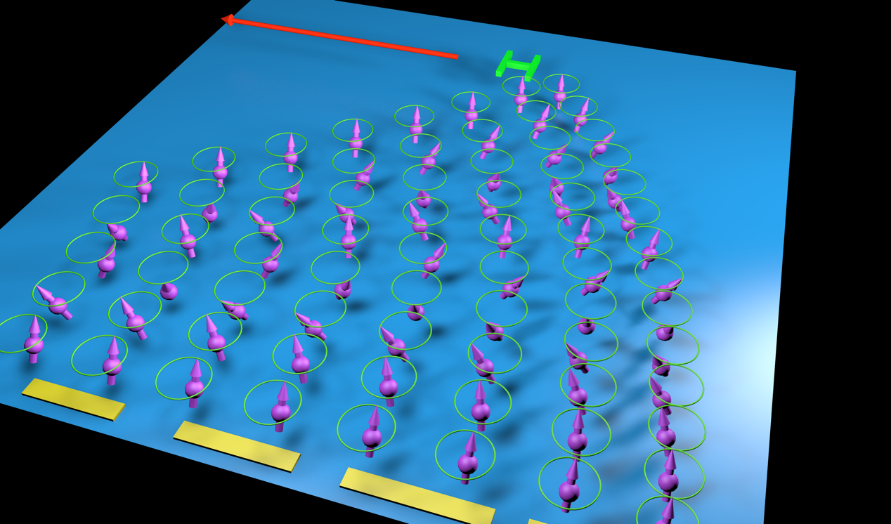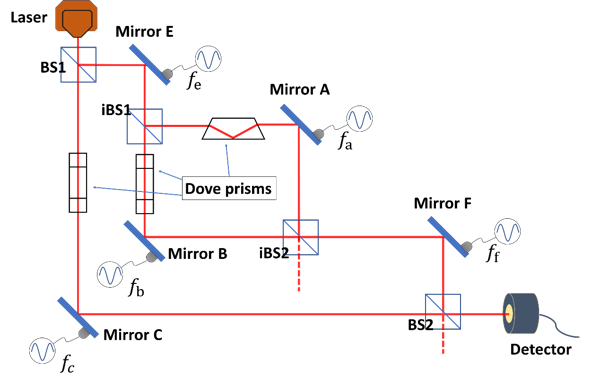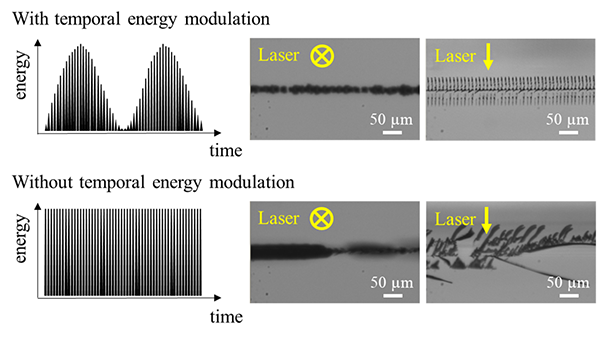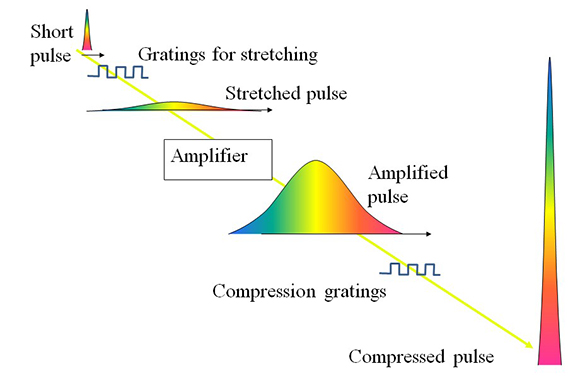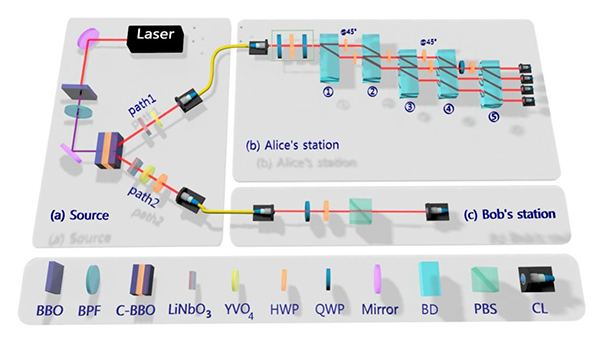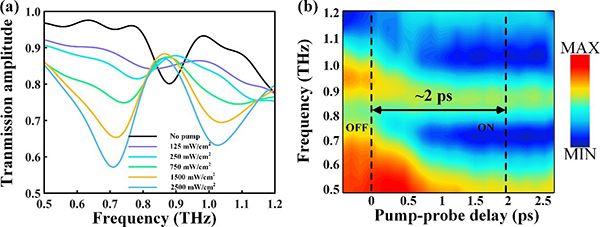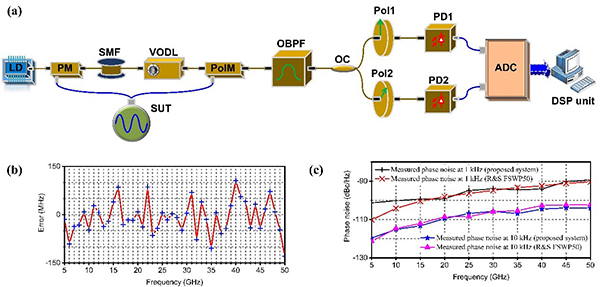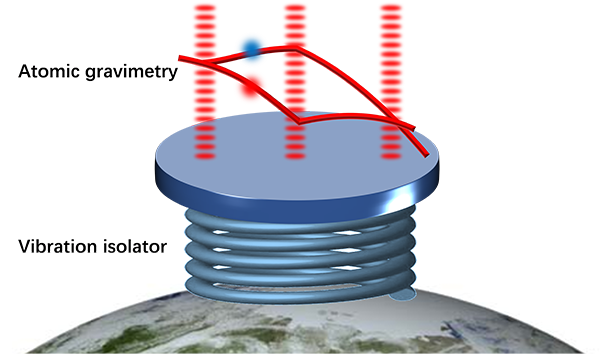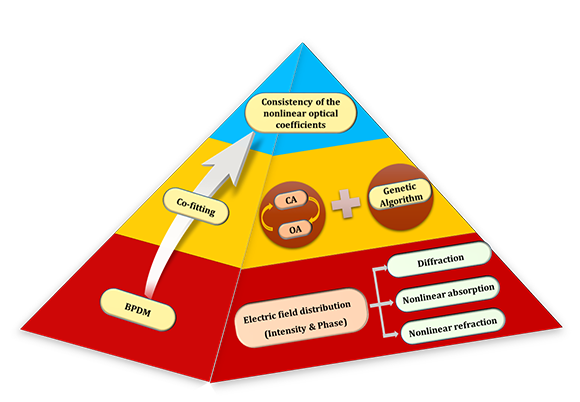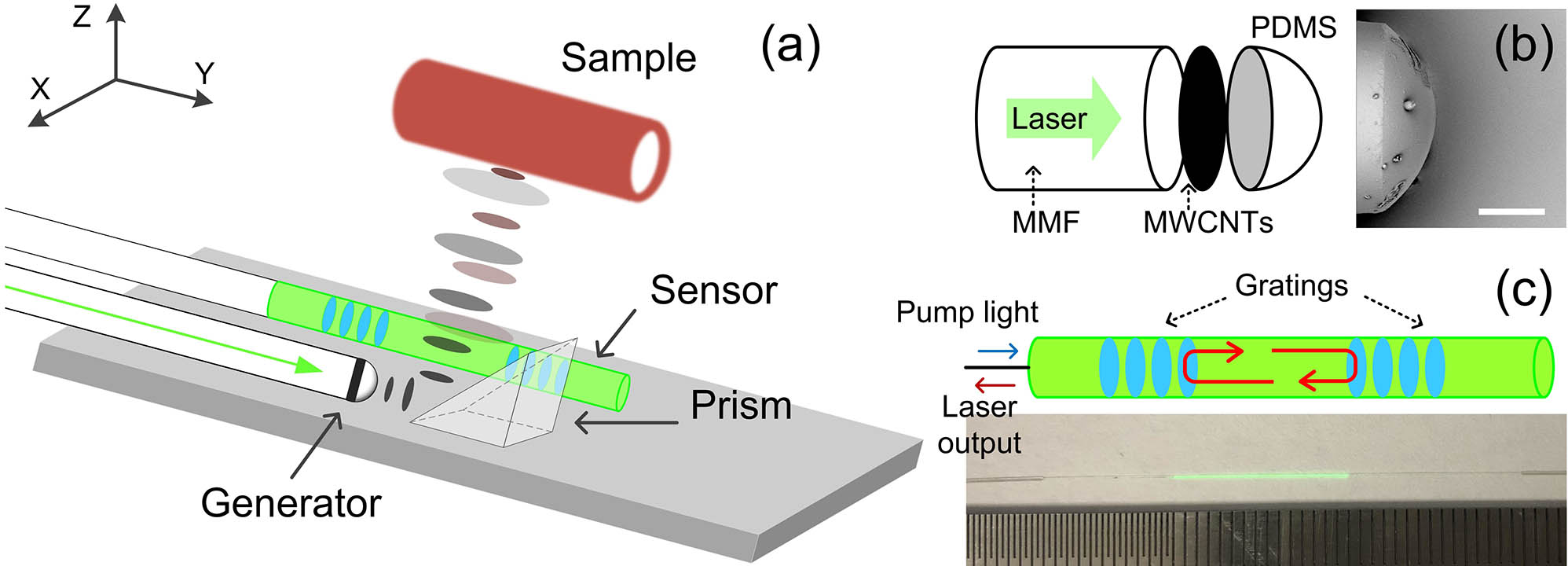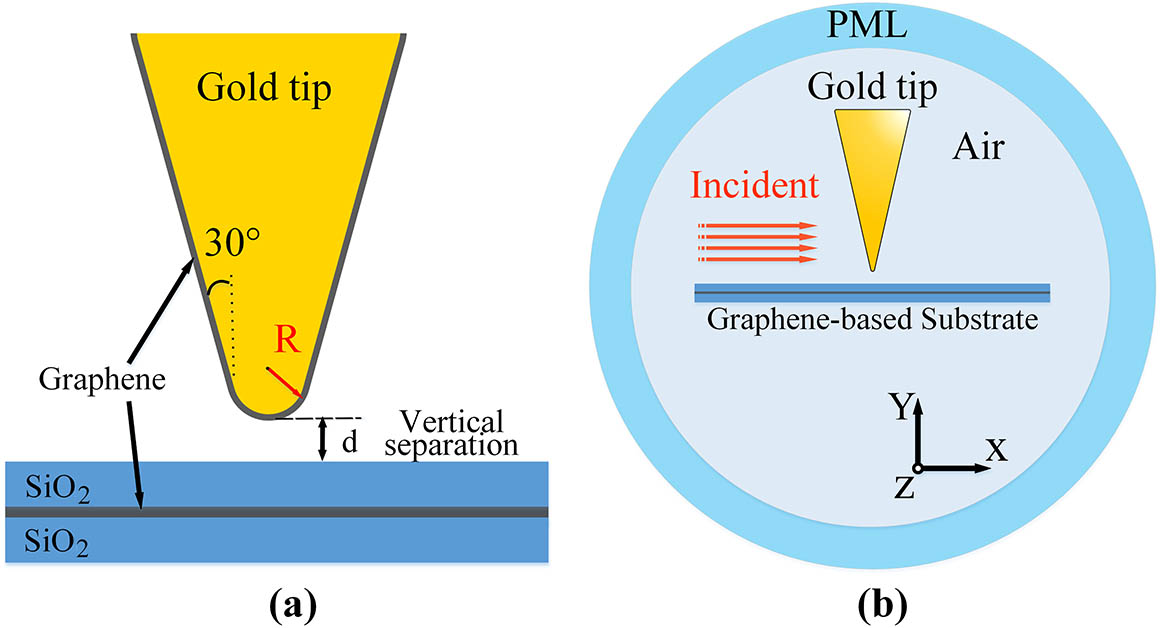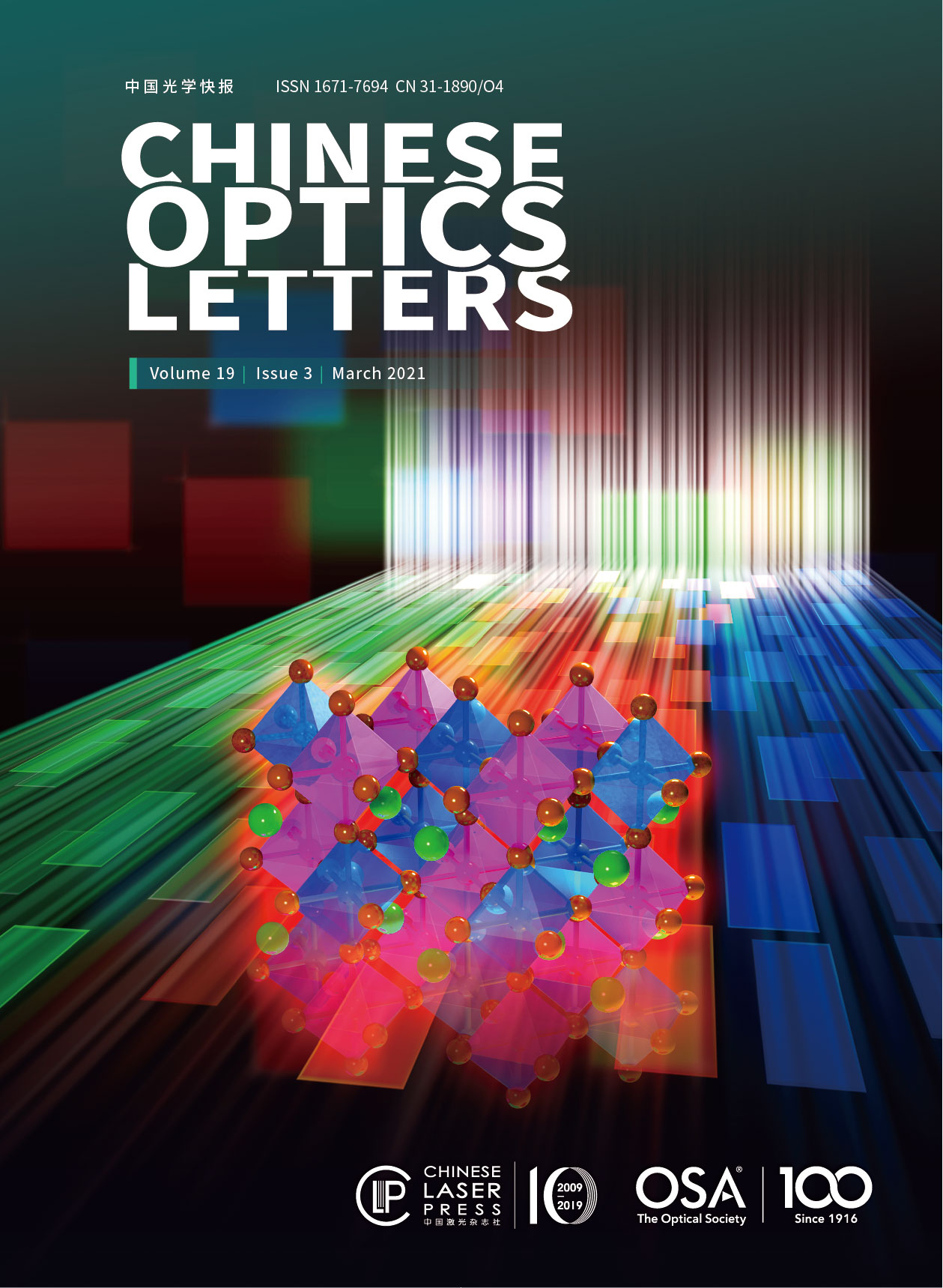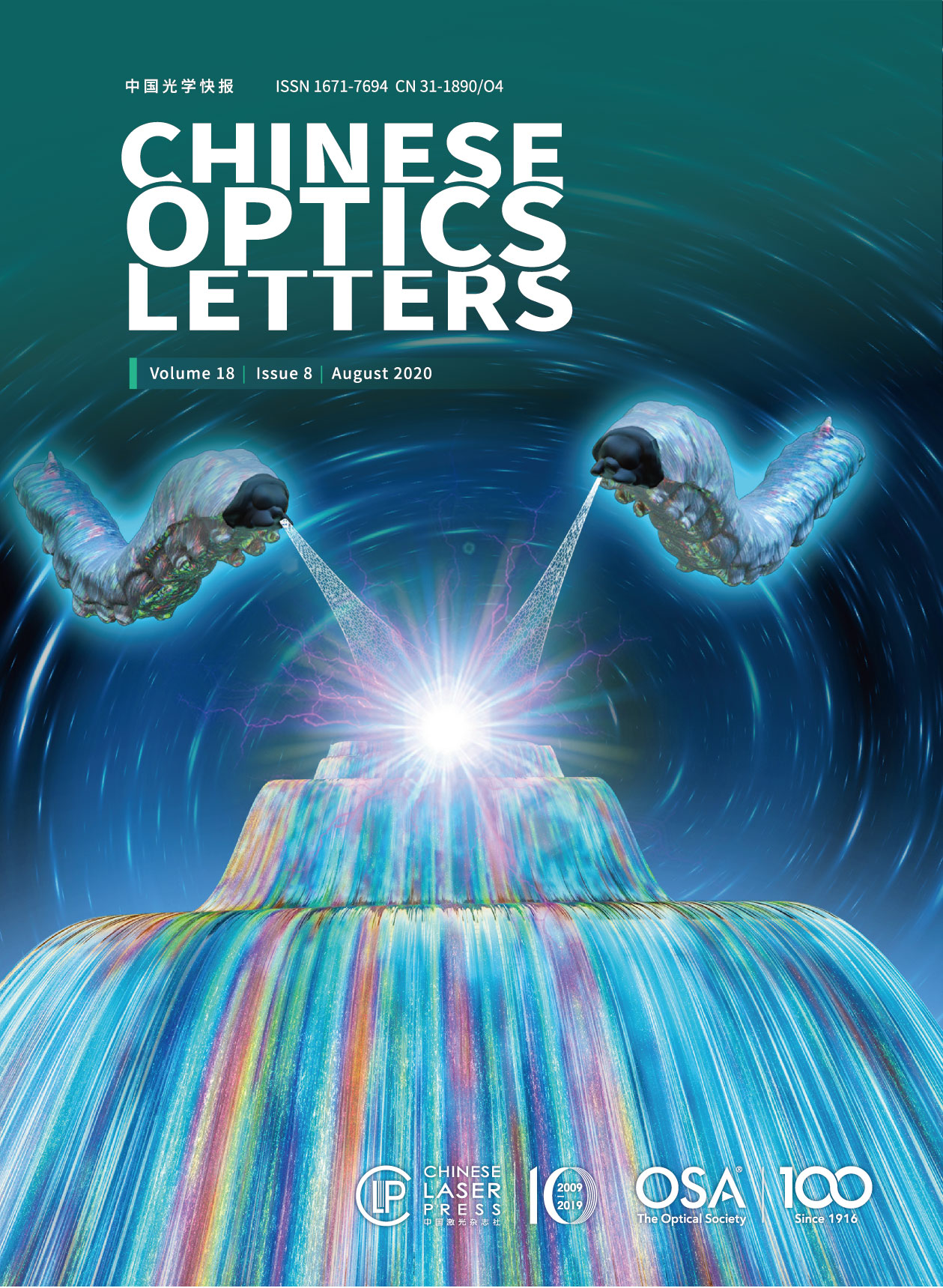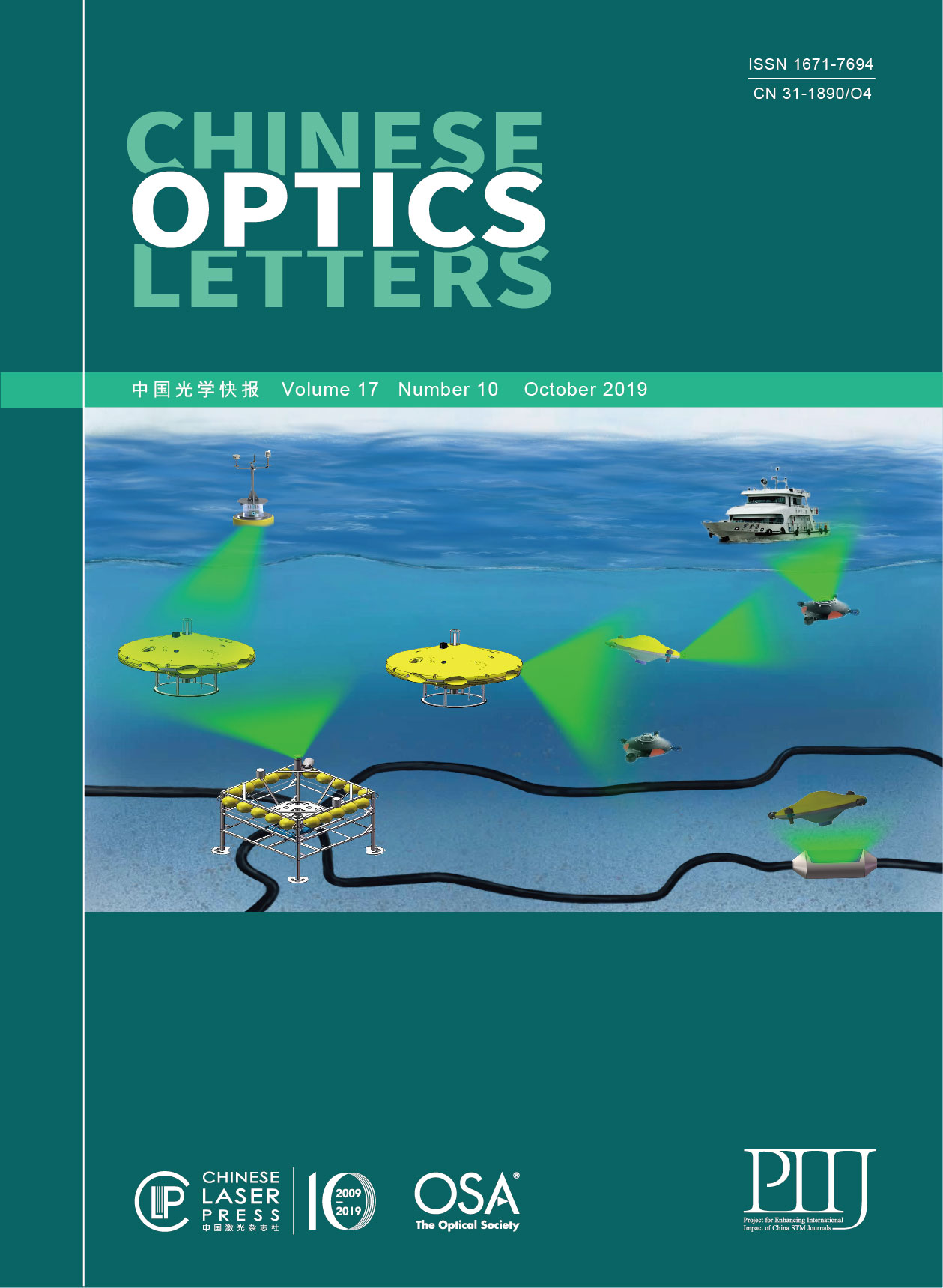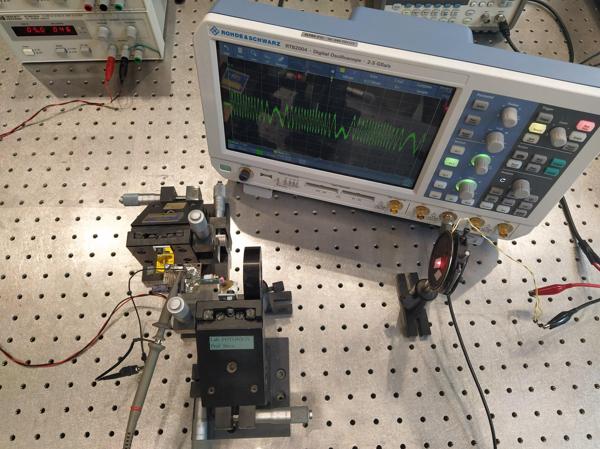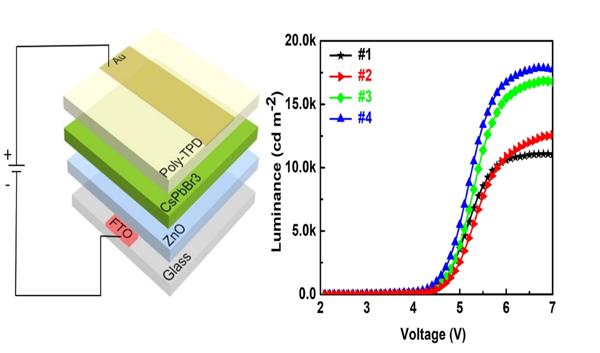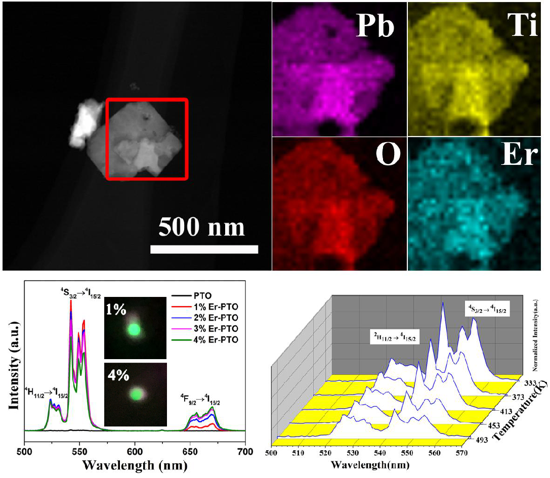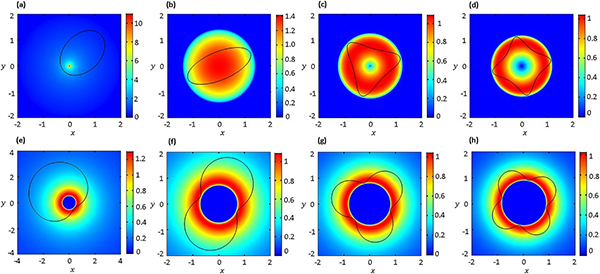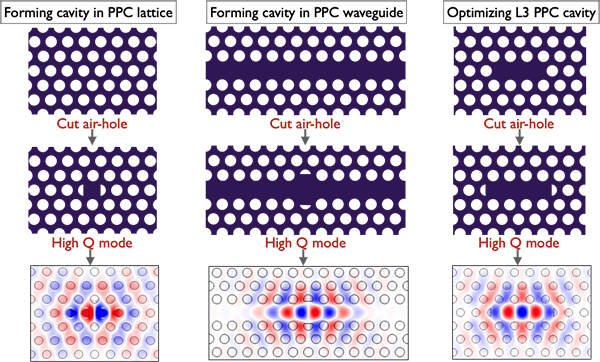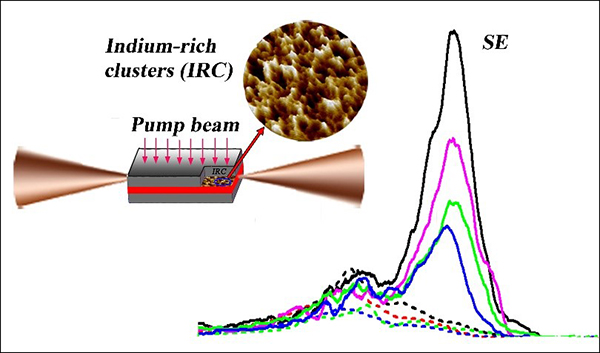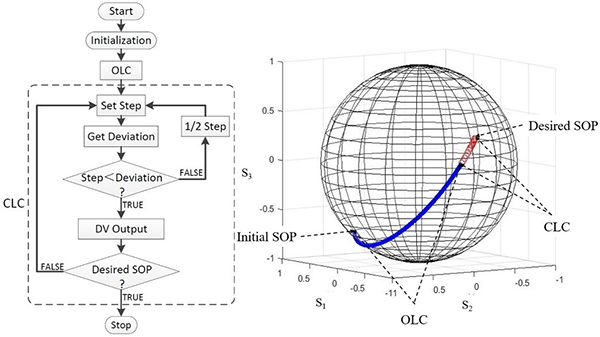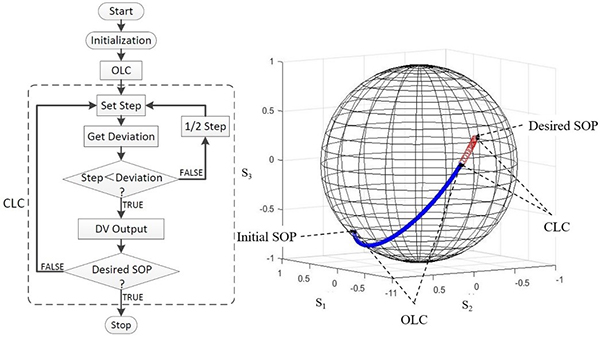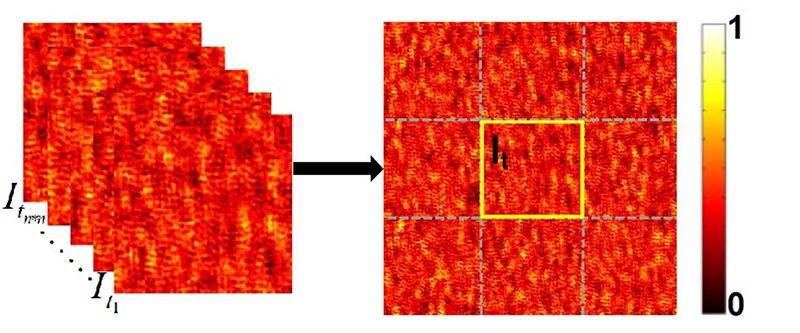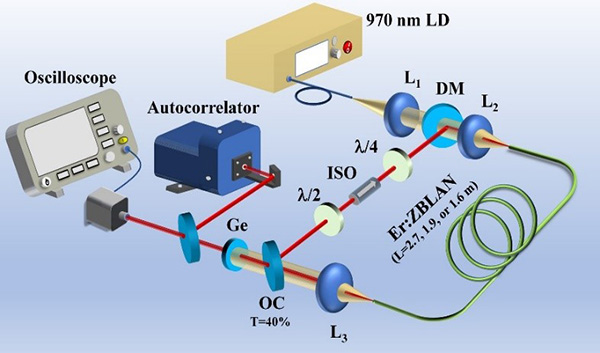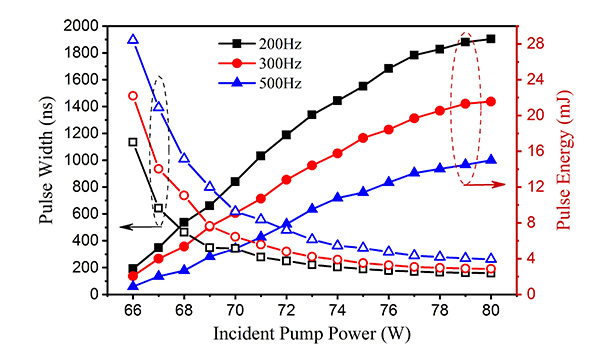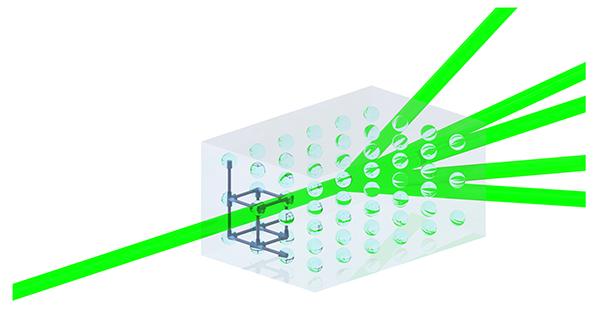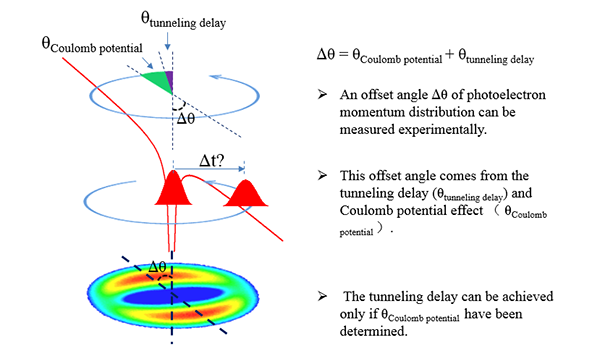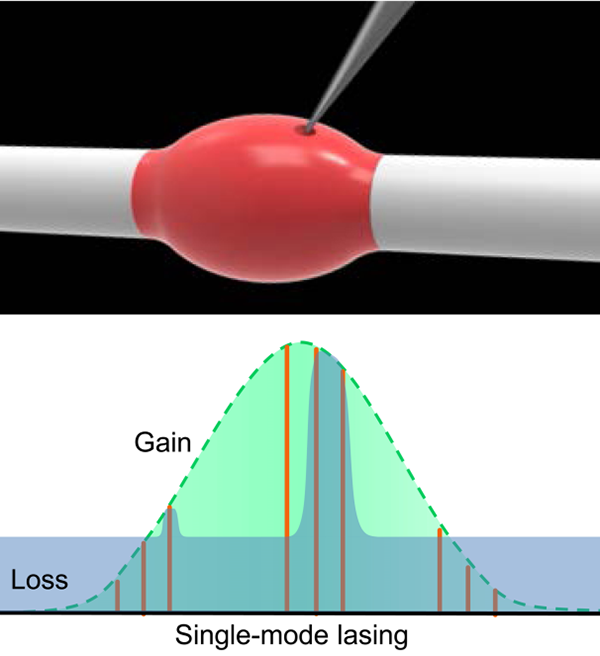Search by keywords or author
On the Cover
Since the Bessel beam was proposed as an exact solution of propagation-invariant mode to the Helmholtz equation by Durnin in 1987, it has attracted a great deal of research interests. Due to its properties of non-diffraction and self-healing, the Bessel beam has been widely used in the fields of free-space optical interconnects and communications, optical capture and particle manipulation, optical micro-nano machining, optical microscopic imaging, and femtosecond laser processing. Recently, the propagation and manipulation of Bessel beams have become an issue of fundamental importance.
Chinese Optics Letters
- Apr. 10, 2024
- Vol. 22, Issue 2 (2024)
On the Cover
Ultrashort ultra-intense lasers (within duration in femtosecond scale) serve for not only the exploration of scientific unknowns related to extreme states of matter, but also the establishment of scientific facilities to support strategic high-tech such as inertial confinement fusion. However, the wavelength range of ultrashort ultra-intense lasers is restricted to the near-infrared (typically 800 nm and 1053 nm) by the available laser media. Nonlinear frequency conversion based on nonlinear optical crystals has been widely used in order to generate laser frequencies that are not available by direct laser action. The efficiency of nonlinear frequency conversion depends on the fulfillment of phase-matching condition.
Chinese Optics Letters
- Mar. 25, 2024
- Vol. 22, Issue 1 (2024)
On the Cover
Chirality is a kind of symmetrical structure that exists in nature. A substance has chirality if its mirror image cannot overlap with itself through basic rotations and translations. It is closely related to the phenomenon of life: more than 60% of drugs and 25% of pesticides are chiral compounds. Chiral characteristics significantly affect the function of biochemical substances, chiral isomers have the same chemical composition but may have completely different physical and chemical properties and biological activities, and even a chiral molecule has a therapeutic effect on diseases, while its isomers are toxic. Therefore, accurate and efficient detection of biochemical substances, especially the identification and quantitative analysis of chiral biochemical substances, has practical application needs and crucial scientific significance.
Chinese Optics Letters
- Mar. 25, 2024
- Vol. 21, Issue 11 (2024)
On the Cover
In the current digital era, driven by the Internet of Things, big data analytics, artificial intelligence, and industry digitization, there is an exponential growth in global data. Traditional storage methods such as hard disk drives and magnetic tapes are currently confronted with significant limitations, especially in terms of storage lifetime and energy consumption. Optical data storage, recognized for its offline storage capability and features of high capacity and extended lifetime, has emerged as a promising approach for archiving "cold" data. However, traditional optical storage technologies like DVDs and Blu-ray discs are limited in capacity. Even with the introduction of multilayer recording in Blu-ray discs technology, there are still constraints on the number of layers. Advanced multidimensional and super-resolution optical data storage technologies have provided opportunities in the field of data storage. However, these technologies also bring significant challenges that research groups and technology companies worldwide urgently need to address.
Chinese Optics Letters
- Mar. 11, 2024
- Vol. 21, Issue 12 (2024)
On the Cover
"COSMOS" research group from University of Shanghai for Science and Technology (USST) proposed and studied a new type of spatiotemporal optical field. The field features multiple vortex phase structure in different space-time domains. By changing the phase structure, it is possible to achieve a vectorial control over the orbital angular momentum (OAM) carried by the wavepacket. This spatiotemporal wavepacket may bring new opportunities in applications such as developing novel optical communication, studying light-and-matter interaction, and spin-orbital-interaction (SOI) studies.
Chinese Optics Letters
- Jan. 23, 2024
- Vol. 21, Issue 8 (2024)
On the Cover
nanoparticles and applications in super-resolution imaging
With the rapid development of social science and technology, optical microscopes have gone through the development process of ordinary optical microscopes with limited diffraction to the fluorescence super-resolution microscopes that break the diffraction limit, as well as non-fluorescent, label-free super-resolution optical microscopes. The non-fluorescent super-resolution imaging based on the nonlinear scattering of plasmonic nanoparticles is an interesting research topic and has been successfully applied to the imaging of biological cells. However, it has been found in the research that gold nanoparticles have severe overheating problems, aggregation and coupling between nanoparticles are prone to occur, and high temperature melting at high laser power is likely to affect practical applications.
The photothermal effect of nanoparticles is closely related to the thermal conductivity of the surrounding medium. Therefore, it is of great significance to study the key role of local thermal environment in the nonlinear scattering of plasmonic nanoparticles, and to further develop the label-free super-resolution imaging.
Recently, the research group led by Prof. Xiangping Li at Jinan University (JNU) proposed the strategy of Au@SiO2 core-shell particles, in order to improve the above-mentioned shortcomings of gold nanoparticles, and studied the mechanism of the nonlinear scattering saturation of gold nanoparticles based on the photothermal effect, and they also explored the application of Au@SiO2 in super-resolution imaging. Benefitting from the enhanced thermal stability and the reduced plasmonic coupling provided by the shell-isolated nanoparticles, the super-resolution imaging with a feature size of 52 nm (λ/10) can be achieved, and pairs of nanoparticles with a gap-to-gap distance of 5 nm can be readily resolved. This work was published in Chinese Optics Letters 2023, Vol. 21, No. 10 Tianyue Zhang, Zhiyuan Wang, Xiangchao Zhong, Ying Che, Xiangping Li. Photothermal nonlinear scattering of shell-isolated gold nanoparticles and applications in super-resolution imaging[J]. Chinese Optics Letters, 2023, 21(10): 103601) and was selected as the cover of the issue.
Principle: Gold nanoparticles are irradiated by incident light field, resulting in the temperature rising due to the photothermal effect. When the temperature reaches a certain threshold, the permittivity of the gold material is no longer constant, but instead becomes dependent on the temperature changes, leading to the nonlinear relationship between the temperature elevation and the excitation intensity. In turn, the change of optical constant of the material will further affect the plasmonic resonance of the particle, and consequently induces the scattering modulation. The optical super-resolution imaging of gold nanoparticles based on saturation scattering properties is realized by using the point spread function modulation technique of suppressed scattering imaging (SUSI) microscope.
Figure 1 (a) Illustration of optical heating of the gold nanospheres that converts light into temperature rises. Due to the difference in the local thermal media, the gold nanospheres (top: in immersion oil, middle: in SOG materials, and bottom: with silica coatings) undergo various temperature rising. (b) Experimental measurements of nonlinear plasmonic scattering of the five prepared samples, showing the nonlinear dependency of scattering on irradiance intensities for CW excitations at the wavelength of 532 nm. (c)The gap-to-gap distances of two nanoparticles are shown in the SEM images. The super-resolution imaging of the shell-isolated nanoparticles clearly shows the resolving ability to distinguish two nanoparticles that are closely located in sub-diffraction spaces as small as 5 nm.
The photothermal nonlinear scattering efficiency of gold nanoparticles is related to the thermal conductivity of the local environment related to heat dissipation. Five different samples were prepared with 70 nm diameter gold nanospheres immersed in oil, coated with silica shells with various thicknesses (shell thickness of 10 nm, 23 nm and 40 nm, respectively), and encapsulated in spin-on glass (SOG) material. To this extent, the gold spheres in all cases are in the same optical environment due to the homogenous medium dielectric constant, but they experience different local thermal environments caused by varied immediate surroundings during optical heating. The experimental results have proved that the local heat dissipation of the particles can be effectively improved by coating the SiO2 layer, therefore reduce the heat accumulation, and avoid the melting of gold cores. Compared with the bare gold nanospheres, the shell-isolated gold nanoparticles are not only photothermally more stable but also can effectively prevent plasmon coupling due to particle aggregations. This enables us to access the super resolving of two individual shell-isolated nanoparticles with the gap-to-gap distance
of 5 nm. The full-width at half-maximum (FWHM) of the measured image spot from the single core-shell nanoparticle (70 nm gold core with 40 nm silica shell) can be squeezed to 52 nm (∼λ/10).
The JNU researchers believe that the proposed method of using shell-isolated gold nanoparticles with a silica coating for photothermal nonlinear scattering represents a new principle and technology for non-fluorescence super-resolution imaging. It has potentials to be applied to the imaging of microscopic structures such as cells and tissues, which is helpful to the study of biological processes and the pathogenesis of diseases.
Chinese Optics Letters
- Jan. 23, 2024
- Vol. 21, Issue 10 (2023)
On the Cover
Adaptive Optics (AO) technology, through real-time detection and compensation of wavefront distortion, can effectively correct the influence of random wavefront distortions such as atmospheric turbulence on the propagation of light beams. It has wide applications in areas such as astronomical telescopes, optical communication systems, and lidar. The wavefront sensor is a core component of the adaptive optics system, with its measurement accuracy directly determining the subsequent distortion compensation effect. Among them, the Shack-Hartmann Wavefront Sensor (SHWFS) has become the most widely used wavefront sensor due to its simple structure and high sensitivity. However, traditional SHWFS, constrained by the working mechanism of the pixelated detector, reveals issues such as low signal-to-noise ratio and limited dynamic range in dim detection environments. Also, for the increasingly urgent demand for non-visible light wavelength, traditional SHWFS cannot accomplish the wavefront sensing task well (as shown in Fig. 1).
Chinese Optics Letters
- Dec. 26, 2023
- Vol. 21, Issue 9 (2023)
On the Cover
The manipulation of light-matter interaction at micro-, nanoscale is an important tool for research in fundamental physics and applied science. With flexible modulation, vectorial optical fields with spatial dependent polarization have drawn wide attention recently. In particular, the tightly focused vectorial optical field are used in areas such as super-resolution microscopy, optical tweezer, nanofabrication and near-field optics. Detecting the light field vector at nanoscale can help to optimize the optical field modulation, and explore the mechanism of light-matter interaction. It needs an optical probe with small size, low perturbation and vector measurement capability.
Chinese Optics Letters
- Oct. 17, 2023
- Vol. 21, Issue 7 (2023)
On the Cover
Microstructure optical fiber (MOF) offers a wide range of applications in short-distance communication systems, fiber lasers, supercontinuum generation, sensors, modulators and wavelength converters, as well as in various scientific fields such as optics, electronics, medicine, biology and environmental science. Conventional step-index fibers suffer from the constraints of the monotonic structure construction and material properties, which limits the further optimization of their optical performance in terms of work bandwidth, dispersion and loss. For practical purposes such as high-capacity transmission and high-power lasers, they face the challenges such as maintaining single-mode operation with a small core size, ensuring a low cutoff wavelength and matching the thermal characteristics of the core and cladding materials. In contrast, MOF, such as the well-known photonic crystal fiber (PCF), exhibit a strong dependence of the effective refractive index of the cladding on the structural parameters and wavelength, which enables a broad tunability of the effective refractive index contrast (0 ~ 90%) between the core and cladding modes. Therefore, by adjusting the structural parameters of the fiber, such as the size, shape and lattice constant of the air holes, the fundamental mode propagation constant will be effectively controlled, easily achieving single-mode transmission with zero cutoff wavelength, high numerical aperture, ultra-flat dispersion, low loss or high nonlinearity coefficient, among other desirable fiber features. These features endow PCF with an unparalleled advantage over traditional fiber.
Chinese Optics Letters
- Sep. 05, 2023
- Vol. 21, Issue 6 (2023-)
On the Cover
Due to the rich information reflected, polarized hyperspectral imaging has been widely applied in environmental monitoring, biological diagnosis, food safety, and other fields. In terms of technology development, polarized imaging is mainly based on Fourier transform, pixelated polarizers, and compressive sensing (CS). Currently, all the above three methods can achieve full-Stokes polarized imaging. Typically, Fourier transform imaging spectropolarimetry based on polarization modulation array (PMAFTISP) requires only one acquisition to obtain full-Stokes images. The PMAFTISP includes three polarization modulation arrays and three independent optical elements. System complexity and channel crosstalk may affect imaging quality. In addition, pixelated full-Stokes polarimeters require rotating polarizers or designing metasurfaces. Moreover, the fabrication of precision pixelated devices is costly and time-consuming. Recently, compressive full-Stokes polarimeters are constructed with only two commercial components, providing an easy-to-operate and time-saving system. Full-Stokes images can be reconstructed from two measurements compressed by a quarter-wave plate (QWP) and a liquid crystal tunable filter (LCTF). Furthermore, benefiting from a retarder followed by a Wollaston prism with splitting effect, full-Stokes images can be reconstructed from one measurement. Nevertheless, the above compressive polarimeters all rely on traditional reconstruction methods, such as two-step iterative shrinkage/threshold (TwIST) algorithm, which require careful selection of polarization parameters and sparse basis.
Chinese Optics Letters
- Jul. 14, 2023
- Vol. 21, Issue 5 (2023)
On the Cover
Integrated quantum photonic technology exhibits great potential for applications ranging from quantum communications and quantum computation to quantum metrology. Single-mode, high-purity, and integrated sources of single photons and/or entangled photon pairs are necessary for all these quantum protocol. Lithium niobite (LN) integration platforms provide second-order nonlinearity that enables photon-pair generation by spontaneous parametric down-conversion (SPDC). More specifically, periodically poling of LN, also known as ferroelectric domain engineering technique can be applied to realize quasi-phase-matching (QPM) SPDC for generation of correlated photons with higher efficiency.
Chinese Optics Letters
- Jun. 06, 2023
- Vol. 21, Issue 4 (2023)
On the Cover
Raman spectroscopy, originating from the inelastic scattering of incident photons and molecules, is an effective method to analyze the structure of molecules, and the applications have covered the fields of physics, chemistry, materials, life science, etc. Due to the small Raman scattering cross section, Raman examination sensitivity by far-field excitation is relatively low. Surface-enhanced Raman spectroscopy (SERS) based on the surface plasmonic resonance effect can improve Raman examination sensitivity to single molecule level. SERS relies on the local electric-field enhancement of noble metal nanostructure to improve the Raman scattering intensity of the target analytes. Linearly polarized beam (LPB) has been widely used in SERS. However, for the noble metal nanostructures with special spatial symmetry, the monotonic polarization distribution of LPB lacks the ability to efficiently excite the surface plasmonic resonance effects. Compared with LPB, the azimuthal vector beam (AVB) has more abundant polarization components perpendicular to the surface of the metal nanostructures. Therefore, AVB used as an excitation light source can significantly improve SERS performance.
Chinese Optics Letters
- May. 22, 2023
- Vol. 21, Issue 3 (2023)
On the Cover
Metamaterials are artificial materials which can have electromagnetic response characteristics that ordinary materials in nature do not have by selecting different constituent materials and geometric parameters of structural units in metamaterials. However, the development of metamaterials is very limited due to the difficulty of three-dimensional processing processes. Metasurfaces are the two-dimensional counterparts of metamaterials. Compared with metamaterials, metasurfaces have the advantages of simple preparation process, high integration and powerful functions, and have broad application prospects in the fields of classical optics and quantum optics. In the field of classical optics, metasurfaces are mainly used to develop optical components with higher integration and more innovative functions, which is of great significance for the research of integrated optical devices. In the field of quantum optics, metasurfaces can not only reduce the complexity of quantum optics experimental devices, improve their stability and scalability, but also provide a new research platform for quantum optics research. Therefore, exploring the application value of metasurfaces in degrees of freedom such as wavelength, polarization, and orbital angular momentum is crucial to the fields of classical optics and quantum optics.
Chinese Optics Letters
- Mar. 10, 2023
- Vol. 21, Issue 2 (2023)
On the Cover
Quantum entanglement is a key fundamental concept and an enabling feature for various quantum technologies, as recognized in particular by the Nobel Prize in Physics in 2022. When we say two particles are entangled, it means that certain properties of them remain linked, even when they are far apart, a phenomenon that Einstein thought implausible, dubbing it "spooky action at a distance." The photons, quasi-particles of light, can possess entanglement in different degrees of freedom such as frequency, spatial position, and propagation direction. Photon pairs that are entangled in the spatial degrees of freedom represent an essential resource for a broad range of quantum applications, including imaging, communications, and computations. Therefore, photon sources with tunable spatial entanglement are pivotal in quantum photonic technologies. The most common way to generate spatially entangled photon pairs is based on a process called spontaneous parametric down-conversion (SPDC), where a pump photon goes through a quadratically nonlinear material and spontaneously splits into two lower-energy photons that are emitted in different directions. Conventional SPDC sources rely on nonlinear crystals, which are bulky, with a typical thickness on the scale of millimeters to centimeters. In such thick crystals, the emission directions are limited to a certain predefined angle range, making it challenging to flexibly tune the spatial pattern and entanglement of the photon pairs while maintaining the generation efficiency.
Chinese Optics Letters
- Feb. 27, 2023
- Vol. 21, Issue 1 (2023)
On the Cover
Thanks to their favorable isolation and coherence, rich energy level structures and permanent electric dipole interaction, ultracold molecules has not only shown unique advantage in the research of quantum chemistry, but also developed novel methods for quantum simulation, quantum computation and precision measurement beyond cold and ultracold atom systems. Current direct synthesis methods of cold molecules, however, are confined to photoassociation and magnetoassociation whose efficiency of molecular state preparation is far from perfect, due to complex energy level structures of molecules. With destructive detection of the synthesized molecules, these methods impose severe restrictions on the application of ultracold molecules. In order to further increase the state preparation efficiency of ultracold molecules, to study its reaction dynamics and to realize nondestructive detection of ultracold molecules, ultracold molecule cavity QED has been proposed and studied in experiments. Optical resonators are required to selectively enhance the coupling strength of matter and certain electromagnetic modes.
Chinese Optics Letters
- Dec. 23, 2022
- Vol. 20, Issue 12 (2022)
On the Cover
Structured light three-dimensional (3D) reconstruction has been widely used in medicine, aerospace and other industrial fields. As one of the 3D reconstruction methods of structured light, phase-shifting profilometry (PSP) has attracted much attention due to its high accuracy and robustness. PSP is used to obtain the 3D shape of objects by collecting and solving the fringe patterns projected onto the object surface with phase information. The phase information of PSP has periodic phase ambiguity of (0-2π). The traditional method requires additional fringe patterns to determine the fringe period, which undoubtedly increases the time cost and limits the area of usage scenarios. With the increased of application scenarios such as dynamic object reconstruction and real-time object scanning in industry, traditional PSP cannot meet the requirements.
Chinese Optics Letters
- Nov. 22, 2022
- Vol. 20, Issue 11 (2022)
On the Cover
Chirality is a fundamental property in nature. It manifests in various physical, chemical, and biological processes. Chiral molecules do not have a symmetry plane and exist in pairs of left- and right-handed enantiomers. Chiral molecules show strong enantiomeric selectivity. For example, most isomers of chiral drugs exhibit marked differences in biological activities. Therefore, it is vital to identify the molecular chirality. Furthermore, detection of the chiral dynamics in the femtosecond and sub-femtosecond scales can help people understand the underlying physical mechanisms of the chemical reactions.
Chinese Optics Letters
- Nov. 21, 2022
- Vol. 20, Issue 10 (2022)
On the Cover
Structural color originates from the interaction between light and periodic submicron structures and has led to many unique functions in nature, inspiring the development of material science. In sensing changes in the external environment, animals use color changes to transmit signals and accomplish behaviors such as communication, camouflage, vigilance, and courtship. Responsive photonic crystals are considered to be one of the best artificial materials for preparing color-changing functions, i.e., when induced by external stimuli, photonic crystals change their own periodic structure to modulate the properties of light waves, producing color changes in visual effects associated with wavelength changes. Among them, the cholesteric liquid crystal (CLC) exhibits unique selective reflective properties due to its self-assembled helical structure forming a periodic arrangement of dielectric constant and refractive index, is endowed with advantages such as polarization-dependent generation of structural color and dynamic tunability, and is rapidly developing in research fields such as dynamic display, information storage, and optical security. People have been changing the working wavelength and reflectivity by using optical, electrical and thermal responsive chiral molecules, multilayer composite structures, phase transitions and many other methods. However, there are still problems such as easy destabilization and limited regulation mechanisms, so it is still a challenge to design and prepare reflective liquid crystal photonic devices with multiple responses, real-time reconfigurability, and dynamic broadband tunability.
Chinese Optics Letters
- Oct. 14, 2022
- Vol. 20, Issue 9 (2022)
On the Cover
The concept of rogue waves originated in oceanography, and refers to high-intensity waves with great destructive power that suddenly appear and disappear in the sea. Ocean-going ships, offshore drilling platforms and other facilities have records of being damaged by rogue waves. It is extremely difficult to study rogue waves in water environments such as oceans or tanks due to their unpredictable nature and numerous excitation conditions.
Chinese Optics Letters
- Sep. 30, 2022
- Vol. 20, Issue 8 (2022)
On the Cover
Organic molecules are attractive to both physicists and chemists because molecules could have high quantum efficiencies in light emission and be chemically synthesized to have transitions at desired wavelengths. Moreover, single molecules, as isolated individual quantum systems, are actually versatile sources of single photons since a single two-level system cannot emit two photons simultaneously, as each excitation and emission cycle require a finite time. Compared to various other solid-state single photon emitters such as quantum dots, color center in diamond, defects in two-dimensional materials, single molecules embedded in crystalline organic matrix, possess several unique properties including small size of about one nanometer (suitable for high-density doping), flexibility in the synthesis, and strong and stable Fourier-limited zero-phonon lines at low temperature. In particular, dibenzoterrylene (DBT) molecules embedded in anthracene (AC) crystal have been actively studied as definitely stable single-photon emitters with non-blinking emission and lifetime-limited linewidth, the integration of single DBT molecules with planar photonic circuits has been also explored.
Chinese Optics Letters
- Aug. 26, 2022
- Vol. 20, Issue 7 (2022)
On the Cover
Infrared spectrum detection is to detect and analyze the light wavelength information of matter through detectors, like Sun Wukong's piercing eyes, which can see the essence through appearance and accurately identify the material information that cannot be judged by humans eyes. The short-wave infrared (SWIR) band is rich in material spectral information, and has the ability to penetrate clouds and fog. It has a wide range of applications in food, agriculture, remote sensing imaging and other fields.
Chinese Optics Letters
- Jul. 22, 2022
- Vol. 20, Issue 6 (2022)
On the Cover
Photon sieves composed of etched holes on an opaque film have been proposed firstly, to the best of our knowledge, to reduce the focal spot size and alleviate high diffraction orders in soft X-ray and the optical spectrum. With the rapid development of nano-fabrication technology, photon sieves have been demonstrated at nanoscale and worked as binary-amplitude metasurfaces for optical focusing. The photon nanosieves have the advantages of polarization independence and more degrees of freedom in design than the concentric rings in zone plates, which therefore enable more complex manipulation of light, such as hologram, by arranging the locations of holes in a customized way. Due to the subwavelength feature of nanosieves, their related holograms usually support broadband operation. In addition, the non-resonating mechanism of amplitude modulation makes the nanosieve hologram have a wider spectrum than other metasurface devices with resonating nano-structures. The nanosieve hologram also enables a large field of view for holographic display when combined with tunable phase realized by a spatial light modulator. Beyond the circular shape, rectangle nanosieves have also been proposed to control the geometric phase of a circularly polarized light by rotating the orientations of the rectangular nanosieves, thus enabling full-color holography and the generation of optical vortices in various electromagnetic spectra such as X-ray and vacuum ultraviolet wavelengths.
Chinese Optics Letters
- Jun. 08, 2022
- Vol. 20, Issue 5 (2022)
On the Cover
Advanced microscale silicon photonics technology has emerged as a promising candidate for the next-generation chip-scale data communication network due to its unique advantages of low cost, high integration density, high speed and energy efficient. However, a highly efficient microscale Si-based light source is still considered as the obstacle for realizing a practical Si-based photonic integrated circuit (PIC), due to the indirect bandgap nature of bulk Si and Ge materials.
Chinese Optics Letters
- Apr. 21, 2022
- Vol. 20, Issue 4 (2022)
On the Cover
As is well-known, every hot object with a temperature above absolute zero, whether artificial or natural, will emit thermal radiation. In nature, many organisms achieve better survival by adjusting their own infrared (IR) radiation. In particular, rattlesnakes can detect prey at night rely on their IR-sensitive pit organs. To threaten rattlesnakes, ground squirrels send out distinct and deceptive infrared tail flagging signals by increasing blood flow to their tails. The total thermal energy radiated from an object is related to its emissivity and temperature, which is based on the Stefan-Boltzmann's law. Consequently, the thermal radiation intensity can be manipulated by adjusting the emissivity or changing the surface temperature to meet different needs. Inspired by natural creatures, the regulation of thermal radiation has been widely used in different fields, including personal thermal management, smart windows, IR camouflage, IR imaging, and so on.
Chinese Optics Letters
- Mar. 30, 2022
- Vol. 20, Issue 3 (2022)
On the Cover
Femtosecond laser induced two-photon polymerization has become an ideal choice for the fabrication of three-dimensional micro-nano functional structures due to its wide range of processing materials, maskless, and high processing resolution. However, since two-photon polymerization voxel is only limited to the vicinity of the laser focus, high-NA objective lenses are commonly used to achieve smaller volume elements in order to achieve higher processing resolution. But at the same time, the smaller voxel means the total number of voxels are greater to fabricate the same structure, making the corresponding processing time longer. Therefore, the high resolution and high processing efficiency of femtosecond laser two-photon polymerization are contradictory, which also leads to the fact that two-photon polymerization is only suitable for processing small-volume and high-resolution 3D structures. It is difficult to apply to batch manufacturing and processing macroscale structure. Therefore, how to achieve high-precision, high-efficiency processing of cross-scale 3D micro-nano structures is the bottleneck restricting its further development.
Chinese Optics Letters
- Feb. 09, 2022
- Vol. 20, Issue 2 (2022)
On the Cover
Photonic-integrated circuits (PICs), analogous to electronic integrated circuits, have long been dreamed of and driven by the relentless desire for higher information exchange and processing capacities, allowing higher speed and bandwidth. Lithium-niobate-on-insulator (LNOI) wafer is considered as an important candidate platform for PICs, owing to its outstanding material properties featuring a broad transparency window (350 nm to 5 μm), strong linear electro-optic effect, and a large second-order nonlinearity susceptibility. A wide range of high-performance device applications, such as optical frequency convertors, high-speed Mach-Zehnder modulators, and multiplexers have been demonstrated due to the rapid developments in ion-slicing technique and LNOI nanofabrication technology. Among the various devices, optical waveguides with ultra-low propagation loss and high refractive index contrast are building elements for the realization of large-scale PICs, while optical waveguides are susceptible to sidewall roughness induced by the fabrication imperfection.
Chinese Optics Letters
- Jan. 24, 2022
- Vol. 20, Issue 1 (2022)
On the Cover
Nowadays, the multimode fiber (MMF), which was overlooked for decades, is making a strong comeback since it not only has broad applications in fields of optical communications, imaging, metrology, spectroscopy, and three-dimensional nonlinear phenomena, but also is served as the medium for new high-energy pulse laser technology. The MMF has a large core diameter and therefore can withstand higher nonlinearity. Compared with the conventional single-mode fiber laser, the mode-locked MMF laser is able to improve the single-pulse energy by more than two orders of magnitude in theory, which brings new opportunities for high-energy laser technology and will be important for both fundamental research and practical applications.
Chinese Optics Letters
- Dec. 15, 2021
- Vol. 19, Issue 12 (2021)
On the Cover
Scientists have invented microrobots that can directly reach the site of disease to perform medical tasks. Microrobots-assisted in vivo drug delivery, release, and in situ surgery are therefore seen as very promising medical solutions. In recent years, more researchers are focusing on how microrobots can be truly applied for clinical therapy. Many in vivo experiments on small animals have also been carried out to validate and advance the in vivo application of the microrobots.
Chinese Optics Letters
- Nov. 17, 2021
- Vol. 19, Issue 11 (2021)
On the Cover
Over the past few decades, optical fibers have been widely applied to telecommunication, imaging, lasers, and sensing. Optical fibers constitute a platform to excite surface plasmon resonance (SPR) when plasmonic materials are coated on the surface of the fiber core, thus satisfying the need for miniaturization and integration. In particular, photonic crystal fiber (PCF) sensors based on SPR (PCF-SPR) have drawn much attention due to the flexibility of their structure. A PCF is essentially a microstructured optical fiber consisting of a silica core surrounded by a periodic lattice of air holes along the length of the fiber. PCFs are regarded as a desirable platform to excite surface plasmon resonance (SPR) because of easy realization of phase matching conditions between the fundamental core mode and the plasmonic mode, which is the most unique advantage over conventional optical fiber SPR sensors.
Chinese Optics Letters
- Oct. 26, 2021
- Vol. 19, Issue 10 (2021)
On the Cover
The co-propagation of multiple orthogonal modes with different field distributions and propagation paths in one multimode waveguide are called mode division multiplexing (MDM), which was first, to the best of our knowledge, brought up 40 years ago (as early as 1982) and now is revived again due to the "Moore's law" demand of optical communication capacity and photonic integration.
Chinese Optics Letters
- Sep. 27, 2021
- Vol. 19, Issue 9 (2021)
On the Cover
Optical isolators are nonreciprocal devices that allow light to pass in one direction but block light in the opposite direction. They are typically used to prevent unwanted back reflections into optical oscillators such as lasers, and to suppress crosstalk between different optical devices. Nonreciprocal optical elements such as circulators and isolators are essential for the realization of integrated optical circuits. The design of nonreciprocal components requires breaking the time reversal symmetry. This can be achieved through the use of nonlinear materials, materials with time-dependent properties, and magneto-optical materials. However, since the magneto-optical response of natural materials is weak at optical wavelengths, designing nonreciprocal devices that are based on magneto-optical materials results in bulky structures that are much larger than the wavelength. The advent of silicon photonics and photonic crystals has reduced the size of nonreciprocal optical components down to wavelength scale.
Chinese Optics Letters
- Aug. 31, 2021
- Vol. 19, Issue 8 (2021)
On the Cover
Ultrafast laser has the advantages of flexible design, short pulse width and high peak power, which has a very broad application prospect in the fields of micro-/nano-processing, biomedicine, national defense and military. In order to achieve ultrafast laser output, mode-locking technology is generally needed. To this end, researchers have proposed a variety of schemes. In 2003, Karen Intrachat and J. Nathan Kutz, Department of Applied Mathematics of University of Washington in USA, predicted theoretically that long-period fiber grating has pulse-shaping function, which can be used to construct ultrafast fiber lasers. In 2008, Abdullah S. Karar, Tom Smy and Alan L. Steele, department of electronics of Carlton University in Canada, conducted theoretical research on ultrafast fiber lasers with long-period fiber gratings. They found that this kind of laser can produce a variety of soliton pulses. However, there is a lack of experimental research on (ultra)-long-period fiber gratings as ultrafast optical devices by far.
Chinese Optics Letters
- Aug. 12, 2021
- Vol. 19, Issue 7 (2021)
On the Cover
Nonlinear Talbot effect is a near-field nonlinear diffraction phenomenon in which the self-imaging of periodic object is formed by the second harmonic of the incident laser beam. Different from its conventional linear analogue, the periodic object here is made with spatially modulated second-order nonlinear coefficient of the medium, and the spatial resolution in Talbot self-imaging is improved by a factor of 2 thanks to frequency doubling. Consequently, the nonlinear Talbot effect is superior in applications that require high resolution imaging and processing, such as nonlinear optical microscopy, lithography, spectrometry, and material characterization.The nonlinear Talbot effect was first observed in periodically poled LiTaO3 crystals, which are also known as nonlinear photonic crystals. The self-imaging of 1D periodically and 2D hexagonally poled ferroelectric domain structures was observed by using the second harmonic generated in the crystals. Following this pioneering work, the dependence of nonlinear Talbot distance on parameters of nonlinear photonic crystals and the fractional nonlinear Talbot effects were also investigated. Despite of these recent achievements, the fundamental properties and capabilities of nonlinear Talbot effect have not been thoroughly studied so far. For instance, very useful characteristic of Talbot effect is its capability to produce defect-free images from imperfect structures, property known as self-healing. While such capability of image restoration has been well studied in linear Talbot effect, it has never been investigated in the regime of nonlinear optics.
Chinese Optics Letters
- Jun. 23, 2021
- Vol. 19, Issue 6 (2021)
On the Cover
Topology is an important branch of mathematics formed in the 19th century. It studies the invariant properties of geometric figures or space under continuous deformation. The idea of topological physics originated from the exciting discovery of the integer quantum Hall effect (IQHE) in condensed-state physics. Klitzing found that the two-dimensional (2D) electron gas in a strong perpendicular magnetic field has a quantized Hall conductance. The quantization originates from the non-trivial topology of the energy band structure, which is characterized by the Chern number according to the theoretical work of Thouless, Kohmoto, Nightingale, and den Nijs (TKNN). Haldane and Raghu creatively introduced the concept of topology to photonic crystals for the first time, as they proposed a photonics analogue of the quantum Hall effect in photonic crystals. Edge states appear at the domain wall between materials that have different Chern numbers and go through the topological bandgap in momentum space according to the bulk-edge correspondence.
Chinese Optics Letters
- Jun. 04, 2021
- Vol. 19, Issue 5 (2021)
On the Cover
The asymmetric transmission of electromagnetic waves refers to the difference in transmittance or polarization state when they pass through media from two opposite directions. This asymmetric transmission effect has potential applications in the integrated photonic system of optical communication, information processing and all-optical computing, and has been one of the important research topics. The traditional devices with asymmetric response are too bulky to meet the needs of the integration and miniaturization of modern optical devices. In recent years, much effort has been devoted to metasurfaces used to the design of asymmetric transmission devices. Due to its flat and ultra-thin features, metasurfaces have unique application prospects in miniaturized and integrated devices compared with traditional optical components.
Chinese Optics Letters
- May. 07, 2021
- Vol. 19, Issue 4 (2021)
On the Cover
At present, the environmental problems such as resource depletion, water pollution and air pollution caused by the development of nature resources have are raised great social concerns. Among the environmental issues, lighting electricity accounts for about 20% of global electricity consumption. Compared with traditional lighting sources such as incandescent lamps and fluorescent lamps, white light emitting diodes (LEDs) have many outstanding advantages like high energy efficiency, long working life, environmental friendliness, and etc. Therefore, the development of LEDs lighting is an effective solution to save power and protect the global environment.
Chinese Optics Letters
- May. 07, 2021
- Vol. 19, Issue 3 (2021)
On the Cover
The quest for developing novel imaging technologies to observe objects with high resolution is on-going. One of the straight-forward resolution enhancement technologies include illuminating objects with electromagnetic radiation with wavelengths shorter than that of the visible light which led to the development of electron, X-ray and ion microscopes, etc. An alternative method to improve the resolving power is to increase the numerical aperture of the imager. Both approaches have different types of technological demands; the former requires a compatible source, lens, and detector for a different electromagnetic spectral range, the later requires manufacturing of lenses with larger diameters or changes in optical configuration that still affect the modulation transfer function in a similar fashion. The above methodologies impose challenging loads on both the fabrication and materials engineering fronts. One of the easiest methods to improve the imaging resolution is to replace a coherent illumination with an incoherent one, which in turn doubles the spatial frequency limits of imaging. In addition to resolution enhancement, the above method also brings various advantages such as formation of images without speckles or edge ringing and at a substantially lower cost.
Chinese Optics Letters
- Mar. 15, 2021
- Vol. 19, Issue 2 (2021)
On the Cover
Nanophotonic devices, which take photons as information carries, play key roles in next-generation photonic chip. The design of multifunctional and practical devices has always been one of the core topics of nanophotonic devices. However, traditional design methods rely on human experience and physical inspiration for structural design and parameter optimization, so they often consume a lot of computing resources to obtain excellent results, and the structure type is not abundant enough.
Chinese Optics Letters
- Jan. 21, 2021
- Vol. 19, Issue 1 (2021)
On the Cover
Molecular vibrational imaging by stimulated Raman scattering microscopy: principles and applications
Twelve years have passed since the emergence of stimulated Raman scattering (SRS) microscopy, which is now regarded as a powerful method of molecular-vibrational imaging. At that time, researchers were struggling to explore how we can utilize laser pulses to look into biological specimens. Indeed, multiphoton microscopy, third-harmonic generation (THG) microscopy, second-harmonic generation (SHG) microscopy, and coherent anti-Stokes Raman scattering (CARS) microscopy appeared in the 1990s and their applications were expanding in the 2000s.
Chinese Optics Letters
- Dec. 28, 2020
- Vol. 18, Issue 12 (2020)
On the Cover
With the wide and expanding applications of laser in medical treatment, communication, industrial development, military and many other fields, existing laser wavelengths are inadequate to meet the growing needs of various applications. The development of new special laser wavelengths has attracted an increasing interest.
Chinese Optics Letters
- Nov. 06, 2020
- Vol. 8, Issue 11 (2020)
On the Cover
A retro-reflector can create reflected wave that is always parallel to, but in the opposite direction of, the incoming wave. Previous retro-reflector can be classified into two types: one is bulk device, including corner-cube reflector, cat's eyes reflector and Eaton lens, which cannot be integrated with planar modulators; the other is thin meta-surface retro-reflector, whose efficiency drops quickly as the viewing angle changes. To achieve planar thin retro-reflector with high efficiency and wide working angles, optical surface transformation (OST) can be used to design arbitrarily shaped retro-reflector.
Chinese Optics Letters
- Oct. 10, 2020
- Vol. 18, Issue 10 (2020)
On the Cover
The quantum harmonic oscillator is an indispensable example for understanding the quantum classical correspondence, quantifying the concepts of radiation fields and quantum optics. The eigenmodes of two-dimensional (2D) quantum harmonic oscillators can be resolved into Hermite-Gaussian (HG) modes with rectangular symmetry or Laguerre-Gaussian (LG) modes with circular symmetry. Since the paraxial wave equation of the spherical laser cavity is the same as the Schrödinger equation of the two-dimensional harmonic oscillator, the HG and LG eigenmodes play important roles in the exploration of laser transverse modes. With the advent of end-pumped configurations, high-order HG and LG modes can be efficiently generated in diode-pumped solid-state lasers. The Ince-Gaussian (IG) mode is another eigenfunction form of the paraxial wave equation, which has recently been introduced, and it has also been experimentally observed in a stable cavity.
Chinese Optics Letters
- Sep. 17, 2020
- Vol. 18, Issue 9 (2020)
On the Cover
The growing developments of optical technologies in energy, environmental, information, and biomedical applications are creating a demand for optical materials and devices which are not only sustainable but also implantable and bioresorbable. Within this context, naturally-derived biomaterials, such as silk, cellulose, chitin, melanin, and DNA, provide a unique opportunity by being simultaneously "technological" (e.g., optically active, micro- and nanoscale processable), "structural" (e.g., rich surface chemistry, mechanical flexibility), "sustainable" (e.g., renewable, eco-friendly), and "biological" (e.g., biocompatible, biodegradable) making them ideally suited for applications at the interface between optical technologies and environment within human or around human.
Chinese Optics Letters
- Aug. 31, 2020
- Vol. 18, Issue 8 (2020)
On the Cover
Beam deflection is of fundamental importance in optical beam manipulation. It has potential applications in many fields, such as the LiDAR systems, advanced chips, free-space optical communication, and high-sensitivity sensing. Therefore, it is of great significance to achieve the large-angle and high-efficiency beam deflection for the design of the optical components.
Chinese Optics Letters
- Jul. 20, 2020
- Vol. 18, Issue 7 (2020)
On the Cover
All-optical signal processing has attracted wide attention for its potential to overcome the extra loss induced by electrical-optical-electrical conversion. There are a variety of solutions for all-optical signal processing. For example, Kerr nonlinearity enables femtosecond-level signal processing which is far beyond the processing capability of current electronic devices. On the other hand, different from Kerr nonlinearity which typically requires high peak power, thermo-optic effect does not require high peak power and thus plays an important role for the all-optical devices whose states are needed to be hold for a long time, such as a router or a switch. Meanwhile recent development of nanomaterials has shown great values for their abundant photonic properties (e.g., saturable absorption, thermo-optic effect) and high flexibility to incorporate with different photonic platforms (e.g., fiber, integrated devices). Therefore applying nanomaterials to all-optical signal processing may open up a new world for functional photonic devices.
Chinese Optics Letters
- Jul. 10, 2020
- Vol. 18, Issue 6 (2020)
On the Cover
Quantum walks, the counterpart of classical random walk, have essential differences between its classical one. There are many examples of classical random walks, such as Galton board and Brownian motion. In classical random walk, it is probability that superposed in the walk process, but it is amplitude in corresponding quantum walks. The probability distribution of walkers of these two kinds of walks is fundamentally different. In particular, the diffusion velocity of quantum walks is quadratic enhancement of spreading than classical random walks. In the contribution of these unique characters, quantum walks have been applied in quantum information process, quantum computation and other various areas.
Chinese Optics Letters
- May. 21, 2020
- Vol. 18, Issue 5 (2020)
On the Cover
As the transmission capacity worldwide continues to grow exponentially and single-mode fiber-optic communication systems approach their capacity limit, space-division multiplexing (SDM) has attracted significant attention in recent years. By employing multiple spatial modes in few-mode fibers (FMFs) or multiple cores in multicore fibers, SDM provides a larger transmission capacity and enhanced signal processing ability compared with single mode fibers (SMFs).
Chinese Optics Letters
- May. 06, 2020
- Vol. 18, Issue 4 (2020)
On the Cover
Since graphene was first exfoliated from graphite, it has been extensively used in diverse applications, including energy storage, single-molecule gas sensors, and photovoltaic cells owing to its unique and superior electrical, thermal, mechanical, optical, and magnetic properties. Three-dimensional (3D) porous graphene is a new type of carbon nano-material composing of two-dimensional (2D) graphene on a macroscopic scale. It not only inherits the excellent properties of graphene, but also has high specific surface area, high porosity, excellent compressibility, and an interconnected conductive network owing to its special 3D micro-nano structure. These properties make it attractive for applications such as flexible electronic equipment, thermal engineering, and catalysis loading.
Chinese Optics Letters
- Apr. 02, 2020
- Vol. 18, Issue 3 (2020)
On the Cover
Two-dimensional (2D) materials usually refer to materials consisting of mono or a few layers of atoms, with thicknesses varying from one atomic layer to more than 10 nm. Various 2D materials have been successfully isolated, including graphene, hexagonal boron nitride (h-BN), transition metal dichalcogenides (TMDCs), black phosphorus (BP), and perovskite. 2D materials exhibit exotic physical and chemical properties such as atomic thickness, strong nonlinear optical properties, magnetic properties, and excellent mechanical strength that are different from their bulk counterparts, opening new opportunities for nanodevices, especially photonics applications.
Chinese Optics Letters
- Mar. 25, 2020
- Vol. 18, Issue 2 (2020)
On the Cover
Silicon photonics is one of the most promising ways for optoelectronic integration, ensuring CMOS fabrication compatibility and multitudinous production of low-cost devices. Optical microring resonator is one of the most important silicon-based devices and has been extensively employed in a wide range of physical studies and applications due to the resonance enhancement property. Incorporating coupling control of a microring resonator is necessary in many scenarios, but modifications are essentially added to the resonator and impairs the capability of optical enhancement. The researchers from Peking University proposed a flexible coupling structure based on adiabatic elimination that allowed low-loss active coupling control without any modifications to the resonators.
Chinese Optics Letters
- Mar. 19, 2020
- Vol. 18, Issue 1 (2020)
On the Cover
Localized surface plasmon polaritons are characteristic modes that arise from the resonant interaction of photons with the free-charge oscillations in metallic particles. Plasmonic resonances have attracted great attention as a means to localize and enhance optical fields over subwavelength regions. Such unique properties have fostered the advent of the field of nonlinear plasmonics, relying on plasmonic field enhancement to boost otherwise weak nonlinear effects. One open challenge in nonlinear plasmonics is the selective optical excitation of high-order resonances, as those would offer higher quality factors and field confinement compared with the readily accessible dipolar modes. In addressing such issue, researchers at the University of Kansas (KU) have explored an uncharted path in nonlinear plasmonics: the parametric excitation and amplification of localized surface plasmon polaritons. In the article "Parametric Resonances in Nonlinear Plasmonics" published in Chinese Optics Letters, Vol 17, Issue 12, 2019 (Shima Fardad, Eric Schweisberger, Alessandro Salandrino. Parametric resonances in nonlinear plasmonics [Invited][J]. Chinese Optics Letters, 2019, 17(12): 122402), the Authors review the physical principles of plasmonic parametric resonance (PPR) and discuss potential applications of PPR.
Chinese Optics Letters
- Dec. 25, 2019
- Vol. 17, Issue 12 (2019)
On the Cover
The research group including Dr. Bing Sun from Nanjing University of Posts and Telecommunications (NUPT) demonstrated a tapered two-mode fiber (TTMF) to be operated at the dispersion turning point (DTP). Near the DTP, ultra-high sensitivities sensing was numerically obtained and then verified experiment was carried out. This work has been published in Chinese Optics Letters, Volume 17, No. 11, 2019.
Chinese Optics Letters
- Nov. 19, 2019
- Vol. 17, Issue 11 (2019)
On the Cover
The research group led by Professor Lixiang Chen from Xiamen University and Dr. Li Zhang from Foshan University realized the frequency conversion from an infrared FP beam to a visible FP beam, based on vectorial second-harmonic generation with two cascading type-I phase-matching beta barium borate crystals of orthogonal optical axes. They visualized the structured features of vectorial SHG fields and revealed the interesting doubling effect of polarization topological index, i.e., a low-order FP beam was converted to a high-order one, while keeping the polarization singularities of C-points and L-lines both invariant. These results are reported in Chinese Optics Letters Vol. 17, No. 9, 2019 (Li Zhang, et al., Full vectorial feature of second-harmonic generation with full Poincaré beams).
Chinese Optics Letters
- Oct. 11, 2019
- Vol. 17, Issue 9 (2019)
On the Cover
The research group led by Prof. Changshun Wang from Shanghai Jiao Tong University designs an all-optical logic sequence generator, which has one input port and four output ports, based on two different polarization holographic gratings. The logic signals of output ports depend entirely on the polarization of the input light signal. This work has been published in Chinese Optics Letters, Volume 17, Issue 8, 2019.
Chinese Optics Letters
- Sep. 20, 2019
- Vol. 17, Issue 8 (2019)
On the Cover
The new type of all-optical logic gate taking advantage of lithium niobate material combined with micro-cavity structure was designed. The defect cavity is used to improve the extinction ratio of different logic output signals. The designed all-optical logic gate has a maximum extinction ratio of 23 dB. Then, according to the designed basic logic gate devices, the structure of all-optical half adder is designed, and the basic functions of logic operation are successfully realized. This work has been published in Chinese Optics Letters, Volume 17, Issue 7, 2019.
Chinese Optics Letters
- Sep. 03, 2019
- Vol. 17, Issue 7 (2019)
On the Cover
The researchers from the group of Prof. Hong-Bo Sun (the Key Laboratory of Integrated Optoelectronics of Jilin University) demonstrated a three-dimensional microlens array with different curvature unit lenses (MLADC) based on bovine serum albumin (BSA) fabricated by femtosecond laser two-photon polymerization direct writing (FsDLW). The MLADC possesses unique and characteristic optical performance, as the curvatures of unit lenses are different along with their different positions, which will play a significant role in optimizing optical system structure and reducing optical elements, especially in field curvature correction. In addition, due to the unique advantages of FsDLW, such as non-contact and low thermal damage, the biological activity of the protein is partially retained. Therefore, it is easy to achieve a fine adjustment of the focal plane by utilizing the equilibrium swelling of the protein hydrogel in the solution. These results are reported in Chinese Optics Letters Vol. 17, No. 6 2019 (Zhishan Hou, et al., Tunable protein microlens array).
Chinese Optics Letters
- Jul. 08, 2019
- Vol. 17, Issue 6 (2019)
On the Cover
Chinese Optics Letters
- May. 31, 2019
- Vol. 17, Issue 5 (2019)
On the Cover
Recently, topological charge, which can act as a measure of the angular momentum of vortex beams, has been established as a robust information carrier that is capable of being transmitted over numerous kilometers without any free-space path loss. It suggests that this technology is ready for operational deployment. However, as communication links are further extended to accommodate it, turbulence accumulated during propagation will result in the transmitted orbital angular momentum (OAM) signals becoming severely distorted, even under conditions of relatively weak turbulence. Apart from familiar turbulence effects such as beam wander, beam spreading and scintillation, it will also be important to take into account vortex splitting effects, which affect the precision of OAM signal reception. Vortex splitting refers to the topological charge of vortex beams breaking up where l >1 to give l individual single-charge vortices. These vortices cross the transverse plane quasi-independently. Generally, the larger the vortex splitting ratio, the smaller the average OAM value that can be measured.
The research group led by Prof. Lixin Guo from Xidian University, propose a new method to mitigate vortex splitting in free-space optical communication by using the self-healing effect of auto-focusing Airy vortex beams (AAVB). The value of this work is that two common modes of coupling autofocusing Airy beams with vortices are unified by introducing a parameter that controls the AAVB intensity gradients. Through the action of self-healing effect, the energy of optic field flows inward radially, trapping the individual vortices. For this to be effective, the right intensity gradients need to be selected for different degrees of turbulence, thus improving the accuracy of OAM reception. The results of this work have been published in Chinese Optics Letters, Vol 17, Issue 4, 2019 (Xu Yan, et al. Free-space propagation of autofocusing Airy vortex beams with controllable intensity gradients).
“This is a very valuable study that realizes the simultaneous modulation of beam trajectory and focus intensity without destroying the original AAVB structure, providing an effective new way of reducing vortex splitting” said Prof. Guo.
For now, the research regarding vortex beam propagation is still focused on weak turbulence conditions. The realization of effective transmission and reception of OAM signals under conditions of strong turbulence and scattering media will be the focus of the group’s future work.
Fig. 1. (a)-(d) Intensity distributions of AAVBs with l = 3 for different values of m = 0, 1.6, 3.0, and 5.0 after propagation through a turbulent optical channel. (e)-(h) Phase cross-sections of AAVBs corresponding to (a)-(d), respectively.
Chinese Optics Letters
- Apr. 22, 2019
- Vol. 17, Issue 4 (2019)
On the Cover
With the rapid growth of the data traffic for hyper-scale internet data centre, the demand for high speed optical transceiver modules to interconnect among the intra and inter data centres beyond 100 Gbit/s becomes strong. Due to the limited space of the high port density line card data network center, the optical transceivers modules with small form factor are required to increase port density of line cards in communication systems. Considering the maturity of the process, the hybrid integration technology that assemble various discrete components in an ultra-compact tube is proposed to ensure the yield of the device.
For packaging process of receiver optical subassembly (ROSA) modules, the microwave circuit usually contains two parts of a radio frequency circuit and a bias network on which many capacitors and resistors are mounted. If they are all installed in one circuit board, it will easily cause crosstalk and distortion of the electrical signals. To overcome this drawback, the research group led by Dr. Jianguo Liu from Institute of Semiconductors, Chinese Academy of Sciences, proposed a 3D microwave circuit which allows radio frequency (RF) signal and bias voltage to be isolated in physical space for compact packaging. The value of this work is the experimental three-dimensional assembly of the ultra-compact ROSA based on the high speed microwave modeling. The -3 dB bandwidths of four channels of the fabricated module are all up to 20 GHz and the frequency response results are in very good agreement between the modeling and the experimental measurements. The results will extend our knowledge on hybrid-integrated technology. This work entitled Ultra-compact four-lane hybrid-integrated ROSA based on three-dimensional microwave circuit design has been published in Chinese Optics Letters, Vol. 17, Issue 3, 2019.
“The module used not only for 4×25 Gb/s non-return to zero (NRZ) modulation transmission, but also for many RF transmission systems such as remote antennas, satellite antennas, and secure encrypted communication. In addition, it can also be applied to radar systems to achieve full-band detection of radar”said Dr. Jianguo Liu from the research group.
With the multi-faceted application of detectors in radio-over-fiber (ROF) systems and digital center systems, detector modules will move toward high power output, high signal-to-noise ratio, miniaturization, integration, and low power consumption. The further work will focus on the integration of detector chips with other functional chips, such as semiconductor optical amplifier (SOA) chips, trans-impedance amplifier (TIA) chips, and development of multi-function devices.
The internal detailed configuration of the ROSA.
Chinese Optics Letters
- Mar. 12, 2019
- Vol. 17, Issue 3 (2019)
On the Cover
High-precision measurement of absolute gravity is very important in Geophysics, Geodesy, Hydrology, Seismology, etc. It is difficult to evaluate the accuracy of an absolute gravimeter (AG) by itself, since the local absolute gravity value is always changing with time and position. Therefore, the comparison between different high-precision absolute gravimeters is of great importance for the evaluation of the instrument accuracy.
Researchers from Zhejiang University of Technology and Zhejiang University reported their compact cold atom gravimeter (CCAG) for participating in the first Asia-Pacific Comparison of Absolute Gravimeters (APMP.M.G-K1), which was the first CCAG participating in a Regional Absolute Gravity Comparison in China. The principle of the CCAG is based on the matter wave interference. The test mass in the CCAG is the microcosmic atoms rather than the classic object, which makes the CCAG more suitable for the continuous gravity monitoring. The accuracy of this gravimeter was evaluated to be about 19 μGal after the correction of the main systematic errors. The sensitivity was estimated to be 90 without any vibration isolation system during measurement. This work has been published in Chinese Optics Letters, Volume 17, Issue 1, 2019 (Zhijie Fu, et al., Participation in the absolute gravity comparison with a compact cold atom gravimeter).
Professor Qiang Lin, director of the group, believes that there are still spaces to improve the absolute accuracy of the CCAG. The successful participation and measurement of the CCAG in the APMP.M.G-K1 provides valuable experiences for the improvement of this kind of gravimeter.
Based on the comparison results, further work will be focused on the improvement of accuracy and the suppression of systematic noises.
A compact cold atom gravimeter participating in the Comparison of Absolute Gravimeters.
Chinese Optics Letters
- Mar. 11, 2019
- Vol. 17, Issue 1 (2019)
Editors' Picks
The photonic topological insulator, which is the electromagnetic analogy of the topological insulator in electronic systems, has attracted a great deal of attention due to its topologically protected one-way transport of edge states. In the quantum Hall effect system in which the time-reversal symmetry is broken through external magnetic fields, the topological chiral edge states and topological one-way waveguides have the best robustness due to their unique features of free backscattering and immunity against sharp bends and defects. However, the high-efficiency coupling and conversion between topological chiral edge states and classical guided waves, which are essential for feeding energies into and extracting signals from these topological waveguides, have not been well studied.
Chinese Optics Letters
- Apr. 19, 2024
- Vol. 22, Issue 2 (2024)
Editors' Picks
Because of the explosive growth of bandwidth (BW)-intensive applications, network traffic is boosting dramatically. To handle the ever-increasing network traffic demands, novel technologies are desired to update optical networks to improve spectrum efficiency and transmission capacity. With the characteristic of fine-grained BW allocation, elastic optical networks (EONs) allow efficient spectrum utilization. In addition, space division multiplexing (SDM) is a technology that exploits the core or mode as an independent data channel to further expand capacity. Hence, combining EONs with SDM can offer a promising solution for tackling the capacity limitation.
Chinese Optics Letters
- Apr. 19, 2024
- Vol. 22, Issue 1 (2024)
Editors' Picks
Making use of acousto-optic Bragg diffraction effect, Acousto-optic modulators (AOMs) are versatile active optical devices that can e?iciently change both the frequency and the propagating direction of an optical field in real time, AOMs are widely used in optics and laser technology. In the experiments related with quantum optics and quantum information technology, AOMs have been used in various applications, including the controlling of probe light in quantum memory, observation the beating signal from single photons, generation of a phase locking reference in squeezed vacuum state generation experiment and in photon subtraction based Non-Gaussian state generation experiment.
Chinese Optics Letters
- Mar. 29, 2024
- Vol. 22, Issue 2 (2024)
Editors' Picks
Edge detection is one of the common data processing methods and can resolve core problems in the field of machine vision, which has a wide range of applications in object detection, image segmentation, data compression, microscopic imaging, and object suggestion generation. Edges can be extracted by the spatial differentiator (SD) and reflect the key information in the image more efficiently. In the biomedical field, intensity changes of phase objects such as biological tissues and cells are usually weak. To more clearly and directly reflect the morphological boundary and structural characteristics of phase objects, it is of great significance to develop edge detection technologies for phase objects.
Chinese Optics Letters
- Mar. 21, 2024
- Vol. 22, Issue 1 (2024)
Editors' Picks
Nitrogen-vacancy (NV) centers, typical luminescent point defects in diamond with excellent spin properties, have been widely used to characterize physical quantities such as magnetic field, electric field, and temperature, which not only provide scientists with a new tool for exploring and understanding physical phenomena but also open up a new path for the development of quantum sensing technology. Significant progress has been made in quantum sensing platforms based on NV centers in recent years. In medicine, this technology offers the possibility of non-destructive and non-invasive bio-imaging and diagnostics. Geologists use NV centers to probe the physical properties of the Earth's interior, NV centers provide new means for geological exploration and resource exploitation. In industrial inspection, NV centers-based sensors also provide more accurate measurements for product quality control and process optimization. With further research and technological development, NV centers-based quantum sensing platforms will play an even more important role in the future, opening the door to a deeper understanding of the natural world.
Chinese Optics Letters
- Mar. 20, 2024
- Vol. 21, Issue 11 (2024)
Editors' Picks
Non-Hermitian systems can change the band topology of topological systems to achieve unique physical effects, and have broad applications prospects in the development of photonic devices since most of the optical systems are non-Hermitian in the real world due to loss (or gain). Meanwhile, topological rainbow, which can separate and steer topological photonic states with different frequencies into different positions, has the great advantage of robustness against disorders and plays a key role in broadband information processing for photonic devices. However, non-Hermitian topological photonic devices are difficult to realize due to the complexity and elusive properties of the non-Hermitian systems. Up to date, no related reports have been found to demonstrate topological rainbow based on non-Hermitian photonic crystals due to lack of both theoretical methods and experimental schemes in studying non-Hermitian systems.
Chinese Optics Letters
- Mar. 11, 2024
- Vol. 21, Issue 12 (2024)
Editors' Picks
Conventional fiber lasers generate lasing output through feedback between two mirrors at either end of the laser cavity. In contrast, random fiber lasers (RDFLs) utilize random distributed feedback enabled by Rayleigh backscattering, which allows for a simplified structure, no longitudinal modes, and emission at any wavelength through cascaded Raman processes. One of the main research topics of RDFLs is high-power operation. On the one hand, RDFL can serve as a robust seed for high-power fiber amplifiers, on the other hand, it can directly achieve high-power output. Since 2013, the output power of single-stage RDFLs has rapidly increased by implementing several techniques, which include replacing full-opened cavities with half-opened structures, shortening the length of passive fiber, increasing the mode field area, reducing the number of fiber modes (appropriately reducing the numerical aperture of the fiber core), and adopting a more temporally stable pump source. Thanks to these techniques, high power output of up to 1.57 kW have been achieved in 2021. However, the generation of high-power backward light has become a new obstacle limiting the power scaling of single-stage RDFLs.
Chinese Optics Letters
- Jan. 26, 2024
- Vol. 21, Issue 9 (2024)
Editors' Picks
Underwater imaging technology plays an essential function in resource development and underwater object detection. To reduce the impact of distortion and loss in underwater imaging, ghost imaging has become one of the important research directions of long-distance underwater imaging because it requires only one-dimensional intensity fluctuation information of the imaging object with good noise resistance. A spatial light modulator (SLM) or a digital micromirror device (DMD) can directly use prefabricated modulated optical fields, then receive the total light intensity by a bucket detector. Additionally, computational ghost imaging has played a more prominent role in advanced light field modulation techniques.
Chinese Optics Letters
- Dec. 12, 2023
- Vol. 21, Issue 8 (2023)
Editors' Picks
Single-pixel imaging technology is a novel imaging technique based on the theory of compressive sensing. It has the ability to achieve high-quality image reconstruction while reducing the complexity and cost of imaging systems. It offers the advantages of wide spectral response, high sensitivity, and strong robustness, and reveals potential to be applied in the fields of medical imaging, non-destructive testing, and aerospace remote sensing. During the process of modulating structured light for single-pixel imaging, it is necessary to pre-design modulation masks. Among them, deterministic Hadamard masks have received widespread attention due to their excellent binary properties and ease of experimental implementation. To improve imaging speed and quality, many researchers have focused on sorting Hadamard masks in order to obtain reliable reconstructed images under the condition of undersampling.
Chinese Optics Letters
- Oct. 26, 2023
- Vol. 21, Issue 7 (2023)
Editors' Picks
Femtosecond two-photon polymerization (2PP) is widely used in the fabrication of three-dimensional complex architectures with a sub-micrometer resolution. Recent applications are reported in quantum dots, scanning-probe microscopes, microchips, and biomimetic 4D printing. The conventional 2PP procedures utilize the tightly-focused femtosecond laser beam to trigger polymerization inside the photoresist. In recent years, femtosecond 2PP based on adaptive optics has attracted considerable interests due to the enhanced fabrication efficiency with numerous structured lights, such as Bessel beams, optical vortex beams, abruptly autofocusing beams and axilens beams with long focal depths. In these applications, the spatial light modulator (SLM) is introduced to generate arbitrary optical patterns through a computer-generated hologram (CGH) algorithm so that various structures could be rapidly fabricated via one-step exposure. Specifically, Bessel beams are notable for the diffraction-resistance and self-healing behaviors. Besides these properties, high-order Bessel beams also show the potential to synthesize more complex structured lights. Based on the above characteristics, high-order Bessel beams have been widely used in micro-nano manufacturing, biological imaging, optical tweezers, optical communication and other fields.
Chinese Optics Letters
- Oct. 20, 2023
- Vol. 21, Issue 7 (2023)
Editors' Picks
The compact and reliable ultraviolet (UV) source has attracted remarkable attention for its potential use in optical measurement systems, high-density optical storage, and biomedical applications. The UV region defined as the wavelength range from 10 nm to 400 nm, which is further subdivided into four distinct regions: UV-A or long-wave UV (320-400 nm); UV-B or mid-wave UV (290-320 nm); UV-C or short-wave UV (200-290 nm); and vacuum UV (10-200 nm). Second-harmonic generation both in bulk and waveguide devices via quasi-phase-matching has been studied in crystals such as KTiOPO4, LiNbO3, and LiTaO3. However, UV light generation from quasi-phase-matching materials has several limitations, such as lower transmittance in the UV wavelength, optical damage, and difficulties in fabrication. Therefore, on-chip compact and reliable UV coherent light realized by the small device size is of paramount importance.
Chinese Optics Letters
- Jul. 14, 2023
- Vol. 21, Issue 6 (2023)
Editors' Picks
Femtosecond laser induced periodic surface structures (fs-LIPSSs) on various materials, such as metals, semiconductors, and dielectrics, have gained considerable attraction, and hold many potential applications in enhancing tungsten filament luminous efficiency, enhancement of optical absorption and photocurrent, metal colorization, terahertz emitting enhancement, modulation of tribological property, and super-hydrophobic modification, etc.
Chinese Optics Letters
- Jul. 14, 2023
- Vol. 21, Issue 5 (2023)
Editors' Picks
Low-order harmonic generation in gases pumped by ultrashort near-IR femtosecond laser pulses is an important technique to generate ultraviolet (UV) and vacuum ultraviolet (VUV) light sources, which can be used in a wide variety of applications for ultrafast time-resolved spectroscopy, subcycle pulse synthesis and frequency-comb technology. Experimental and theoretical studies have both demonstrated that the third-harmonic generation (THG) yield of a one color laser field in air is determined by various characteristics, including laser intensity, pulse duration, focusing conditions, air pressure, etc. The underlying mechanism for an intense laser pulse propagating over long distances in optical media is the dynamic interplay between the Kerr self-focusing due to the nonlinear refractive index and the defocusing due to a low density electron plasma.
Chinese Optics Letters
- Jul. 14, 2023
- Vol. 21, Issue 5 (2023)
Editors' Picks
Optical crystal is the core working medium in high-power solid laser system, and its optical quality has a key effect on the performance of laser system such as frequency conversion, laser gain and optical modulation. The growth methods of crystal bulk, such as Bridgman method, Czochralski method and solution cooling method, inevitably result in macro- and micro-bulk defects in crystals including cracks, pores, inclusions, growth fringes, and impurity particles during the crystal growth process. The bulk defects, which are randomly distributed in crystal bulks, are likely to cause photothermal absorption, light intensification, optical breakdown, and plasma generation, resulting in quality degradation of crystals. Therefore, in situ and fast detection of bulk defects and accurate identification of the size, location, and density of bulk defects prior to cutting and polishing of crystal bulks is of great importance to improve the optical quality, preparation efficiency of crystals as well as the performance of laser systems.
Chinese Optics Letters
- Jun. 06, 2023
- Vol. 21, Issue 4 (2023)
Editors' Picks
The self-healing property of optical fields is a crucial aspect that refers to the ability of light to restore its original state after encountering obstacles during propagation. This phenomenon has significant applications in several technical fields, including optical communication, microscopic imaging, and optical tweezers. The discovery of self-healing properties in Bessel beams in 1996 paved the way for extensive research in this area. Further research has revealed that non-diffracting beams, such as Matthew beams and transverse parabolic beams, also possess self-healing properties. These beams share a common characteristic, namely a conical wave vector, which is indicative of the self-healing properties of non-diffraction photonic lattice light fields. Dr. Vaity from India has experimentally confirmed the self-healing properties of the ring lattice beam. The transverse Poynting vector distribution of the cross-section of this beam reveals that the energy flows from the unblocked part to the blocked part, subsequently rebuilding the structure of the latter. Although the light field in this experiment features a single lattice structure and is not periodic, it sufficiently demonstrates the self-healing properties of the lattice light field.
Chinese Optics Letters
- May. 05, 2023
- Vol. 21, Issue 3 (2023)
Editors' Picks
Entangled photon pairs are not only a crucial element of quantum networks but also essential resources for quantum information processing systems. As the most common method of generating entangled photon pairs, the spontaneous parametric down-conversion (SPDC) process can provide entanglement in diversified degrees of freedom. Among them, energy–time entanglement has attracted growing attention due to its strong temporal correlation and robustness to loss and decoherence when propagating through long-distance fiber links, and the energy-time entangled biphoton source at the telecom band has been applied as the resource in numerous fiber-based quantum communication and metrology experiments. The productization of the energy-time entangled photon source with high compactness, high stability, and high performance is crucial for extending these quantum information technologies from the proof-of-principle demonstration to realistic applications over long-haul field fiber links or networks.
Chinese Optics Letters
- May. 04, 2023
- Vol. 21, Issue 3 (2023)
Editors' Picks
Field-of-view (FOV) is a critical performance metric for optics and optical systems. Wide FOV optics are widely used in machine vision, augmented/virtual reality (AR/VR), automotive sensing, robotic sensing, biomedical imaging, security surveillance, and more. Conventional wide FOV optics, exemplified by the so-called 'fisheye lenses', involve cascading multiple refractive optical elements to mitigate off-axis aberrations. As a result, for a long time wide-FOV optics have been synonymous with bulky and complicated multi-lens assembly. The compound optics configuration increases the size, weight, cost, and complexity of these optics, severely curtailing their practical deployment.
Chinese Optics Letters
- Mar. 08, 2023
- Vol. 21, Issue 2 (2023)
Editors' Picks
How to achieve more efficient laser processing in order to meet diverse needs is a vital research topic in the field of ultrafast laser processing. In the past, people used to directly control a single beam laser parameter such as the energy, pulse number and pulse width to achieve the basic requirements. Spatiotemporal characteristics of the incident pulse can be regulated to achieve more precise functional micro/nano-structures by controlling the nonlinear ionization process at the laser focus, which may realize the rapid removal of materials. Ultrafast laser double-fs-pulse sequence has been developed as an effective processing method and is widely used for the processing of material surface and interior, where the ionization process of the material can be dynamically controlled by adjusting the delay time, energy ratio, and polarization state between two sub-pulses.
Chinese Optics Letters
- Mar. 02, 2023
- Vol. 21, Issue 2 (2023)
Editors' Picks
Fiber optical tweezers are a tool for manipulating microscopic particles based on the optical trapping effect. Because of its simple and effective structure for achieving particle manipulation, it has now played an important role in several fields such as biology, physics and chemistry. With the booming development of fiber optical tweezers technology, fiber optical tweezers obtained by different techniques and materials have been proposed one after another. They can achieve operations such as particle trapping, orientation and even rotation. And with the rapid development in the field of micro-operation, there has been an increasing demand for the functionality of fiber optical tweezers. Therefore, it is necessary to use fiber optical tweezers to achieve more operational functions and improve their utilization efficiency and integration. In recent years, particle trapping and targeted transport have shown great promise for applications in fields such as biomedicine and physical chemistry. Different strategies have been proposed to perform particle trapping and transport. Because fiber optical tweezers can achieve particle trapping in a small space with greater flexibility, there are great advantages in using it to achieve particle trapping and transport.
Chinese Optics Letters
- Feb. 07, 2023
- Vol. 12, Issue 20 (2023)
Editors' Picks
An optical waveguide structure is characterized by a region with relatively high refractive index surrounded by regions with lower index. Benefiting from their compact size, optical waveguides have been considered to be one of the key building blocks for on-chip photonic circuits. As passive devices, waveguides can be used as optical switcher, splitter, multiplexer and coupler and so on. Furthermore, many of the optical effects in the substrate materials can be realized in optical waveguides. Due to the high intra-cavity light energy, many performances could be considerably enhanced in the wave-guiding structures, such as low threshold for waveguide lasers, fast responses for frequency conversion in nonlinear waveguides, which is a promising feature for the practical applications of waveguide devices as well as integrated optical circuits.
Chinese Optics Letters
- Feb. 07, 2023
- Vol. 12, Issue 20 (2023)
Editors' Picks
With the increasing human underwater activities, such as environmental monitoring, underwater exploration, and scientific data collection, it is urgent to develop a safe, reliable, and high-speed underwater wireless communication technology. As an important supplementary technology for underwater wireless networks, underwater wireless optical communication (UWOC) has attracted the attention of many researchers in recent years due to its advantages of high bandwidth, low latency, and low power consumption. However, due to the open characteristic of UWOC systems, the gradual diffusion of the propagating beam in long distances, and the scattering effect of water, the transmission data is highly susceptible to detection, interception, and monitoring by illegal users, which leads to information leakage. From a wireless coverage perspective, security and privacy are equally important as data rate. For certain special cases, such as UWOC systems deployed in unattended, opaque, or even hostile waters or underwater multi-user communications, the security of information transmission is even more important than the data rate. Hence, the security enhancement of UWOC turns into a critical and unavoidable issue in practical application.
Chinese Optics Letters
- Nov. 18, 2022
- Vol. 20, Issue 11 (2022)
Editors' Picks
Underwater optical wireless communication is very useful for many kinds of applications such as oceanography, environmental monitoring, and underwater surveillance. However, it suffers from extreme optical absorption and Mie-Rayleigh scatting in the water or seawater. Even if blue-green wavelengths as a distinct transmission window of the seawater for underwater optical wireless communication also suffer the Mie-Rayleigh scatting from water molecules, salt ions and phytoplankton and other transparent biological organisms. To develop underwater optical wireless communication, it is necessary to solve the problem from the Mie-Rayleigh scatting. Bessel beams or Bessel-like beams as non-diffracting and self-reconstructing beams are not attainable in conventional Gaussian beams optics limited by the classical Rayleigh range and overcome the underwater particle scattering effect to some extent.
Chinese Optics Letters
- Sep. 20, 2022
- Vol. 20, Issue 7 (2022)
Editors' Picks
Researcher Yufang Zhe's group from the School of Physics, Peking University published a review article (Yijing Huang, et al. Engineering of single-photon emitters in hexagonal boron nitride [Invited]) in Chinese Optics Letters , Vol. 20, No. 3, 2022. System introduction The preparation, optimization methods, integration and application of hexagonal boron nitride single-photon emitters are presented, and a summary and outlook are made, which are selected as the current Editors' Pick.
Chinese Optics Letters
- Aug. 10, 2022
- Vol. 20, Issue 3 (2022)
Editors' Picks
Methane as the main component of natural gas is an important industrial raw material and fuel gas with flammability and explosion. Real-time monitoring the generation and leakage of methane has great practical significance for using natural gas resources safely and effectively. Many detection technologies can be used for methane gas detection, such as infrared spectroscopy, gas chromatography, electrochemical sensors and so on. Tunable diode laser absorption spectroscopy (TDLAS) technology as a kind of infrared spectroscopy technology, utilizes the narrow linewidth and wavelength tunability of semiconductor lasers to focus single or several absorption lines of gas molecules. When the lasing wavelength is matched with the center frequency of the methane absorption line, the gas molecules will absorb photons and move to a higher energy level, and the laser power will decay at the same time. Methane gas detection can be realized by comparing the output optical power after absorption with the initial output optical power. This technology has many unique advantages, such as intrinsic safe, good stability, good selectivity, and long working life etc..
Chinese Optics Letters
- Jul. 01, 2022
- Vol. 20, Issue 6 (2022)
Editors' Picks
Light field imaging is a 3D imaging technology. In light field imaging, the projection of 3D object to light field information on 2D image plane (including spatial and directional information of incident light) will be conducted by micro-lens array. Then 3D reconstruction of object will be realized through the processing of light field information. Light field imaging has the feature of high-temporal-resolution with scanning-free 3D imaging process and has no requirement of special illumination. Therefore, light field imaging has shown significance in research fields and applications, such as biological imaging, industrial measurement and machine vision.
Chinese Optics Letters
- May. 07, 2022
- Vol. 20, Issue 4 (2022)
Editors' Picks
Terahertz (THz) science and technology is a typical overlapping frontier science. Its frequency is in the range of 0.1-10 THz, between microwave and infrared light waves. It is the transition zone from macroscopic classical theory to microscopic quantum theory and also the region from electronics to photonics. Because THz waves have efficient background emission noise suppression, good temporal and spatial coherence, and strong penetrability to non-polar substances, their energy is much smaller than X-rays, so humans can safely contact them, making the THz science and technology have a wide range of applications in communications, radar, imaging, medical diagnosis, material analysis and testing, environmental testing, and other fields.
Chinese Optics Letters
- Mar. 01, 2022
- Vol. 20, Issue 2 (2022)
Editors' Picks
Driven by the information technology, such as 5G, IoT, VR and AI, the global dataflow is dramatically growing over the past decades. Optical communication is an important technology in the information transmission system, which is facing the challenges of information capability, power consumption and cost. Electro-optic modulators (EOMs) are key components serving as the information encoding engines from the electrical domain to the optical domain. Modulators featuring large bandwidth, low power consumption, compact footprint, low cost and large-scale manufacturing are highly desired and tremendous efforts have been made towards realizing the high performance.
Chinese Optics Letters
- Feb. 28, 2022
- Vol. 20, Issue 2 (2022)
Editors' Picks
A Laser is a light source that emits coherent and monochromatic light through an amplification process based on the stimulated emission of radiation. A typical characteristic of a laser is the speckle pattern observed in the illuminated spot, which is an irregular granular pattern caused by the diffuse reflection of highly coherent light. When an object under illumination moves, this speckle pattern fluctuates both spatially and temporally. A laser speckle imaging (LSI) system captures the speckle pattern and analyzes it to measure object movements.
Chinese Optics Letters
- Jan. 29, 2022
- Vol. 20, Issue 1 (2022)
Editors' Picks
UV inscribed fiber Bragg gratings (FBGs) are ideal optical devices in telecom,lasers and sensing systems. Phase mask scanning technique offers high quality FBG fabrication with high reproducibility and ease of design. At present, most of the FBGs reported using a phase mask scanning method are based on the 1st order Bragg diffraction of the fiber grating structure. Comparing with the 1st order Bragg resonances, the higher-order Bragg resonances has the shorter wavelength and narrower bandwidth, which has its special application value. So far, most of research of the high order Bragg resonances are about the FBG and the applications in temperature and strain sensing. However, there is few reports about the 2nd order Bragg resonance of tilted fiber gratings.
Chinese Optics Letters
- Jan. 29, 2022
- Vol. 20, Issue 1 (2022)
Editors' Picks
Light beams, as electromagnetic waves, can carry both energy and momentum. We know that momentum can be classified into linear and angular momentum, and there are two particular kinds of angular momenta: spin angular momentum (SAM) and orbital angular momentum (OAM). SAM is related to the photon spin, namely, the circularly polarized light carries a SAM of per photon. vortex beams with an azimuthal phase factor can carry OAM of per photon, where l can be any integer number, named topological charge[1]. The discovery of OAM of light has changed the way we understand and employ light. Different from traditional Gaussian beams, vortex beams exhibit a phase singularity in the center, which leads a doughnut shaped intensity profile. There are many types of vortex beams such as Laguerre-Gaussian beams, non-zeroth order Bessel beams and Mathieu beams.
Chinese Optics Letters
- Jan. 26, 2022
- Vol. 20, Issue 1 (2022)
Editors' Picks
Monolayered molybdenum disulfide (MoS2) has attracted much attention from researchers because of its direct bandgap electronic structure and unique excitonic properties. In particular, MoS2 in its monolayer form has broad applications in catalysis, nanoelectronics and optoelectronics and so forth. The performances of these devices are determined by the physical properties of MoS2 layered materials, which are, fundamentally, determined by the material characteristics, such as morphology and quality. So, it is essential to synthesize high-quality MoS2 films with the desired morphology and physical properties. So far, numerous fabrication methods have been developed to obtain monolayer or few-layer MoS2 such as exfoliation,physical vapor deposition, hydrothermal synthesis and so on.
Chinese Optics Letters
- Jan. 18, 2022
- Vol. 20, Issue 1 (2022)
Editors' Picks
Photoacoustic imaging (PAI) uniquely combines the optical absorption contrast with ultrasound (US) detection. Owing to the much weaker US scattering by soft tissue than optical scattering, PAI has successfully broken the barrier in the imaging depth of high-resolution optical imaging. PAI not only has been widely used in life science and pre-clinical studies, but also is under rapid pace into clinical implementations. Among various PAI systems, the linear handheld probe-based system is one of the most commonly used, which is not only because of its simplicity and convenience, but also for its inherent capability to perform US imaging simultaneously. However, the short length of the traditional linear handheld probe strictly limits the view of the handheld probe. The limited view not only causes image artefacts, but also leads to failure in reconstruction of features due to the unavailability to detect Photoacoustic (PA) signals out of the view. This issue seriously affects the effective field of view of the PAI based on the linear handheld probe.
Chinese Optics Letters
- Dec. 23, 2021
- Vol. 19, Issue 12 (2021)
Editors' Picks
In recent years, with advances in quantum physics research, quantum precision measurement technology represented by diamond nitrogen-vacancy (NV) center has rapidly developed. Thanks to its good stability, long coherence time, laser manipulation and ease of integration, the detection methods based on the NV center have attracted more and more attention. The detection based on diamond has a good perspective of application in the field of magnetic field, temperature, electric field and angular velocity sensing. In earlier studies, involving free-space optical components, conventional NV-based sensing is complex and cumbersome. Over the past few years, with the rapid development of NV center measurement technology and micro-nano processing technology, researchers have progressively stepped up their research on NV center integration. Among them, optical fiber and diamond NV center integration method attracted much attention, and optical fiber NV probes were used to measure different physical quantities. Although several fiber coupling methods have been proposed, further efforts are required to reduce the difficulty of probe fabrication and improve the efficiency fluorescence collection.
Chinese Optics Letters
- Dec. 16, 2021
- Vol. 19, Issue 12 (2021)
Editors' Picks
The security of communication has become one of the significant factors affecting defense, finance, and social stability. The emerging quantum technology represented by quantum key distribution (QKD) provides a brand-new solution to deal with the potential risks of classical cryptography and decoding challenges posed by quantum computation. Driven by the grand vision of building a global quantum Internet, the realization of all-weather, wide-coverage, high-bit rate free-space QKD is becoming one of the most important goals in the field of quantum information. With this regard, the terrestrial free-space QKD and satellite-to-ground QKD links have been extensively studied. Remarkable achievements have been witnessed, laying a solid foundation for the initial stage of the quantum Internet framework. However, due to the high cost, the limited working time window of the satellite-based platforms, and the deployment hurdles of ground-based fiber quantum networks, airborne QKD relying on aircraft is now attracting increasing attention and soon becoming a hot topic in recent years.
Chinese Optics Letters
- Dec. 10, 2021
- Vol. 19, Issue 12 (2021)
Editors' Picks
Since the invention of tilted-pulse-front-pumped LiNbO3 (TPFP-LN) THz source in 2002, the maximum THz energy achieved by such sources has been increased by seven orders of magnitude, from 100 pJ to above 1 mJ. The few µJ THz energy and a few-hundred kV focused peak electric field achieved in 2007 have made it possible to perform THz pump – THz probe measurements and other nonlinear optical investigations. Because of this, TPFP LN THz source became the most widely used THz source in the lover than 2 THz frequency range.
Chinese Optics Letters
- Dec. 02, 2021
- Vol. 19, Issue 11 (2021)
Editors' Picks
The resonator is an important part of the laser oscillator. In general, it is very difficult to make a laser work ideally because it is quite difficult to adjust the two end mirrors of the resonator to a completely parallel state. Besides, when the cavity mirror of the resonator is slightly disturbed, the output of the laser will fluctuate greatly, even disappear. For all conventional plane-plane, plane-concave and concave-concave cavity lasers, these problems are inevitable. Poor prisms or cube-corner prisms have been used as the reflector of the laser resonator to improve the stability of the laser. In addition to alignment and power stability issues, the development of the movable resonator has special application values. The resonant beam charging (RBC) is a wireless power transfer technology which transfers power through the intra-cavity resonant beam. The mobility of the resonant cavity is the premise of the resonant beam charging system to realize the movable wireless power transmission. For the resonant beam charging system, the transmission power and efficiency when the output mirror moves along the axis of the resonant cavity have been demonstrated. However, the mobility of the resonant beam charging system along the horizontal direction needs further study.
Chinese Optics Letters
- Nov. 22, 2021
- Vol. 19, Issue 11 (2021)
Editors' Picks
In a recent review published in Chinese Optics Letters (Z. Li, et al., Liquid Crystal Devices for Vector Vortex Beams Manipulation and Quantum Information Applications), the research group led by Prof. Yanqing Lu from Nanjing University discussed the functions and applications of typical Liquid crystal (LC) devices in recent studies on controlling the vector vortex beams (VVBs). They also reviewed the experimental advances on novel photonic applications in the quantum domain enabled by LC devices.
Chinese Optics Letters
- Nov. 10, 2021
- Vol. 19, Issue 11 (2021)
Editors' Picks
The plasmonic circuit has different forms, one of such forms is the one that consists of a silicon micro-ring. The silicon micro-ring has many uses and has been used for various applications by many researchers. Space-time function gives the description of a field that evolves with time and position and its boundaries give rise to singularities. The space-time function control has been used by many researchers for various purposes. The whispering gallery mode (WGM) comes into play when it is a wireless connection and can be applied in light fidelity (LiFi) network while for the cable connection signals are transmitted through cable and can be applied in optic fiber network. WGM generation is an important phenomenon, which results in the product of the micro-ring trapped light in the micro-ring circuit.
Chinese Optics Letters
- Nov. 04, 2021
- Vol. 19, Issue 10 (2021)
Editors' Picks
Crystals with a 'soft' lattice are prone to distortion and deformation, which leads a strong excitons-phonons coupling. The strong coupling between the crystal lattice and excitons would lead to the formation of self-trapped excitons (STE), which are one type of bound state excitons. Unlike bound state excitons usually formed by binding to defects, STE can be produced even in a perfect crystal lattice. Since STE are produced by the coupling of excitons and phonons, they can be regarded as bound state excitons in an excited state. Once the excitons recombine, the lattice returns to its original state, and the self-trapped state disappears.
Chinese Optics Letters
- Oct. 21, 2021
- Vol. 19, Issue 10 (2021)
Editors' Picks
Mid-infrared (MIR) laser sources operating in 2.7-3 µm spectral region have attracted extensive attention for many applications due to the unique features of locating at the atmospheric transparency window, corresponding to the "characteristic fingerprint" spectra of several gas molecules, and strong absorption of water. Up to now, the most advanced MIR solid-state laser technologies that used for 2.7-3 µm laser generation including but not limited the rare-earth doped crystalline and fiber lasers, the semiconductor laser diodes (LDs), the quantum cascade lasers (QCLs), and nonlinear optical frequency conversion {optical difference frequency generation (DFG), optical parametric sources [OPSs, including optical parametric oscillators (OPOs) , optical parametric generators (OPGs)], etc.}, and so on. Over the past two decades, significant developments have been achieved in 2.7-3 µm MIR lasers benefiting from the sustainable innovations in laser technology and the great progress in material science. Laser transition of Er3+: 4I11/2→4I13/2, Ho3+: 5I6→5I7 and Dy3+: 6H13/2 → 6H15/2 can emit wavelength at 2.7-3 µm spectral region [1], and thus are the mostly studied MIR bulk lasers.
Chinese Optics Letters
- Sep. 27, 2021
- Vol. 19, Issue 9 (2021)
Editors' Picks
The research group led by Prof. Jingliang He, Baitao Zhang from Shandong University co-operated with the group of Prof. Haiping Xia from Ningbo University, have designed and fabricated high-quality Er,Pr:YLF crystal and obtained high-power and high-efficiency 2.7 µm mid-infrared (MIR) radiation. This research result was published in Chinese Optics Letters, Vol. 19, No. 8 (Haiping Xia, Jingliang He, and Baitao Zhang et al, Spectroscopic and laser properties of Er3+, Pr3+ co-doped LiYF4 crystal).
Chinese Optics Letters
- Aug. 26, 2021
- Vol. 19, Issue 8 (2021)
Editors' Picks
As one of the greatest inventions in the 20th century, the development of lasers has gone through nearly 60 years since the first demonstration of coherent light generated from a flashlamp-pumped ruby crystal. It was not until the 80's that stable passive mode-locking with femtosecond pulse was demonstrated using a dye saturable absorber in a laser cavity. The development of semiconductor epitaxy technology and the semiconductor bandgap engineering make semiconductor saturable absorber mirrors (SESAMs) the hottest candidates for passive mode-locking. As strong contenders for SESAMs, low-dimensional nanomaterials (LDMs) have already been widely applied in the ultrafast laser systems. In this paper, we review the fundamentals of the most widely studied saturable absorbers including semiconductor saturable absorber mirrors and low-dimensional nanomaterials. Then, different fabrication technologies for saturable absorbers and their ultrafast laser applications in a wide wavelength range are illustrated. Furthermore, challenges and perspectives of saturable absorbers are discussed and presented.
Chinese Optics Letters
- Aug. 12, 2021
- Vol. 19, Issue 8 (2021)
Editors' Picks
Near-infrared lasing and tunable upconversion from femtosecond laser inscribed Nd,Gd:CaF2 waveguides
An optical waveguide structure is characterized by a region with relatively high refractive index surrounded by regions with lower index. Such a configuration allows confinement of the light in small volumes with dimensions of micrometer. Benefiting from their compact size, optical waveguides have been considered to be one of the key building blocks for on-chip photonic circuits. As passive devices, waveguides can be used as optical switcher, splitter, multiplexer and coupler and so on. Meanwhile, many of the optical effects in the substrate materials has been realized in optical waveguides, such as laser oscillations or frequency conversion etc, the performances of which could be considerably enhanced due to the high intra-cavity light energy, enabling the implementations of highly efficient miniaturized and integrated platforms for a variety of photonic applications.
Chinese Optics Letters
- Aug. 11, 2021
- Vol. 19, Issue 8 (2021)
Editors' Picks
The pulse laser which can be widely used in different laser fields. The multiple pulses string laser can be obtained by selecting from high frequency pulses. High-power pulses are usually obtained by Q-switched technology. The characteristics of the Q-switched method is that single energy storage firstly and then normal lasing actively. The energy stored in the active medium before is suddenly released in the form of very short pulse of light. The electro-optic Q-switched, acousto-optic Q-switched and passive Q-switched technology are difficult to obtain the frequency above MHz. Mode-locking technology is difficult to obtain the frequency below GHz. Therefore, it is hardly impossible to achieve the pulse group output with nanosecond pulse interval. It is very difficult to accumulate the population inversion well above the threshold under nanosecond intervals pumping as the microsecond orders of the fluorescence lifetime. This is also the reason for obtaining nanosecond intervals pulse output by the traditional Q-switched technology difficultly. In recent years, the application in laser drilling, laser medical and other fields is to obtain multiple pulses with nanosecond interval by a new method of controlling the laser output delay, but a multi-channel signal generator is needed to control the Q-switched delay of multiple lasers. The number of pulses depends on the number of the multiple lasers, and so the total size is large and the price is expensive.
Chinese Optics Letters
- Aug. 05, 2021
- Vol. 19, Issue 7 (2021)
Editors' Picks
With the tremendous growth of modern wireless communications, crowded spectrum and waste of spectrum resources which limit the application of various wireless technologies, become the important issues, especially in beyond fifth generation (B5G) and sixth generation (6G) communications. Therefore, it is increasingly urgent to enhance spectrum utilization efficiency and to increase the wireless network capacity. Compared with the traditional frequency division duplex (FDD) and time division duplex (TDD), the in-band full-duplex (IBFD) technology transmitting and receiving signals simultaneously on the same frequency can double the spectrum utilization efficiency and data transmission rate, and has a great potential application in the new generation of mobile communications and satellite communications. However, in the process of IBFD communication, the transmitting antenna and the receiving antenna are generally on the same platform, the high-power signal sent from the transmitting antenna will interfere the low-power signal of interest (SOI) that is received by the receiving antenna, or even submerge it completely, which is called radio frequency (RF) self-interference. This kind of interference is at the same frequency as the SOI, so it is impossible to filter it out by a notch filter or to select the SOI by a narrow band pass filter. Therefore, RF self-interference is a key issue to be resolved for the application of IBFD technology.
Chinese Optics Letters
- Jul. 13, 2021
- Vol. 19, Issue 7 (2021)
Editors' Picks
The topological valley photonic crystal has recently attracted extensive attention owing to its superior properties like possibility to produce edge state below the light line and showing ultra-low loss when passing 120° sharp bends. Designing broadband and lossless valley photonic crystal waveguide is an important goal for researchers. Methods such as changing the shape of holes and inverse design have been used to achieve this goal. Now that broadband lossless valley waveguide is merely achieved based on Si valley photonic crystal with high refractive index. Thus achieving broadband valley photonic crystal waveguide based on materials with relatively low refractive is extremely necessary. For instance, valley photonic crystal based on BaTiO3 has already been used to construct adjustable optical switch and valley photonic crystal based on SiN has already used to construct waveguide coupler for single WSe2 monolayer.
Chinese Optics Letters
- Jul. 01, 2021
- Vol. 19, Issue 6 (2021)
Editors' Picks
With the rapid development of broadband centers, cloud-based services, the Internet of Things, and 5G services, network traffic is growing at a vigorous rate, which requires optical communication networks with higher capacity and lower power consumption. As the building block of optical communication networks, the function of the optical modulator is to realize the high-speed conversion of information from the electrical domain to the optical domain, and to convert data transmission from cable to ultra-low loss fiber. Lithium niobate (LiNbO3, LN) has been the dominant material platform for optical modulators widely used in optical fiber communications due to its excellent physical properties, such as its high electro-optic (EO) Pockels coefficient, low optical absorption, high intrinsic modulation bandwidth, and long-term material reliability. However, commercial LN modulators rely on titanium-diffused or proton-exchange waveguides. Such weakly confined optical waveguides are not beneficial to achieving strong electro-optic interaction. In the issue, such modulators have low modulation efficiency (~10V·cm) and large device sizes.
Chinese Optics Letters
- Jun. 17, 2021
- Vol. 19, Issue 6 (2021)
Editors' Picks
Plasmonic color printing has several advantages over traditional color dyes printing: sub-wavelength resolution, the production of bright and non-fading colors. In general, the reflected color from metallic structures is determined by the plasmonic resonance, which is highly sensitive to the structure geometry and optical constants. Tuning the geometries and size of the plasmonic nanostructures is a means to tailoring absorption spectra in the visible frequency range.
Chinese Optics Letters
- Jun. 03, 2021
- Vol. 19, Issue 5 (2021)
Editors' Picks
Textile dyeing plays an indispensable role in our daily life, enriching people's choices of the textile and satisfying our desire for aesthetics. In general, traditional textile dyeing is mainly based on chemical pigments. However, the old-fashioned technique may lead to environmental pollution and health concerns. Fortunately, structural colors found in the natural world inspire people to utilize nanostructures to achieve coloration meanwhile avoid the abovementioned problems. Structural colors originate from the interaction of light with photonic structures whose feature sizes are comparable to visible wavelengths. These interactions include interference, diffraction, scattering, or their combination.
Chinese Optics Letters
- May. 27, 2021
- Vol. 19, Issue 5 (2021)
Editors' Picks
Emerging from the strong-field driven solids, high-harmonic generation (HHG) has become a frontier of ultrafast electron dynamics and attosecond physics in condense matter. High-harmonic spectroscopy provides an opportunity to steer ultrafast electron dynamics in subcycle timescale and a promising route to produce coherent light pulses in extreme ultraviolet region with enhanced yield. Because of the complexity of solid materials, HHG shows a variety of new phenomena and corresponding mechanisms. Especially, even-order harmonics are generated by breaking the inversion symmetry of a system. In spite of the widely adopted theoretical models in length gauge, velocity gauge preserves the translational symmetry of the crystal structure and decouples electron dynamics of different crystal momentum, which can be advantageous in interpreting the even-order harmonics generation.
Chinese Optics Letters
- May. 26, 2021
- Vol. 19, Issue 4 (2021)
Editors' Picks
In the development of topological photonics, robust propagation behaviors of topologically protected states in photonic analog of topological insulators have attracted broad attention. In the presence of dynamic time-dependent drivings, much more interesting topological phenomena are expected. Specifically, when the driving field is time-periodic, dynamic analogs of topological insulators, Floquet topological insulators FTIs, have been theoretically proposed in various dimensions. On the experimental side, researchers have already designed FTIs in cold atoms, photonic crystals and other systems. However, clear demonstrations of dynamic behaviors of FTIs have been rare, especially in one-dimensional systems, due to the lack of a flexible platform with easily tunable frequency and amplitude of the periodic driving field.
Chinese Optics Letters
- Apr. 15, 2021
- Vol. 19, Issue 4 (2021)
Editors' Picks
Thermal nanoimprint lithography, or nanoimprinting in short, is the process by which nano- and microscopic structures are transferred onto a material by heating it up to a specific temperature, such that it becomes malleable and can be molded into a desired shape. The technique has proven particularly useful for chalcogenide glasses due their low glass transition temperatures (e.g. 185 ºC), that allow for structuring of the glasses at temperatures that are easily obtained by conventional heaters. For this reason, thermal nanoimprinting has been applied in the fabrication of various photonic devices, including planar waveguides, diffraction gratings, and ring resonators.
Chinese Optics Letters
- Apr. 02, 2021
- Vol. 19, Issue 3 (2021)
Editors' Picks
The ultra-short laser sources, especially in ultraviolet (UV) region, are widely used for many different kinds of applications such as microfabrication, ultrafast spectroscopy, quantum optics, scientific research and so on. The UV pulses with high single-photon energy allows rapid absorption and a small focal spot, potentially enabling high machining accuracy and patterning ability even in wide bandgap materials.
Chinese Optics Letters
- Mar. 08, 2021
- Vol. 19, Issue 3 (2021)
Editors' Picks
In recent years, ultrafast pulsed lasers have attracted great attention because of the superior performance of the narrow pulse width, fast response time, and high peak powers. Particularly, mode-locked lasers with high repetition rates, such as gigahertz (GHz) lasers, have been widely used in a number of photonic systems such as high-speed communication, biological imaging, and nonlinear microscope.
Chinese Optics Letters
- Feb. 25, 2021
- Vol. 9, Issue 2 (2021)
Editors' Picks
When light is reflected by a mirror, the tangential components of the momentum of incident light and reflected light are the same. On the contrary, a retroreflector flips the direction of incident light, and the light will be reflected back along the incident direction. This characteristic means that the reflected light from the retroreflector can be collected at the same position from where it is emitted.
Chinese Optics Letters
- Feb. 24, 2021
- Vol. 19, Issue 2 (2021)
Editors' Picks
Terahertz (THz) waves are electromagnetics waves with a frequency range from 0.1 THz to 10 THz. Particularly, THz waves exhibit distinguished physical properties, such as anti-interference, narrow beam and high bandwidth, granting themselves great potentials for applications in wireless high-speed communications, reliable communications, and secure communications. Furthermore, the THz spectrum band is the key to the development of 6G mobile communication networks that require the wireless data transmission speed to exceed TB per second. Fortunately, the THz spectrum band provides a higher usable bandwidth, and hence meets the ever-increasing demand for higher data transmission rate. Due to the high absorption rate of the water vapor to THz waves, the propagation of THz waves in the atmosphere attenuates drastically with the increase of distance, which is conducive to the achievement of secure communication in space.
Chinese Optics Letters
- Feb. 05, 2021
- Vol. 19, Issue 1 (2021)
Editors' Picks
Airy beam, an optical corresponding form of diffraction-free wavepacket solutions of Schrödinger equation, have been found in varieties of optical applications, such as optical trapping, self-bending plasma channels, light bullet generation, light sheet microscopy, and precision machining due to its peculiar properties, e.g., non-diffraction, lateral acceleration, self-bending, and self-healing.
Chinese Optics Letters
- Feb. 03, 2021
- Vol. 19, Issue 1 (2021)
Editors' Picks
In quantum mechanics, it is not easy to answer the question where a photon has been. On the one hand, If we try to measure the accurate "position" of a photon, then the interaction between the photon and the measurement devices will generally be strong enough to destroy the quantum state of the photon (e.g., the photon is absorbed by a photon detector.), and the propagation of the photon will be blocked. On the other hand, if the interaction between the photon and the measurement devices is too weak to destroy the quantum state of the photon, the accurate "position" of the photon could not be measured.
Chinese Optics Letters
- Jan. 18, 2021
- Vol. 19, Issue 1 (2021)
Editors' Picks
High repetition rate ultrashort pulse lasers have been attracting much interest as a tool for local melting, leading to elemental technologies for micro-welding of transparent materials such as a glass substrate.
Chinese Optics Letters
- Dec. 24, 2020
- Vol. 18, Issue 12 (2020)
Editors' Picks
Chirped pulse amplification (CPA)technique has been awarded Nobel prize in Physics in 2018.There are rich literatures to explain this technique to public, most from the view of laser physics, that CPA is a powerful tool, using a pair of high-density gratings, to amplify laser pulses to the most powerful laser pulses in the past decades.
Chinese Optics Letters
- Nov. 23, 2020
- Vol. 18, Issue 11 (2020)
Editors' Picks
Random numbers are important resources in science, engineering and even economics. Methods based on some deterministic algorithm and some randomness seed in most computers, can produce numbers with random statistic distribution, but be possibly predicted in principle, which is called pseudorandom number generator. However, the true random numbers can be generated from unpredictable physical events, guaranteed by the intrinsic randomness of some physical processes.
Chinese Optics Letters
- Oct. 28, 2020
- Vol. 18, Issue 10 (2020)
Editors' Picks
Photons are excellent information carrier for high-speed and large-capacity information processing as they can be transmitted over a long distance with very low loss and without any known decoherence mechanism in free space. As one of fundamental particles, photons have wave-particle duality demonstrated in double-slit experiment. In this experiment, each photon interferes only with itself due to the quantum uncertainty of which path through the optical apparatus it takes, which associates to a particle-like behavior. The interference pattern, which is the accumulated sum of many single photon interference events, accords to a wave-like behavior.
Chinese Optics Letters
- Oct. 19, 2020
- Vol. 18, Issue 10 (2020)
Editors' Picks
Terahertz (THz) waves are electromagnetic waves between microwaves and infrared light, possessing a frequency range from 0.1 THz to 10 THz. Particularly, THz waves share the characteristics of both microwave and light waves, and exhibit distinguished physical properties, such as low quantum energy, strong penetrability and large bandwidth, granting themselves great potentials for applications in wireless transmission of large-capacity data. Furthermore, the THz spectrum band is the key to the development of 6G mobile communication networks that require the wireless data transmitting speed to exceed TB per second. Fortunately, the THz spectrum band provides a higher usable bandwidth, and hence meets the ever-increasing demand for higher data transmission rates. Due to the high absorption rate of the water vapor to THz waves, the propagation of THz waves in the atmosphere attenuates drastically with distance, which is conducive to the achievement of secure communication in space. On the other hand, the THz technology also has broad application prospects infields of biomedicine, environmental science, material science, public security, and national defense and military. Therefore, the researching of THz components with a large modulation range and a fast operation speed is of great significance to promote the development of THz technology. At present, due to the lack of widespread practical applications in the range of THe frequency, the THz band is also called "THz gap". It is currently very difficult to obtain active and efficient active-control THz devices, which hinders the advancement and applications of the THz technology.
Chinese Optics Letters
- Oct. 10, 2020
- Vol. 18, Issue 9 (2020)
Editors' Picks
Deceptive jamming is one of the important electronic interference methods in modern warfare. By producing false or misleading target echoes, the radar will obtain false target information and make wrong judgments. In order to resist the deceptive jamming, radar receivers need to distinguish the real and false targets by measuring the parameters of the received signals, like frequency. Unfortunately, the electronic jamming equipment, empowered by the current digital radio frequency memory (DRFM) technology, is capable to produce false signals with the same carrier frequency of the real target echoes. As a result, it is difficult to identify real and false targets by simply monitoring the frequency.
Chinese Optics Letters
- Sep. 24, 2020
- Vol. 18, Issue 9 (2020)
Editors' Picks
Atomic gravimetry measures the gravitational acceleration through matter-wave interferometry. As this novel quantum system suffers neither mechanical wear nor drift, it outperforms or strongly enhances the classical devices, such as the falling-corner-cube or spring-mass systems, in gravity survey. Since the very first demonstration in laboratory over 30 years ago, atomic gravimetry has matured to a versatile tool that offers both precise and accurate absolute gravity measurement to fundamental research and metrology, such as testing the weak equivalence principle or linking the mass and weight of the test mass in Kibble balance. In the light of current rapid development of compact cold-atom gravimeters, enormous effort has been made to push atomic gravimetry out of the laboratory to fulfill the demands of geophysics and civil engineering in noisy urban environments, where the vibration noise limits the measurement sensitivity and precision.
Chinese Optics Letters
- Sep. 18, 2020
- Vol. 18, Issue 9 (2020)
Editors' Picks
Optical nonlinear effects such as nonlinear refraction, multi-photon absorption and saturation absorption have been widely exploited in applications of fluorescence spectroscopy, optical pulse metrology, pulse shaping, mode-locked lasers, optical limiting, and all-optical switches. The characterization of nonlinear optical coefficients is a very important task for the evaluation and selection of suitable optical materials.
Chinese Optics Letters
- Jul. 21, 2020
- Vol. 18, Issue 7 (2020)
Editors' Picks
Chinese Optics Letters
- Jul. 08, 2019
- Vol. 17, Issue 7 (2019)
Editors' Picks
Chinese Optics Letters
- Jul. 08, 2019
- Vol. 17, Issue 7 (2019)
News
Chinese Optics Letters (COL) invites high-quality articles for the Special Issue on the 40th Anniversary of Institute of Modern Optics, Nankai University which is to be published in September, 2024.
Chinese Optics Letters
- Feb. 20, 2024
- Vol. , Issue (2024)
News
In recent years, the relentless demand for computational power driven by artificial intelligence, cloud services, and data-intensive applications have pushed the boundaries of traditional computing systems and led to the emergence of hyper-scale data center networks (DCN) and high-performance computing (HPC) infrastructures. Notably, the ever-expanding complexity and size of generative AI models like GPT-5 demand huge amount of data transfers and communication between tens of thousands of GPUs and CPUs, surpassing the capabilities of electrical links. As a result, optical interconnect technologies, with their wide bandwidth, low latency, and energy-efficient data transmission capabilities, play a pivotal role in ensuring that these hyper-scale computing systems operate efficiently.
Chinese Optics Letters
- Dec. 13, 2023
- Vol. , Issue (2023)
News
On the occasion of the 80th birthdays of both Professors Ling-An Wu and Kai-Ge Wang, we are thrilled to announce the Call for Papers for a special issue on Quantum Imaging in the journal of COL which will be published in June 2024.
Chinese Optics Letters
- Aug. 11, 2023
- Vol. , Issue (2023)
News
Chinese Optics Letters (COL) invites high-quality articles for the Special Issue on the 20th anniversary of Wuhan National Laboratory for Optoelectronics (WNLO) to be published in Dec. 2023.
On the occasion of the 20th anniversary of the founding of COL, the WNLO has also gone through 20 years. The WNLO is one of the six national research centers approved by the Ministry of Science and Technology of China in 2017. Its predecessor was the Wuhan National Laboratory for Optoelectronics (preparatory), one of the five national laboratories approved for preparatory construction by the Ministry of Science and Technology of China in November 2003. The WNLO is jointly built by the Ministry of Science and Technology of China, Ministry of Education of China, Hubei Provincial Government, and Wuhan Municipal Government. It is supported by Huazhong University of Science and Technology, and there are three other joint organizations, namely Innovation Academy for Precision Measurement Science and Technology, CAS, China Information and Communication Technology Group Co., Ltd., and Huazhong Institute of Electro-Optics. The WNLO strives to become an academic innovation center, discipline leading center, talent cultivation center, scientific knowledge dissemination and achievement transfer center with important international influence in the field of optoelectronic science. As an interdisciplinary research center, the WNLO focuses on fundamental scientific and technological issues in the fields of information optoelectronics, energy optoelectronics, and life optoelectronics. After 20 years of development, it has achieved fruitful results in many fields including brain imaging, solar cells, ultra-fast lasers, laser manufacturing, optoelectronic devices and integration, data storage, etc.
This Special Issue plans to organize relevant experts to summarize the latest scientific research achievements and look forward to future trends in the fields of optoelectronics for information, energy and life science. Invited review articles and original research papers in these fields are welcome. All manuscripts will be subject to the normal standards and peer-review processes of this journal. These articles will help expand our communication and collaboration with colleagues, experts, and scholars from all over the world to better serve the optoelectronics community. Specific areas of interest include, but are not limited to:
● Optoelectronic devices and integration
● Multi-dimensional light field manipulation
● Optoelectronic information storage
● Ultra-strong and ultra-fast laser sources
● Laser manufacturing
● Photonics for energy
● Biomedical photonics
● Medical imaging
Guest Editor:
Jian Wang, jwang@hust.edu.cn
Wuhan National Laboratory for Optoelectronics, Huazhong University of Science and Technology, China
Submission deadline: Aug 31st, 2023
Submission format:
Authors should use MS Word or LaTex style files. Please visit: Author Style Guide & Templates for the submission template and upload the submission on the following website: https://mc03.manuscriptcentral.com/clp-col under the type of "Special Issue on the 20th Anniversary of Wuhan National Laboratory for Optoelectronics (WNLO)".
Chinese Optics Letters
- Aug. 17, 2023
- Vol. , Issue (2023-)
News
Chinese Optics Letters (COL) invites high-quality articles for the Special Issue on the OISE major jointly established by Tianjin University and Nankai University to be published in Nov. 2023.
On the occasion of the 20th anniversary of the founding of COL, the Optoelectronic Information Science and Engineering (OISE) major jointly established by Tianjin University and Nankai University has also reached this milestone. Based on the guidance of the Ministry of Education (MoE) with the philosophy of independent education and close cooperation between the two universities, full use has been made of their advanced teaching, scientific research, and experimental bases and related resources, complementing each other's advantages, jointly establishing the major of "Optoelectronic Technology Science," and recruiting students from throughout the country since 2003. In 2012, the MoE uniformly adjusted the professional name to "Optoelectronic Information Science and Engineering." After 20 years of development, the major has produced more than 1000 high-level talents in the field of optical engineering and is engaged in research in many related fields.
The Special Issue plans to organize relevant experts to summarize the latest scientific research achievements in various fields over the past 20 years. It is hoped that these articles will help expand our communication and collaboration with colleagues, experts, and friends from all over the world to better serve the international optical community. This Special Issue is intended to invite experts and peers to outline the research progress or trends of optics, laser, and related hot topics or to contribute research papers (Invitation Only). All manuscripts must present original, previously-unpublished work and will be subject to the normal standards and peer-review processes of this journal. Specific areas of interest include, but are not limited to:
● Laser and nonlinear optics
● Optical sensing
● Micro and nano photonics
● Optical measurement and detection
● Terahertz technology
● Fiber optics
● Quantum optics
● Biomedical optics
● Optical information processing
Guest Editors:
Zhen Tian, tianzhen@tju.edu.cn
Tianjin University, China
Fei Fan, fanfei@nankai.edu.cn
Nankai University, China
Minglie Hu, huminglie@tju.edu.cn
Tianjin University, China
Weiwei Liu, liuweiwei@nankai.edu.cn
Nankai University, China
Submission deadline: July 31,2023
Submission format:
Authors should use MS Word or LaTex style files. Please visit: Author Style Guide & Templates for the submission template and upload the submission on the following website: https://mc03.manuscriptcentral.com/clp-col under the type of "Special Issue on OISE major jointly established by Tianjin University and Nankai University."
Chinese Optics Letters
- Apr. 19, 2023
- Vol. , Issue (2023)
News
Chinese Optics Letters (COL) invites high quality articles for the Special Issue on 70th anniversary of National University of Defense Technology to be published in Sep. 2023.
Chinese Optics Letters
- Feb. 15, 2023
- Vol. , Issue (2023)
News
Chinese Optics Letters (COL) invites high quality articles for a Special Issue on Spatiotemporal optical fields and time-varying optical materials to be published in August 2023.
Chinese Optics Letters
- Jan. 03, 2023
- Vol. , Issue (2023)
News
Chinese Optics Letters (COL) invites high quality articles for a Special Issue on Optical Metasurfaces: Fundamentals and Applications to be published in Jan. 2023. Optical Metasurfaces are ultrathin optical designs composed of subwavelength meta-atoms, and have demonstrated unprecedented capabilities in manipulating light propagation. After tremendous research during the past decade, the working principle of metasurfaces has be extended from initial resonance of meta-atoms to non-resonant geometric phase and dynamic propagation phase. The constituent materials have been extended from metals to dielectrics to further reduce the loss, and make the high-efficiency devices more applicable. By now, numerous functionalities have been realized, such as beam engineering, waveplates, polarizers, holograms, metalenses, and so on. People are expecting a new version of metasurface 2.0 that will not only enrich the frontiers of optical sciences but also revolutionize the traditional optical devices and technology in real applications.
Chinese Optics Letters
- Apr. 14, 2022
- Vol. , Issue (2022)
News
Chinese Optics Letters (COL) invites high quality articles for a Special Issue on Ultrafast Optics: fundamentals and applications to be published in Oct. 2022. Ultrafast laser science and technology have profoundly affected our understanding of nature and our ability to transform the world. By concentrating the light energy into picosecond (10-12 s), femtosecond (10-15 s) and even attosecond (10-18 s) time scale, ultrashort intense laser pulse can be used to change material properties or visualize ultrafast dynamics. This issue is related to the generation of ultrashort laser source and its applications in light-matter interaction and to the related imaging or detection techniques.
Chinese Optics Letters
- Feb. 21, 2022
- Vol. , Issue (2022)
News
Chinese Optics Letters (COL) invites original articles for a Special Issue on Lithium Niobate Based Photonic Devices to be published in June 25 2021. Lithium niobate (LiNbO3) is a multifunctional crystal with combination of a number of excellent properties, such as electrooptical, acousto-optic, nonlinear optical, piezoelectric, and pyroelectric features. In optics and photonics, the LiNbO3-based devices have been widely applied in various aspects. Typical applications include acoustic- and electro-optic modulators, nonlinear wavelength converters, waveguide amplifiers, and quantum memories. The traditional LiNbO3 based photonic devices are constructed on micro-photonic structures, e.g., optical waveguides. A number of techniques have been utilized to produce low-loss LiNbO3 waveguides towards diverse applications. Recently, thin-film devices based on LiNbO3-On-Insulators (LNOI) technology have emerged as promising candidates due to the on-chip integration and strong confinement of light fields. Exciting LNOI-based devices, such as high speed modulators, highly efficient nonlinear optical elements, or hybrid quantum chips, have been developed through advanced techniques, showing distinguished performance for practical applications. There are continuous interests amid researchers on LiNbO3-based photonic devices and related applications, and a number of research groups are devoted to these interesting works. Regarding to these efforts and achievements, the scope of this special focus, covers all aspects of recent theoretical and experimental research related to LiNbO3–based photonic structures and devices. Specific areas of interest include, but not limited to:
Chinese Optics Letters
- Oct. 14, 2020
- Vol. 19, Issue 6 (2020)
News
Chinese Optics Letters (COL) invites original articles for a Special Issue on Metal Halide Perovskite and Their Applications to be published in March 2021. Within the last ten years, metal halide perovskites have excited the photovoltaic research community owing to their superior optical and electrical properties, ease of fabrication, low processing cost, and ease of bandgap tuning. In addition, they also hold great promise for optoelectronic and photonic applications, such as light-emitting diodes, photodetectors and lasers. Although a significant amount of research on metal halide perovskites has been conducted during the last few years, plenty of challenges to be addressed and opportunities to bring laboratory research to real-world devices lie ahead of researchers. For instance, 1) advance synthetic methodology with controllable compositions, dimensionality, morphologies and orientations; 2) establish and advance technology and instrumentation to study fundamental structural-properties as well as the light-matter interactions inside; and 3) develop integrated optoelectronic and photonic devices based on perovskites and to feed this knowledge back into the virtuous cycle of design, synthesis, measurement and application. In these regards, the scope of this special focus, covers all aspects of recent theoretical and experimental research related to metal halide perovskites.
Chinese Optics Letters
- Feb. 21, 2020
- Vol. 19, Issue 3 (2021)
News
Chinese Optics Letters (COL) invites original articles for a Special Issue on Soft-matter Photonics (Soft Mattonics) to be published in August 2020. Photonics is an emerging and important area that has attracted widespread attention in recent years. Compared with solid materials, soft matters have inherent advantages such as excellent adjustability, high flexibility, scalable size, ease of manufacture, and environmental adaptation. The various interesting properties of soft matter are not only worthy of basic research, but also inspires fantastic applications, especially in photonics. Therefore, this topic focuses on researches about liquid crystal and soft matter photonics. This special issue aims to attract research on soft matter photonics (Soft Mattonics) and promote the development of related applications. All papers on soft matter photonics are encouraged to be submitted to this issue, including the preparation of soft materials for photonic applications, the discussion of the mechanism of soft matter photonics, and the demonstration of photonic elements and devices based on soft matters.
Chinese Optics Letters
- Feb. 06, 2020
- Vol. 18, Issue 8 (2020)
News
Submission Deadline: July 15, 2019
Chinese Optics Letters (COL) invites original manuscript submissions for a Special Issue on Underwater Wireless Optical Communication to be published in October 2019. The oceans, where life itself arose from, are a critical player in the basic elements indispensable for human life, like climate, weather, nourishment, and mineral resources, to name a few. For this reason, ocean exploration owns scientific, strategic and economic significance and has been attracting global attention. Foreseeing the rapid development of underwater exploration, a high-speed underwater wireless communication system becomes indispensable. Recently, underwater wireless optical communication (UWOC) has gained a renewed interest from both academic and industrial communities, because of its high bandwidth, compact antennas, low latency, cost-effectiveness and low power consumption. We envision many situations where the wireless optical links can be complementary to or even more competitive than its acoustic counterpart, such as broadband communications between various underwater vehicles and underwater sensors. By leveraging the low-absorption window of seawater in the blue-green band, optical signals can transmit several tens or hundreds of meters in general waters. In addition, an underwater optical wireless communication network can be implemented based on these optical links, to further enhance the transmission range, flexibility and robustness by virtue of multiple hops, and reliable network operation. The UWOC paves a new way to construct next-generation high-performance underwater wireless links in the immediate future.
The scope of this special issue covers all aspects of theoretical and experimental research related to UWOC. Specific areas of interest in UWOC include, but not limited to:
- Transmitter and receiver device, module and systems
- LED and laser based underwater optical links
- Channel characterization and modeling
- Narrow beam line-of-sight optical communications
- Non-line-of-sight communication links
- Self-powered underwater optical communication systems
- Networking and security issues
- Signal processing, etc.
Guest Editors:
Prof. Jing Xu, Zhejiang University
Email: jxu-optics@zju.edu.cn
Prof. Boon S. Ooi, King Abdullah University of Science & Technology
Email: boon.ooi@kaust.edu.sa
Prof. Gong-Ru Lin, Taiwan University
Email: grlin@ntu.edu.tw
The review process will be arranged for each submission individually, normally within 5 days after receiving the submission. The paper will be published online within one month after it is accepted.
Submission format: Authors should use the MS-Word or Latex style files. Please visit: Author Style Guide & Templates for the submission template and upload the submission at the website: https://mc03.manuscriptcentral.com/clp-col with the type of “Special issue on Underwater Wireless Optical Communication”.
Chinese Optics Letters
- May. 23, 2019
- Vol. 17, Issue (2019)
Special Issue
Chinese Optics Letters
- Dec. 13, 2023
- Vol. , Issue (2024)
Special Issue
Chinese Optics Letters
- Aug. 17, 2023
- Vol. , Issue (2023-2024)
Special Issue
On the occasion of the 80th birthdays of both Professors Ling-An Wu and Kai-Ge Wang, we are thrilled to announce the Call for Papers for a special issue on Quantum Imaging in the journal of COL which will be published in June 2024.
Chinese Optics Letters
- Aug. 11, 2023
- Vol. , Issue (2024)
Special Issue
Chinese Optics Letters (COL) invites high-quality articles for the Special Issue on the 40th Anniversary of Institute of Modern Optics, Nankai University which is to be published in September, 2024.
Chinese Optics Letters
- Feb. 20, 2024
- Vol. 22, Issue (2024)
Special Issue
Chinese Optics Letters (COL) invites high quality articles for the Special Issue on 70th anniversary of National University of Defense Technology to be published in Sep. 2023.
Chinese Optics Letters
- Feb. 15, 2023
- Vol. , Issue (2023)
Special Issue
Chinese Optics Letters (COL) invites high quality articles for a Special Issue on Spatiotemporal optical fields and time-varying optical materials to be published in August 2023.
Chinese Optics Letters
- Jan. 03, 2023
- Vol. , Issue (2023)
Special Issue
Chinese Optics Letters (COL) invites high-quality articles for the Special Issue on the OISE major jointly established by Tianjin University and Nankai University to be published in Nov. 2023.
Chinese Optics Letters
- Apr. 19, 2023
- Vol. , Issue (2023)
Special Issue
Chinese Optics Letters (COL) invites high quality articles for a Special Issue on Ultrafast Optics: fundamentals and applications to be published in Oct. 2022. Ultrafast laser science and technology have profoundly affected our understanding of nature and our ability to transform the world. By concentrating the light energy into picosecond (10-12 s), femtosecond (10-15 s) and even attosecond (10-18 s) time scale, ultrashort intense laser pulse can be used to change material properties or visualize ultrafast dynamics. This issue is related to the generation of ultrashort laser source and its applications in light-matter interaction and to the related imaging or detection techniques.
Chinese Optics Letters
- Feb. 21, 2022
- Vol. , Issue (2022)
Special Issue
Chinese Optics Letters (COL) invites high quality articles for a Special Issue on Optical Metasurfaces: Fundamentals and Applications to be published in Jan. 2023. Optical Metasurfaces are ultrathin optical designs composed of subwavelength meta-atoms, and have demonstrated unprecedented capabilities in manipulating light propagation. After tremendous research during the past decade, the working principle of metasurfaces has be extended from initial resonance of meta-atoms to non-resonant geometric phase and dynamic propagation phase. The constituent materials have been extended from metals to dielectrics to further reduce the loss, and make the high-efficiency devices more applicable. By now, numerous functionalities have been realized, such as beam engineering, waveplates, polarizers, holograms, metalenses, and so on. People are expecting a new version of metasurface 2.0 that will not only enrich the frontiers of optical sciences but also revolutionize the traditional optical devices and technology in real applications.
Chinese Optics Letters
- Apr. 14, 2022
- Vol. , Issue (2022-2023)
Special Issue
Chinese Optics Letters (COL) invites original articles for a Special Issue on Lithium Niobate Based Photonic Devices to be published in June 25 2021. Lithium niobate (LiNbO3) is a multifunctional crystal with combination of a number of excellent properties, such as electrooptical, acousto-optic, nonlinear optical, piezoelectric, and pyroelectric features. In optics and photonics, the LiNbO3-based devices have been widely applied in various aspects. Typical applications include acoustic- and electro-optic modulators, nonlinear wavelength converters, waveguide amplifiers, and quantum memories. The traditional LiNbO3 based photonic devices are constructed on micro-photonic structures, e.g., optical waveguides. A number of techniques have been utilized to produce low-loss LiNbO3 waveguides towards diverse applications. Recently, thin-film devices based on LiNbO3-On-Insulators (LNOI) technology have emerged as promising candidates due to the on-chip integration and strong confinement of light fields. Exciting LNOI-based devices, such as high speed modulators, highly efficient nonlinear optical elements, or hybrid quantum chips, have been developed through advanced techniques, showing distinguished performance for practical applications. There are continuous interests amid researchers on LiNbO3-based photonic devices and related applications, and a number of research groups are devoted to these interesting works. Regarding to these efforts and achievements, the scope of this special focus, covers all aspects of recent theoretical and experimental research related to LiNbO3–based photonic structures and devices.
Chinese Optics Letters
- Oct. 14, 2020
- Vol. 19, Issue 6 (2021)
Special Issue
Chinese Optics Letters (COL) invites original articles for a Special Issue on Metal Halide perovskite and Their Applications to be published in March 2021. Within the last ten years, metal halide perovskites have excited the photovoltaic research community owing to their superior optical and electrical properties, ease of fabrication, low processing cost, and ease of bandgap tuning. In addition, they also hold great promise for optoelectronic and photonic applications, such as light-emitting diodes, photodetectors and lasers. Although a significant amount of research on metal halide perovskites has been conducted during the last few years, plenty of challenges to be addressed and opportunities to bring laboratory research to real-world devices lie ahead of researchers. For instance, 1) advance synthetic methodology with controllable compositions, dimensionality, morphologies and orientations; 2) establish and advance technology and instrumentation to study fundamental structural-properties as well as the light-matter interactions inside; and 3) develop integrated optoelectronic and photonic devices based on perovskites and to feed this knowledge back into the virtuous cycle of design, synthesis, measurement and application. In these regards, the scope of this special focus, covers all aspects of recent theoretical and experimental research related to metal halide perovskites.
Chinese Optics Letters
- Feb. 21, 2020
- Vol. 19, Issue 3 (2021)
Special Issue
Compared with solid materials, soft matters have inherent advantages such as excellent adjustability, high flexibility, scalable size, ease of manufacture, and environmental adaptation. The various interesting properties of soft matter are not only worthy of basic research, but also inspires fantastic applications, especially in photonics. Therefore, this topic focuses on researches about liquid crystal and soft matter photonics. This special issue aims to attract research on soft matter photonics (Soft Mattonics) and promote the development of related applications.
Chinese Optics Letters
- Feb. 06, 2020
- Vol. 18, Issue 8 (2020)
Special Issue
Underwater wireless optical communication (UWOC) has gained increasing research interest worldwide from both academic and industrial communities, because of its high bandwidth, compact antennas, low latency, cost-effectiveness, and low power consumption. In the underwater world, the wireless optical links can be complementary to or even more competitive than its acoustic counterpart. Nevertheless, the hostile underwater environment sets up natural obstacles to most information carriers, including the lightwave, even at the right wavelength. Much attention has been recently paid to this interesting and challenging area, leading to impressive progresses. Hence, we launched this focus issue to discuss recent advances and progress in UWOC, and aimed to further stimulate future advancements in this emerging field.
Chinese Optics Letters
- Nov. 12, 2019
- Vol. 17, Issue 10 (2019)
Special Issue
Chinese Optics Letters (COL) invites original manuscript submissions for a Feature Issue on Extraordinary 2D Materials Based Nanophotonics to be published in February 2019. Extraordinary two-dimensional materials (E2DMs) beyond graphene such as black phosphorus (BP), Antimonene and MXene exhibit excellent optoelectronic and mechanical properties as well as high theoretical specific capacity, which make them potentially cover a broad wavelength range from mid-infrared to partial visible spectrum for light detection, modulation and generation applications.
Chinese Optics Letters
- Mar. 11, 2019
- Vol. 17, Issue 2 (2019)
Special Issue
Chinese Optics Letters (COL) invites original manuscript submissions for a Special Issue on Advances in Metasurfaces to be published in May 2018. Metasurface refers to a type of artificial thin film materials with sub-wavelength features that can generate desired and/or new optical phenomena. The past decade has witnessed significant advances in metasurface ranging from fundamental physics to nanomanufacturing methods and practical application. Typical research efforts include wave-front engineering and focusing, polarization manipulation, light trapping and localization, absorption engineering and colorimetric display. Being able to manipulate the optical properties of metasurfaces will create new regimes of optical physics and impact a broad range of photonic, energy and biomedical technologies including new commercial product research and development. This special issue will include excellent review articles and original contributions covering the rapid advances and tremendous breadth of this emerging technical area.
Chinese Optics Letters
- Mar. 13, 2019
- Vol. 16, Issue 5 (2018)
Special Issue
Two-dimensional (2D) noncarbon materials with outstanding optical properties are catching worldwide attentions on the heels of the discovery of graphene. Besides the large 2D family of transition metal dichalcogenides (TMDs), a series of new kind of mono-elemental 2D noncarbon materials, such as phosphorene, arsenene, antimonene and silicene, were recently emerging. The mentioned mono-elemental 2D materials shows unique properties like light emitting, non-linear optics, ultrafast optics, bio-related photonics and etc. The potential applications of these materials are in laser, ultrafast phtonics, biophotonics, optical modulation and optical devices. The scope of this special focus, covers all aspects of experimental research related to 2D noncarbon materials beyond graphene for optics, photonics and optoelectronics.
Chinese Optics Letters
- Mar. 13, 2019
- Vol. 16, Issue 2 (2018)
Special Issue
Chinese Optics Letters (COL) invites original manuscript submissions for a Special Issue on Optical Methods for Life Sciences to be published in September 2017. This issue will focus on the cutting-edge optical techniques and its applications to brain sciences and immunology. Understanding the brain’s function and brain diseases has long been quested. Brain’s function depends on neuronal networks and therefore from a systems biology perspective, should be studied not only at the neuron level,but also at the neuronal networks and system levels. Optical imaging can be applied at multiple levels from gene to molecular, from cellular to tissue and from organ to system levels to yield critical information bridging molecular structure and physiological function. Along with the brain research, immunology attracts many researchers’ interest. Optical methods enable visualizing cellular and molecular events dynamically and thus serve as ideal tools for studying immune activities in vivo.
Chinese Optics Letters
- Mar. 13, 2019
- Vol. 15, Issue 9 (2017)
Special Issue
The Chinese Optics Letters (COL) invites original manuscript submissions for a Special Issue on Complex Optical Fields to be published in March 2017. Recently there is an increasing interest in tailored optical fields with complex amplitude, phase, polarization spatial distributions and/or specifically designed temporal waveforms. Scalar optical vortices carrying orbital angular momentum and vectorial vortices such as radially, azimuthally polarized beams are among the most intensively studied examples. The added degrees of freedom arising from the amplitude, phase and polarization diversity within the beam cross-section and tailored waveforms enable scientists and engineers to break the limits imposed by conventional wisdom in many optical and photonic applications. Applications of these complex optical fields in promising areas and new commercial products continue to emerge. This special issue will include excellent review articles and original contributions covering the rapid advances and tremendous breadth of this emerging technical area.
Chinese Optics Letters
- Mar. 13, 2019
- Vol. 15, Issue 3 (2017)
Special Issue
Microwave photonics is an inter-disciplinary field that studies the interaction between microwave and photonics for applications such as radar, sensors and telecommunication networks. The unique capabilities offered by photonics for processing ultra-wideband and high-frequency signals make it possible to have functions in microwave systems that are complex or even not directly possible in the radiofrequency domain. It has attracted great interest from both the research community and the commercial sector over the past 40 years and is set to have a bright future. We invite researchers in this field and related ones to contribute original research articles and review articles to this special issue on Microwave Photonics in Chinese Optics Letters.
Chinese Optics Letters
- Mar. 13, 2019
- Vol. 15, Issue 1 (2017)
Special Issue
This year marks the 50th anniversary of the invention of the optical fiber communications. To celebrate this special occasion, the Chinese Optics Letters (COL) will publish a Special Issue for the 50th Anniversary of the Invention of Optical Fiber Communications in December 2016. The special issue will include invited papers that present the state-of-the-art results in various areas of optical fiber communications, to illustrate the great accomplishments made in this field through the collective efforts by optical communication researchers worldwide in the past half of a century.
Chinese Optics Letters
- Mar. 13, 2019
- Vol. 14, Issue 12 (2016)
Special Issue
This feature issue is the second Joint Applied Optics (AO) and Chinese Optics Letters (COL) Feature Issue on digital holography and three-dimensional (3D) imaging. The first installment of such a joint feature issue was in 2011. In the present feature issue, there are a total of 24 papers in AO and 9 papers in COL. This feature issue contains a representative selection of topics that were presented at the OSA Topical Meeting on Digital Holography and 3D Imaging (DH), held in Shanghai, China, May 2015. The DH Topical Meeting is the world’s premier forum for science, technology, and applications of the digital holograph, and three-dimensional imaging and display methods. The topic areas include interferometry, phase microscopy, novel holographic processes, 3D and novel displays, integral imaging, computer-generated holograms, compressive holography, full-field tomography, and holography with various light sources, including coherent to incoherent and x-ray to terahertz waves. This is a highly interdisciplinary forum with applications in biomedicine, biophotonics, nanomaterials, nanophotonics, and scientific and industrial metrologies. All submitted papers, including invited papers, have undergone peer review. We hope these articles will present state-of-the-art technological developments that are currently under way and stimulate further novel applications of digital holography and 3D imaging. The next DH meeting is scheduled to be held on July 25–28, 2016, at Heidelberg, Germany. DH 2017 will take place in Korea.
Chinese Optics Letters
- Mar. 13, 2019
- Vol. 14, Issue 1 (2016)
Special Issue
With the rapid development of ultrafast intense laser technologies, the interaction of intense laser radiation with mat- ter has been a frontier for few decades. The International Conference on Multiphoton Processes (ICOMP), initiated in 1977, covers the latest advances in the field every three years. The special issue is based on the spirit of the 13th International Conference on Multi-Photon Processes, ICOMP13, which was held in Shanghai, organized by Shanghai Institute of Optics and Fine Mechanics, Chinese Academy of Sciences, on Dec. 7-10, 2014. This special issue of Chinese Optics Letters contains a collection of articles originating from the ICOMP13. The con- ference focused on nonlinear optical interaction, multiphoton processes, strong field ionization of atoms and molecules, quantum control of atomic and molecular dynamics, intense laser-field science, laser acceleration of electron and ions, imaging of electronic and nuclear dynamics, XFEL and XUV pulse generation, and laser machining.
Chinese Optics Letters
- Mar. 13, 2019
- Vol. 13, Issue 7 (2015)
COL Highlights
The self-mixing interferometer (SMI) is a sort of optical radar capable of detecting extremely weak optical returns from a remotely located target and measuring the amplitude and phase of it. Different from the traditional radar based on launching a pulse to the target, the SMI uses a continuous coherent beam and operates as a coherent detector. Thanks to this feature, SMI has an unparalleled sensitivity to very small returns (down to 10-8 of the launched power) and can measure the phase – that is the optical pathlength down the target and back-with resolution of milliradian, that translates into optical pathlength attaining fractions of nanometers.
Chinese Optics Letters
- Sep. 16, 2021
- Vol. 19, Issue 9 (2021)
COL Highlights
Organic and inorganic halide perovskites have attracted a lot of attention due to their extensive use in various optoelectronic applications given their unique properties like broad band wavelength absorption, high photoluminance (PL), narrow full width at half-maximum (FWHM), band gap tunability, and intrinsic photophysical stability. Perovskite material is widely applied in light- emitting diodes (LEDs), lasers, and photodetectors. Particularly, perovskite LED (Pe-LED) has been studied, and its efficiency has been significantly improved by enhancing the crystallinity and morphology of perovskite film. Despite the advantages of the fast free exciton emission attenuation described above, it may help transfer non-radiant energy to trapped states.
Chinese Optics Letters
- Mar. 22, 2021
- Vol. 19, Issue 3 (2021)
COL Highlights
Up-conversion luminescence (UCL) materials doped with rare earth (RE) ions have deserved soaring attention in the past decades because of their excellent properties and potential applications in color displays, temperature sensor devices, drug delivery, photovoltaic, cell imaging and tumor therapy.
Chinese Optics Letters
- Mar. 19, 2021
- Vol. 19, Issue 2 (2021)
COL Highlights
Most optical instruments, including a simple lens or sophisticated camera lenses, have various types of aberrations. Nevertheless, there do exist optical instruments that are free of aberrations and can provide sharp (stigmatic) images of all points in certain two-dimensional (2D) or three dimensional (3D) of space within geometrical optics. Such devices are called absolute instruments and have wide applications in cloaks, super-resolution and sub-wavelength focusing. Traditional examples of absolute instruments include Maxwell's fish-eye, Eaton, Luneburg and invisible sphere lenses and their refractive index profile are all radius dependence in 2D or 3D space. In addition, there are more intrinsic physical properties in one dimensional (1D) absolute instrument family. For instance, the well-known symmetric self-imaging Mikaelian lens can be mapped from the Maxwell's fish-eye lens by an exponential conformal mapping w=exp(z). Compared with cylindrical or spherical symmetry Maxwell fish-eye lens, the 1D Mikaelain lens is simpler and more intuitive both in theoretical analysis and experimental fabrication. And the physical images can also be easily extended to 2D or 3D by conformal mappings, even non-symmetric cases. Now there comes a question: Besides the Maxwell's fish-eye lens, whether the common Eaton and Luneburg lenses have such powerful 1D conformal lenses like Mikaelain lens?
Chinese Optics Letters
- Jun. 29, 2020
- Vol. 8, Issue 6 (2020)
COL Highlights
As one of the most important optical resonators, the photonic crystal cavity has a variety of advantages to resonantly control light-matter interactions and light wave propagations. First, the photonic crystal cavity is well recognized as one of the optical cavities with the highest Q/Vmode factor, where Q and Vmode are quality factor and mode volume of the resonant mode, respectively. The density of electric field of a resonant mode is proportional to the Q/Vmode factor, which therefore enables the photonic crystal cavitie as a promising platform to control light-matter interactions for highly efficient nonlinear optics, optomechanics, classical and quantum light emissions. Second, photonic crystal cavities are normally fabricated in dielectric slabs, including silicon, silicon nitride, III-V groups, and lithium niobate. Their planar structures make them easy to construct ultracompact photonic integrated circuits with the combination of other defect structures in the planar photonic crystal (PPC), such as PPC waveguides. The planar structure also allows their integration with electrical circuits for optoelectronic devices. Third, compared with other optical cavities, these PPC cavities could be straightforwardly fabricated using the standard technologies of semiconductor electronic devices, facilitating their practical applications.
Chinese Optics Letters
- Jun. 24, 2020
- Vol. 18, Issue 6 (2020)
COL Highlights
Although light-emitting diodes (LEDs) and laser diodes (LDs) have been widely used for people's daily life and scientific fields, e.g. fiber communication and optical interconnection, medical application, industrial measurement and military. nowadays, scientists in the world still have been undertaking the research on seeking for better lightening material structure and disclosing their characteristics by theory and experiment to further enhance these semiconductors light-emitting device performance.
Chinese Optics Letters
- Jun. 09, 2020
- Vol. 18, Issue 5 (2020)
COL Highlights
Polarization-induced penalties such as polarization mode dispersion (PMD) and polarization dependent loss/gain (PDL/PDG), are crucial obstacles to fully realize the ultrahigh speed long-haul fiber-optic network, as well as guarantee the reliability of quantum keys distributing in optical-fiber-based quantum communication system. To mitigate those penalties, the state of polarization (SOP) must be controlled effectively. Up to now, there are many approaches to manipulate the SOP such as fiber bending or squeezing, Faraday rotation, fiber nonlinear effect, magnetic field modulated D-shaped fiber, and electro-optic effect in LiNbO3 waveguide. Among them, the piezoelectric polarization controllers (PPCs) based on fiber squeezing, are more practical and widely used because of their low power penalty, which are particularly suitable for optical fiber backbone system.
Chinese Optics Letters
- Jun. 09, 2020
- Vol. 18, Issue 5 (2020)
COL Highlights
Polarization-induced penalties such as polarization mode dispersion (PMD) and polarization dependent loss/gain (PDL/PDG), are crucial obstacles to fully realize the ultrahigh speed long-haul fiber-optic network, as well as guarantee the reliability of quantum keys distributing in optical-fiber-based quantum communication system. To mitigate those penalties, the state of polarization (SOP) must be controlled effectively. Up to now, there are many approaches to manipulate the SOP such as fiber bending or squeezing, Faraday rotation, fiber nonlinear effect, magnetic field modulated D-shaped fiber, and electro-optic effect in LiNbO3 waveguide. Among them, the piezoelectric polarization controllers (PPCs) based on fiber squeezing, are more practical and widely used because of their low power penalty, which are particularly suitable for optical fiber backbone system.
Chinese Optics Letters
- Jun. 04, 2020
- Vol. 18, Issue 5 (2020)
COL Highlights
Seeing through scattering media is highly desired in many occasions, such as remote sensing through clouds, fog and haze, underwater detection, anti-terrorism surveillance, biological tissue imaging and clinical diagnosis. The speckle patterns formed by signal lights passing through the scattering medium are difficult to distinguish. In fact, the information is only disturbed but not lost. However, multiple scattering experienced by photons when propagating in scattering media breaks the point-to-point correspondence required by traditional imaging methods, requiring some new imaging methods to overcome this problem.
Chinese Optics Letters
- May. 07, 2020
- Vol. 18, Issue 4 (2020)
COL Highlights
Mid-infrared ultrafast laser has been generally produced from optical parametric oscillator or amplifier, which requires a powerful pump source and precise time synchronization. Mode-locked fluoride fiber laser is a new way to generate mid-infrared ultrafast laser, which possesses the advantages of compactness, robustness, and low cost, and is considered as a promising substitute for optical parametric oscillator or amplifier. Pulse duration is a key parameter for ultrafast laser. Mid-infrared pulses with femtosecond duration are desired for many applications such as supercontinuum generation, pump-probe measurement, and soliton self-frequency shift. The pulse duration of Er:ZBLAN fiber mode-locked laser reported so far is beyond 200 fs limited by water molecule absorption. S. Antipov et al adoped Ho:ZBLAN fiber with an operation wavelength of 2.9 μm to reduce the water molecule absorption, however, the pulse duration was only decreased to 180 fs.
Chinese Optics Letters
- Apr. 16, 2020
- Vol. 18, Issue 3 (2020)
COL Highlights
Coherent light detection and ranging (Lidar) is an effective tool for remote sensing detection of atmospheric information. For example, coherent wind measurement Lidar can detect three-dimensional wind field information, and differential absorption Lidar can be used for remote sensing of the greenhouse gas. In recent years, 1645 nm high-energy single-frequency pulsed lasers have been widely used in coherent Lidar detection systems. The wavelength at 1645 nm belongs to the eye-safe range, locates in the atmospheric window with high atmospheric transmittance, and covers the absorption peak of methane, which could be used for differential absorption detection of methane gas concentration. At the same time, this wavelength locates in the communication band, so the corresponding devices such as detectors are relatively mature. This makes lasers at wavelength of 1645 nm are widely used as light sources for Lidars.
Chinese Optics Letters
- Apr. 15, 2020
- Vol. 18, Issue 3 (2020)
COL Highlights
Due to the multitudinous properties such as instance, ferroelectricity, dielectricity, piezoelectricity, and pyroelectricity, ferroelectric functional material has become a research hotspot among all the innovative materials since it has been discovered in the last century. And in optics field, as owning outstanding electrooptic effect, acousto-optic effect, photorefractive effect and non-linear optics, ferroelectric functional material has been applied as the key component in optical waveguide, optical switch, acousto-optic modulation device, optical information storage device for second harmonic generation, optical parametric oscillation etc. Moreover, it has been utilized in thin film memory, high capacity capacitors, tunable microwave devices, positive temperature coefficient thermistors, piezoelectric transducers, piezoelectric and pyroelectric sensors, infrared sensors and imagers, display devices, etc.
Chinese Optics Letters
- Mar. 30, 2020
- Vol. 18, Issue 2 (2020)
COL Highlights
Tunneling is one of the fundamental topics of quantum mechanics. Although the issue of tunneling has already been discussed in detail in text books, the consensus on whether tunneling of a particle through a barrier takes a finite time has not been achieved so far. The resolution of this problem is paramount to fully comprehend the tunneling process itself. Attoclock is an intriguing experimental procedure with temporal resolution in the scale of attoseconds to measure the tunneling delay. Specifically, for atoms subject to the elliptically polarized (EP) laser field, the instant when the electron appears in the continuum is mapped to the final angle of the momentum vector in the polarization plane, which can be measured experimentally. As well accepted, the most crucial advantage of the attoclock scheme is that, to achieve temporal resolution in the scale of attoseconds, the attosecond pulse is not necessary any longer, which lowers the technical demand to a great extent and makes this experimental procedure attractive.
Chinese Optics Letters
- Mar. 19, 2020
- Vol. 18, Issue 1 (2020)
COL Highlights
Owing to strong confinement of light in ultra-small mode volume, whispering gallery mode (WGM) microresonators have attracted great interest. In previous years, different whispering gallery mode geometries have been investigated such as rings, disks, cylinders, spheres, toroids, polygons and microbottles but due to absence of mode suppression techniques, microlaser produced through these geometries is multimode. Multimode occurrence can be troublesome in distinguishing selective modes for sensing application. So, realization of single mode laser is an essential requirement for sensing and spectroscopy applications. Single WGM lasing can be obtained by decreasing the size of microresonators, coupled cavities in which one cavity serves as a spectral filter to the other one by using the Vernier effect, parity-time symmetry effect and piezoelectric effect.
Chinese Optics Letters
- Dec. 25, 2019
- Vol. 17, Issue 12 (2019)

